The city of Columbus was laid out in 1812 and incorporated in 1816. Although Columbus was not the state’s original capital, the state legislature moved the state government after that short stay in Chillicothe and Zanesville. Due to its central location within the state and access to transportation routes (primarily rivers). The city was designed from the beginning as the state capital, preparing itself for its role in Ohio’s political, economic, and social life. Columbus grew significantly between 1816, when Columbus became the capital and the first groundbreaking. Several churches, schools, and newspapers were established by 1813, and a penitentiary was built by 1814. As well, the statehouse was constructed that year. By 1815, Columbus had a population of seven hundred people. In 1824, it became the county seat. Columbus officially became a city in 1834 when its population reached 4,000. John Brooks was elected its first mayor that year.
Despite suffering from the Panic of 1819, Columbus grew economically and population-wise in the following decades. Columbus’ growth can be attributed in large part to its proximity to major transportation routes. In September 1831, Columbus was connected to the Ohio and Erie Canal through an eleven-mile feeder canal. Within a few years, the National Road had stretched to Illinois from Cumberland, Maryland. Railroads and telegraph lines linked the capital to other parts of the state during the 1840s and 1850s.
Columbus became an important staging area during the American Civil War, and Camp Chase, one of the North’s most prominent prisoners of war camps, was built on the city’s west side. The local economy continued to grow after the war. It became one of the nation’s leading manufacturers of horse-drawn vehicles Although Columbus experienced industrial growth, it was not the state’s largest city. During the Civil War, the community’s population boomed. Columbus’ Camp Chase served as a training camp for Northern soldiers before they embarked for the South. A prison camp for captured Confederate soldiers was also located at Camp Chase. The population increase lasted only for the duration of the war. The city had a population of 51,647 in the 1880 census.
Below are some stunning historical photos that show what Columbus looked like in the 1880s.
#1 Ohio Institution for Feeble Minded Youth. Engraving, 1885
View of the front façade of the Ohio Institution for Feeble Minded Youth as seen from across the front lawn. The Ohio Asylum for the Education of Imbecile Youth opened on August 3, 1857, at 727 East Main Street. It was the second institution of its kind in the United States. The Asylum was moved to 1601 West Broad Street in 1868. The new Ohio Asylum for the Education of Idiotic and Imbecile Youth was completed on July, 1868 but damaged by a large fire on November 18, 1881. The original structure was rebuilt and served until August 17, 1987 when it was demolished. The various names that the Institution has been known under are: the Ohio Asylum for the Education of Idiotic and Imbecile Youth, (1857-1878); the Ohio Institution for the Education of Idiotic and Imbecile Youth, (1878-1881); the Ohio Institution for Feeble-Minded Youth, (1881-1945); the Columbus State School, (1945-1970); the Columbus State Institute, (1970-circa 1980).
#2 St. Vincent’s Orphan Asylum, 1889
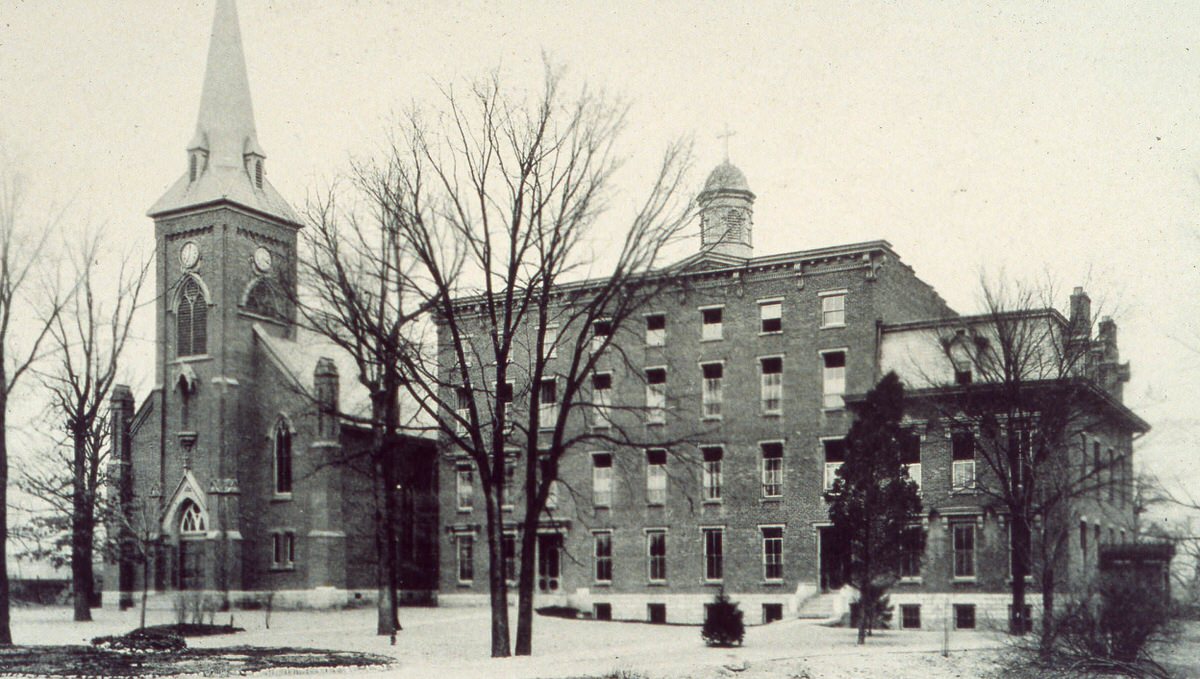
St. Vincent de Paul Orphan Asylum opened on February 2, 1875, with eight orphaned girls. It was run by the Franciscan Sisters of Penance and Christian Charity. The building was located on a seven-acre farm that Bishop Rosecrans purchased from Louis Zettler. Additions were constructed in 1878 and 1893. In 1973, it became St. Vincent Children’s Center. The original building was demolished May 15-16, 2007.
#3 Columbus Edison Electric Light Company, 1888
#4 Frank E Powell house, 1889
#5 Frank J Shedd house, 1889
#6 Douglas Elementary School, photograph, 1889
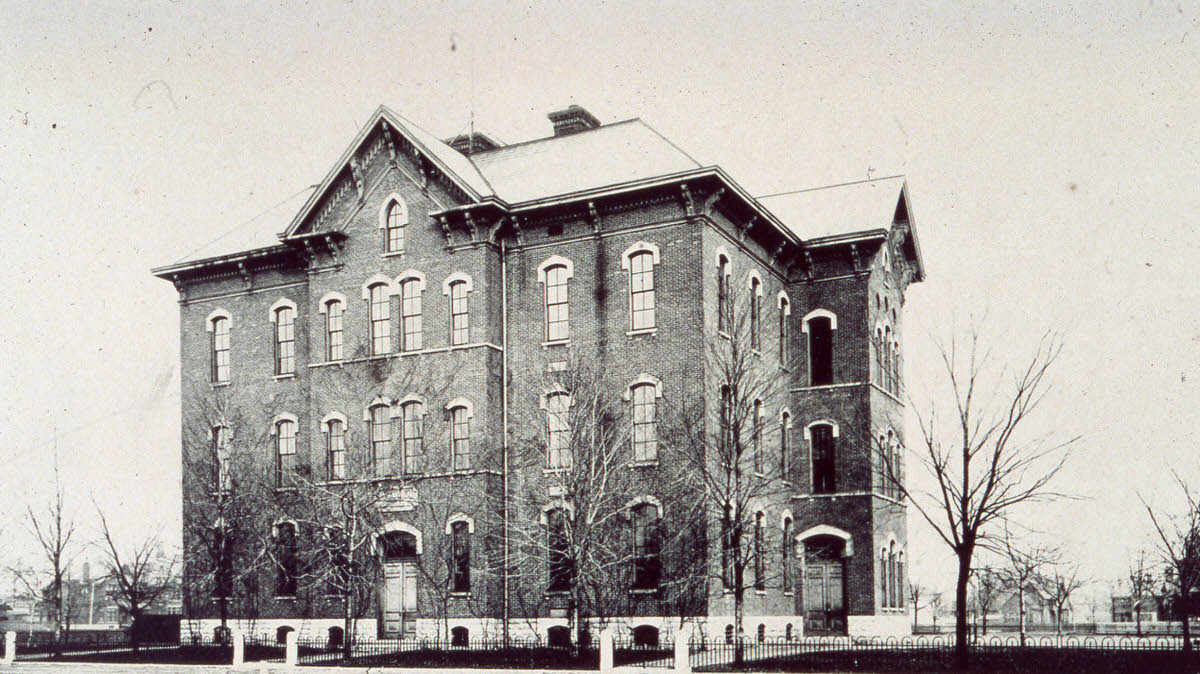
Douglass Elementary School was originally constructed in 1875-6, and serviced the old Seventh Ward, known as the silk stocking ward, because many of Columbus’ prominent families lived in the vicinity. An east annex, designed by local architect David Riebel, opened in April of 1902. In 1952 both buildings were extensively remodeled and joined together. The top two floors of the older building were also removed. The school was demolished in 1976, and replaced with Douglass School 2, which closed in June of 2010.
#7 Hare Orphan’s Home
#8 Columbus Club photograph, 1889
#9 Francis C Sessions house, 1892
#10 Franklin County Courthouse demolition, 1884
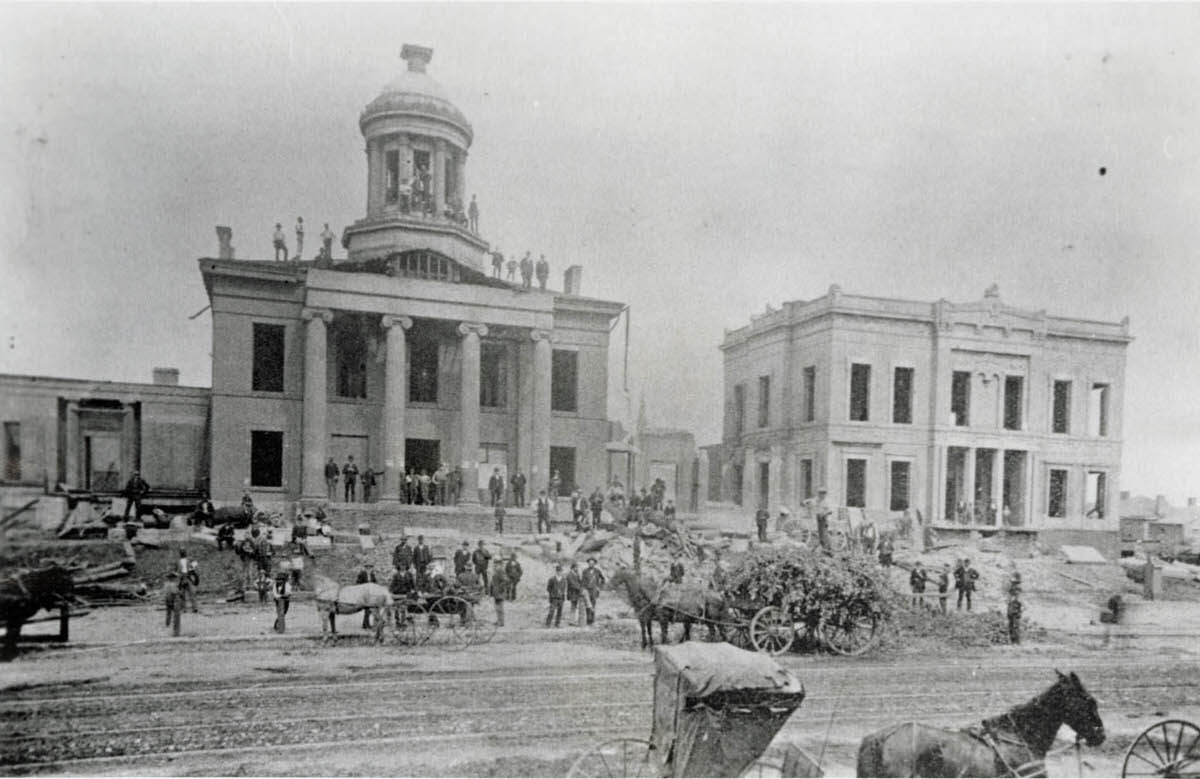
This courthouse was built in 1840 on the southeast corner of Mound and High Streets. On March 30, 1879, a fire destroyed many public records in the building. The caption for this photograph reads, "Court House in Process of Being Torn Away"; additional information within the book reads, "The large picture depicts a scene on a September morning in 1884, showing the workmen in the act of tearing down the old court house."
#11 Pioneer Block building engraving, 1885
#12 King Building photograph, 1889
#13 St Francis Hospital, 1889
#14 Holy Family Roman Catholic Church, 1889
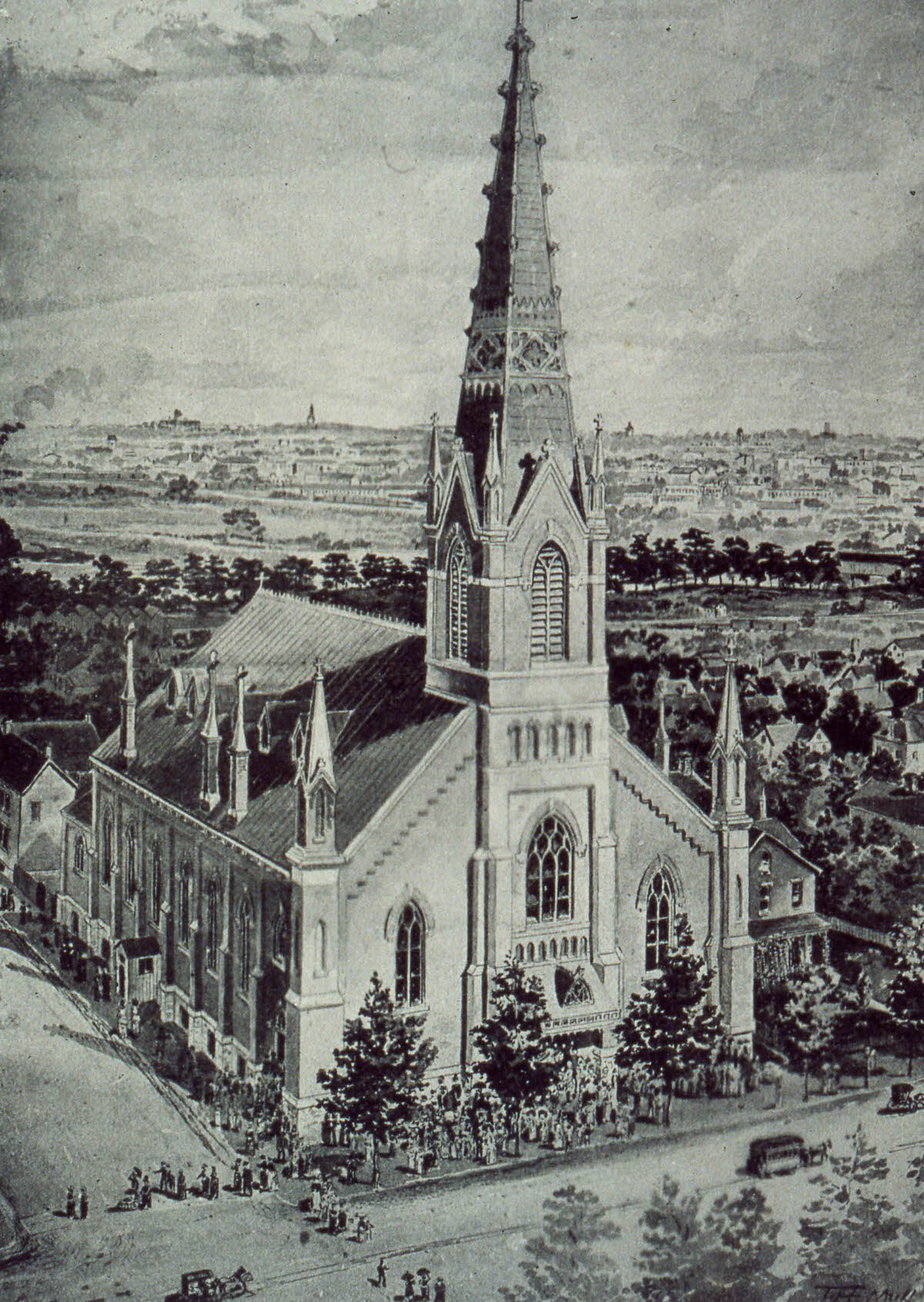
This is a black and white image of the Holy Family Roman Catholic Church. It was originally the United Brethren Church, and later became Memorial Baptist Church. Another site for the Holy Family Roman Catholic Church had a cornerstone laying on September 17, 1882, and its dedication on June 2, 1889
#15 Fifth Avenue Elementary School, 1882
#16 City Prison., 883
#17 First Garfield Elementary School building, drawing, 1885
#18 Eli Tappan house, 1889
#19 U.S. Barracks Ordinance Building, 1885
#20 Central Wesley Chapel Methodist Episcopal Church, 1889
#21 Looking east on East Broad Street from High Street, 1889
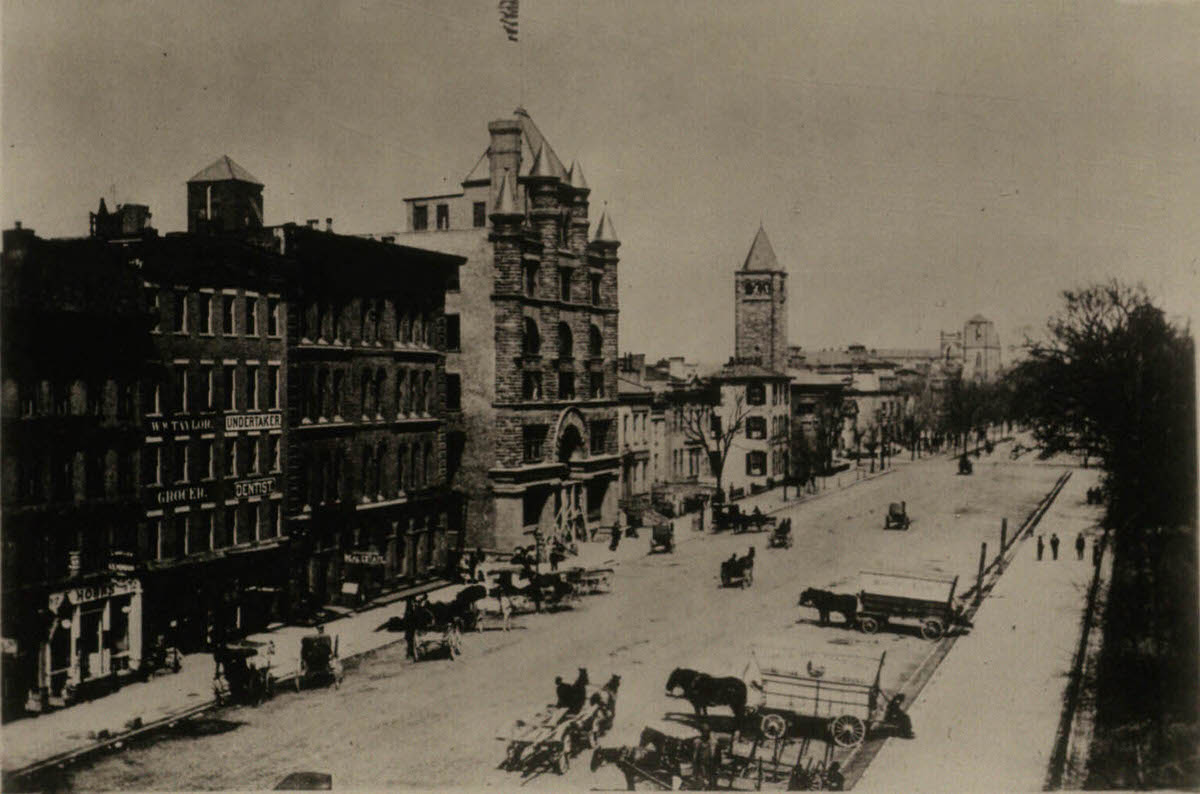
East Broad featuring from the left Edward G. Horn Liquors, 12 E. Broad; William Taylor Grocery, 14 E. Broad; the Hayden Clinton Bank, now the oldest building near Statehouse Square is at 20 E Broad; Board of Trade Building, 30 East Broad St. The tower in the distance is First Congregational Church. Board of Trade is now the site of the Rhodes State Office Tower.
#22 Monypeny Block building photograph, 1889
#23 Merchants and Manufacturers National Bank photograph, 1896
#24 Neil Avenue Methodist Episcopal Church, 1915
#25 Franklin County Children’s Home illustration, 1885
#26 Deaf and Dumb Asylum, 1889
#27 St. Anthony’s Hospital, 1889
#28 Charles E. Markeson house, 1889
#29 Botanical Laboratory on the Ohio State University campus, 1889
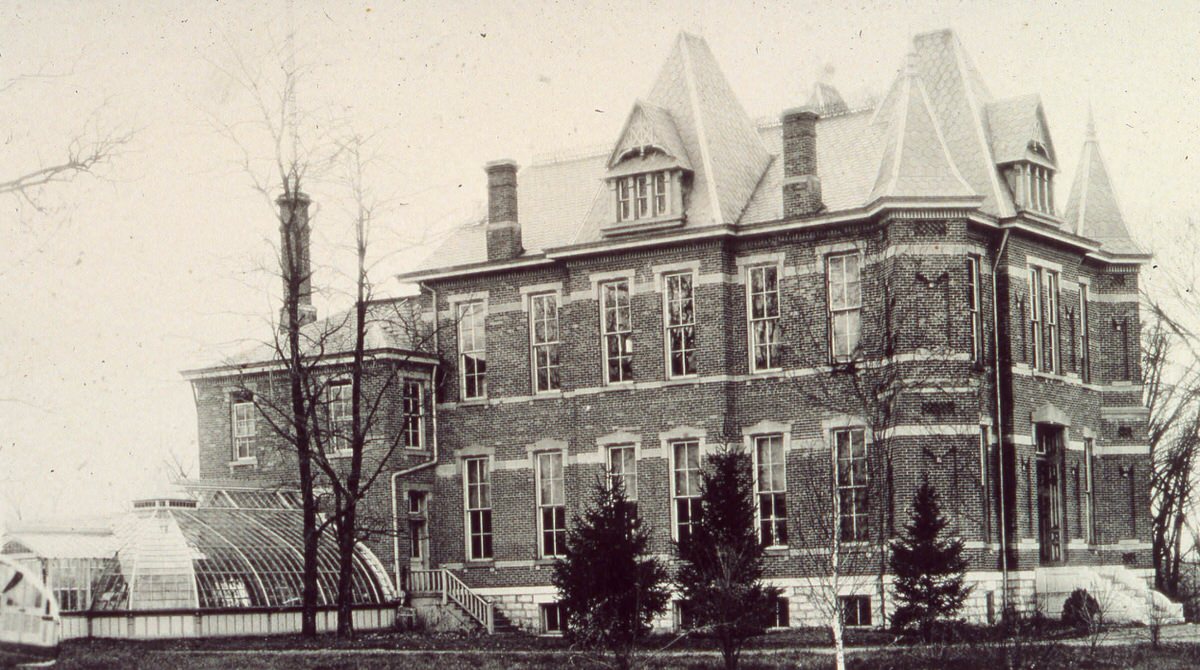
Black and white photograph of the Botanical Laboratory, then located at 181 South Oval Drive on The Ohio State University campus. The building was designed by J.T. Harris and Company, and construction was completed in 1884. It was demolished in 1941. Its site is currently the yard north of the Faculty Club.
#30 Siebert Street Elementary, 1892
#31 Twenty Third Street Elementary, 1889
#32 Allen G Thurman house, 1889
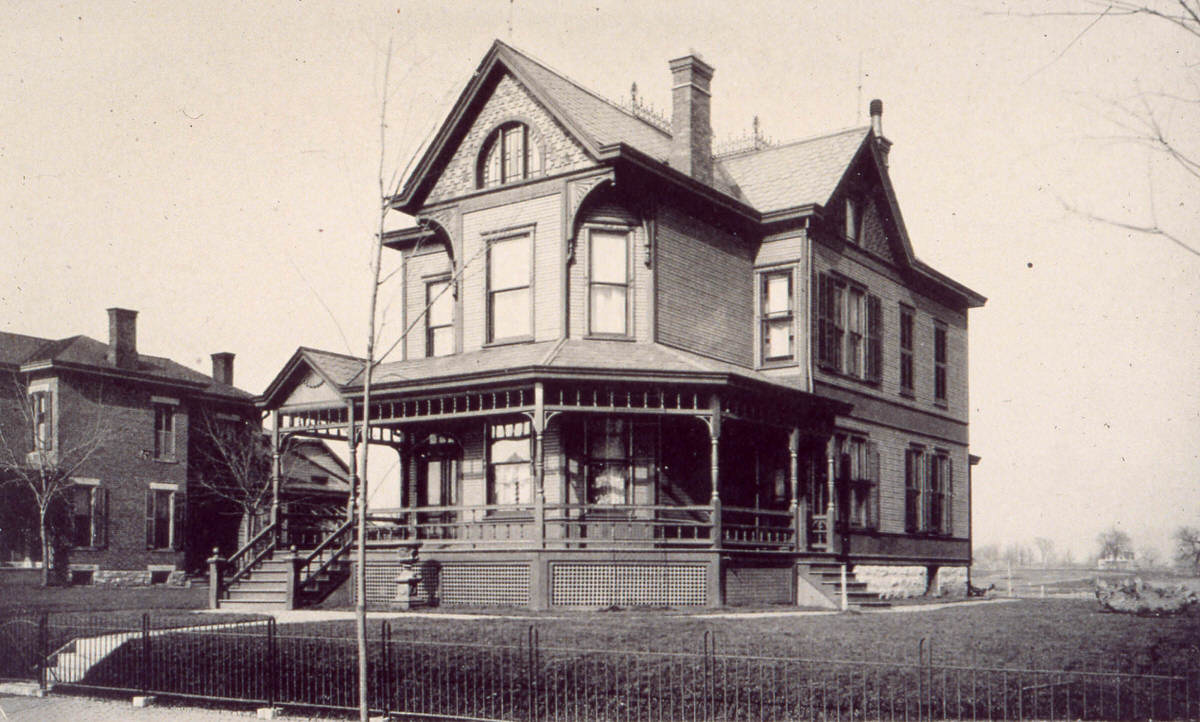
The residence of Allen Granberry Thurman (November 13, 1813 – December 12, 1895), who was a Democratic Representative, Ohio Supreme Court justice, and Senator from Ohio, as well as the nominee of the Democratic Party for Vice President of the United States in 1888. The house was built around 1885 with Queen Anne Style elements. After Thurman's death, his son, Allen W. Thurman, an attorney, lived in the house.
#33 Emerson McMillin house, 1889
#34 Oscar G. Peters house, 1889
#35 Residence of W. H. Jones, 1889
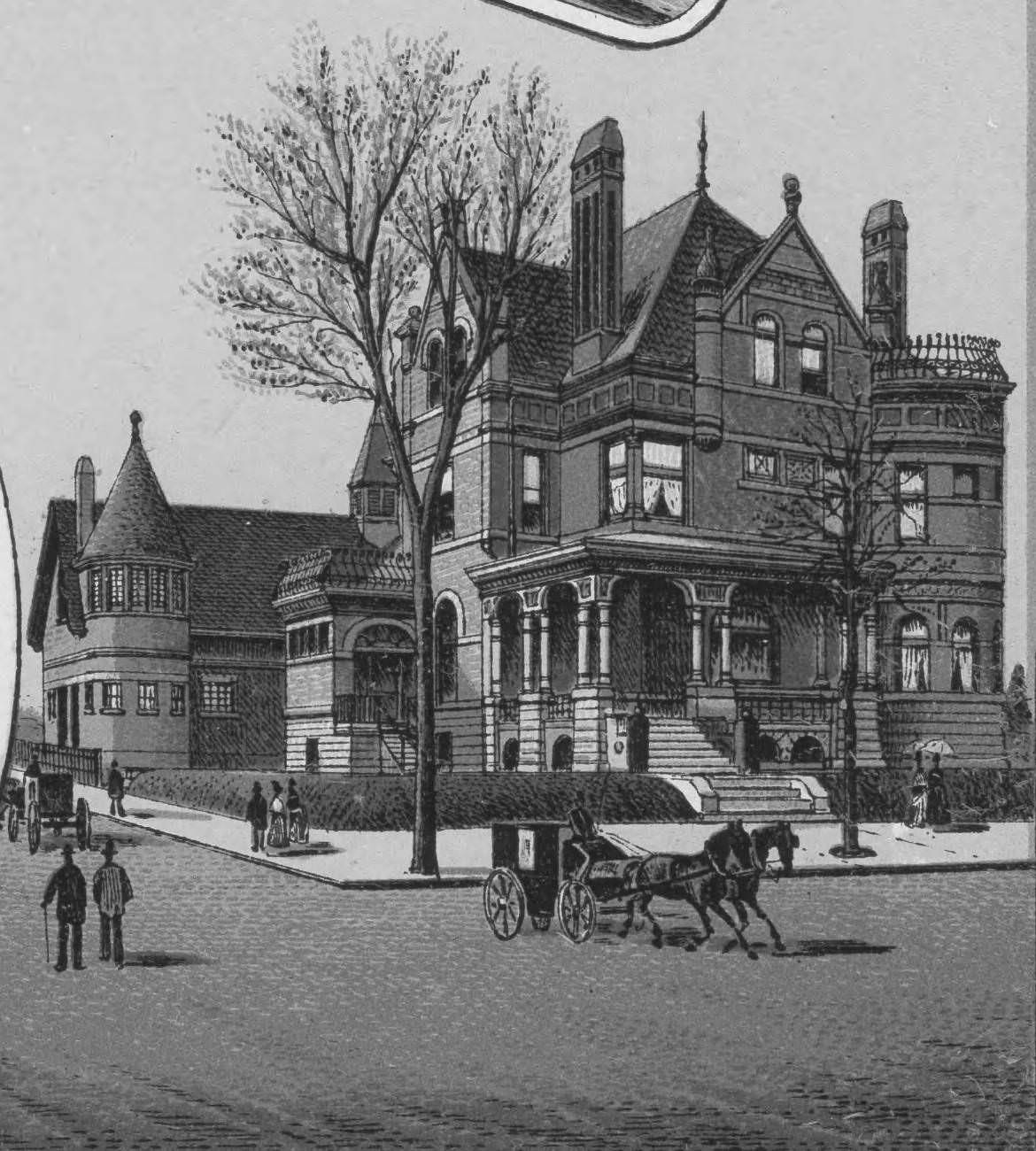
W. H. Jones was the owner of the Jones Dry Goods Store. He built this home in 1889 and lived there until 1923. The home still stands today and is currently home to Local Matters, a non-profit community organization. The home is also on the National Register of Historic Places.
#36 Church of the Good Shepherd building photograph, 1889
#37 Post Office and Custom House, 1889
#38 William H Andrews House, 1889
#39 William Y Miles House, 1889
#40 United States Post Office and Government Building, 1889
#41 Franklin County Courthouse, 1889
#42 Mt. Vernon Avenue Elementary School, 1888
#43 Lehmann Hall, Capital University, 1889
#44 Hawkes Hospital (now Mount Carmel Hospital), 1889
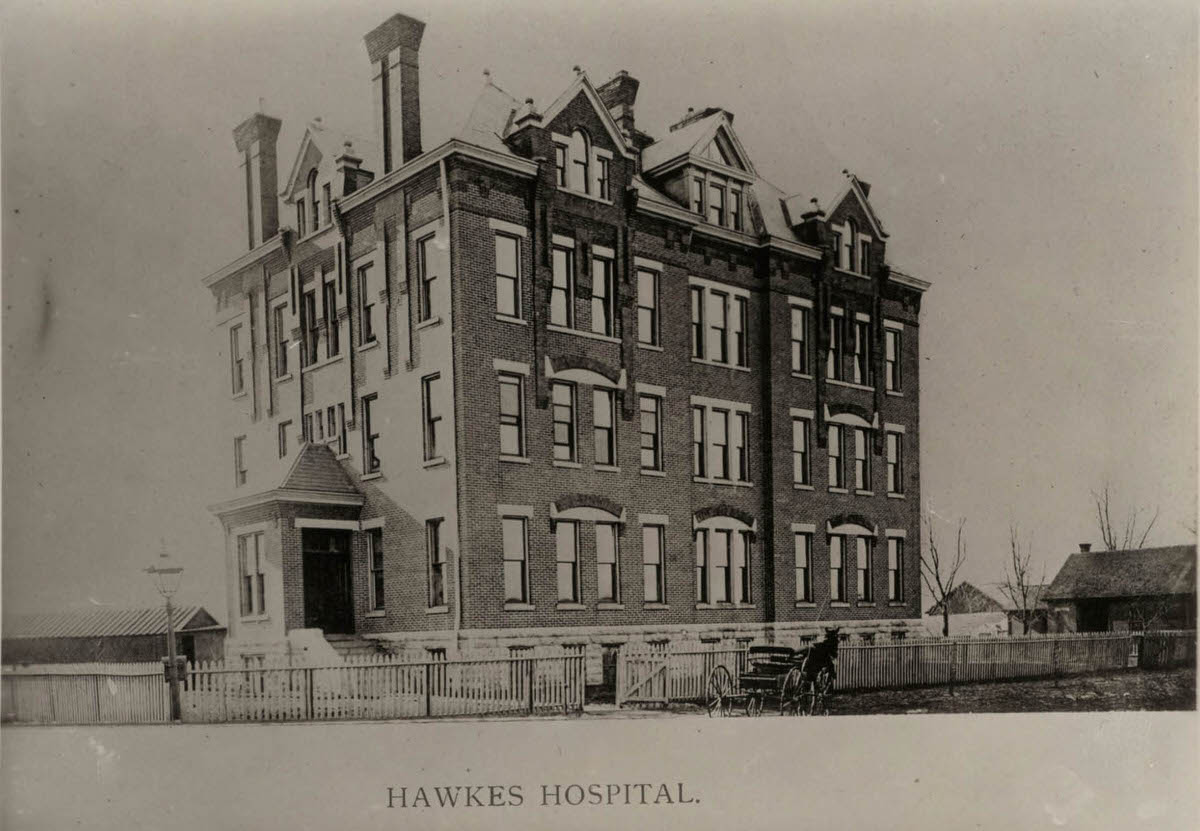
Dr. W. B. Hawkes donated the initial funds to build a hospital in Franklinton in 1885. He died soon after and Dr. John Hamilton continued the project, seeing to completion the four-story brick building which was dedicated on July 16, 1886 as Mount Carmel Hospital. Dr. Hamilton was instrumental in bringing the sisters of the Holy Cross to staff the new hospital. This original building was commonly known as Hawkes Hospital.
#45 Governors’ Mansion, 1890
#46 Engine House, 1886
#47 John Joyce House, 1889
#48 Union Station No. 2, 1883
#49 Broad Street Methodist Episcopal Church, 1889
#50 George M Peters House, 1889
#51 Edward Denmead house, 1885
#52 GAR Parade, 1888
#53 Schiller Park Lake and fountain, photograph, 1889
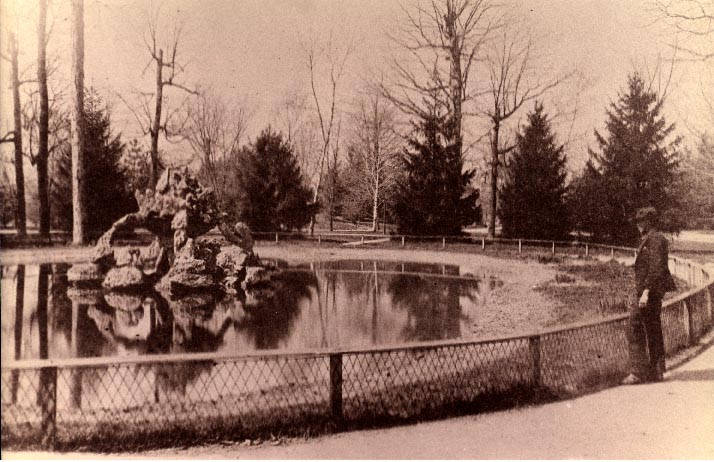
This is a picture of the Schiller Park Lake and Fountain. Land in the German Village area owned by Francis Stewart in the 1830s and used for local celebrations became known as Stewarts’ Grove. It was the site for the Ohio State Fair in 1864 & 1865. The City of Columbus purchased 23 acres of Stewarts’ Grove in 1867 and re-named it City Park. Improvements were added including a lake with a fountain and foot bridge, an amphitheater and shelter house. The statue of the famous German poet, Johann Christoph Friedrich von Schiller was erected on July 4, 1891. On April 3, 1905 the Park was re-named Schiller Park. On May 27, 1918, during World War I, the Parks’ name was changed to Washington Park because of local anti-German sentiments. The previous name was reinstated on April 7, 1930 and remains Schiller Park to this day. The Park is the second oldest park in the City of Columbus.
#54 Bott Brothers Billiards entrance, 1880s
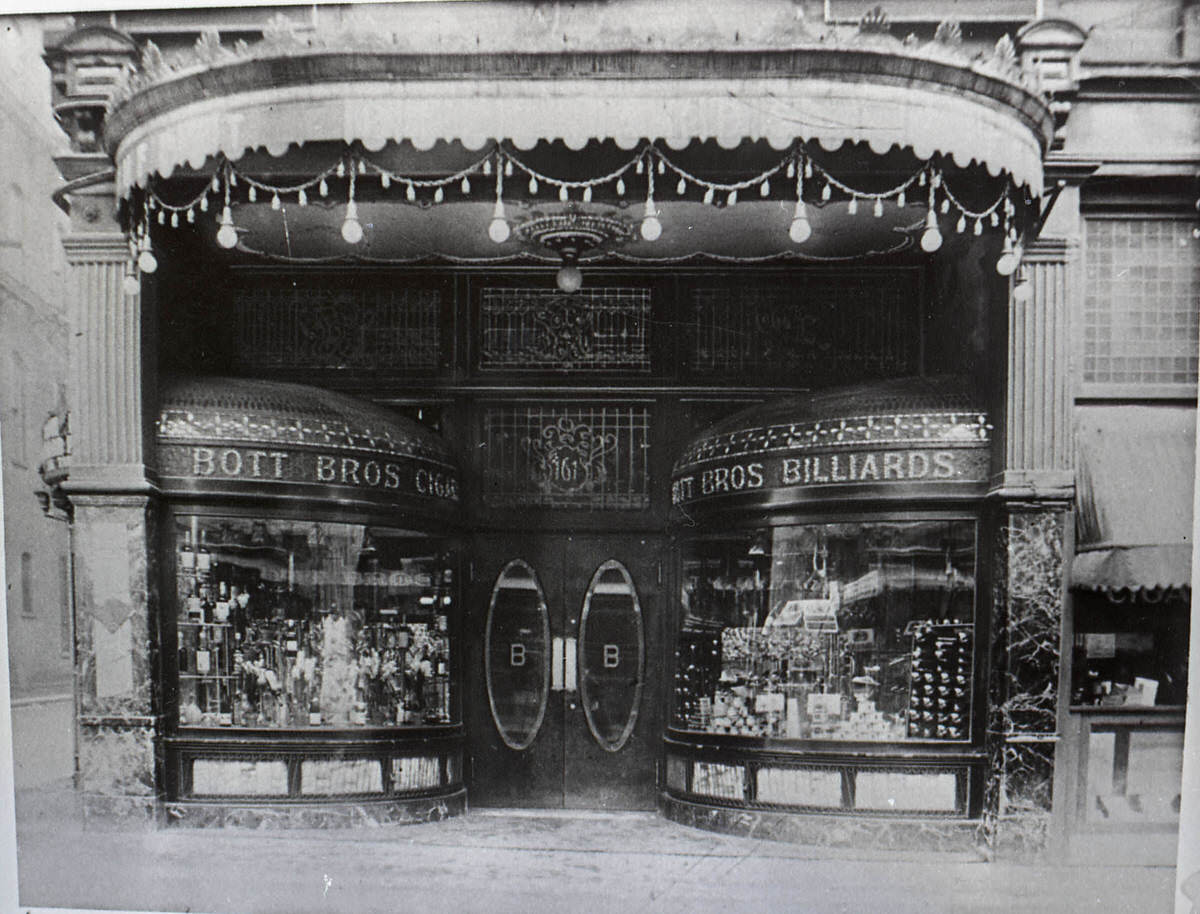
Black and white photograph of the entrance to Bott Brothers Billiards.Bott Brothers Billiards was a saloon and billiard parlor co-founded by brothers Joseph F. Bott and William Bott in 1890. Located in the present-day Larrimer Building at 161 North High Street, the business closed in 1919 and later became known as The Clock Restaurant, followed by The Elevator Brewery and Draught Haus.
#55 Main and Oak Street strike headquarters. June 7, 1890
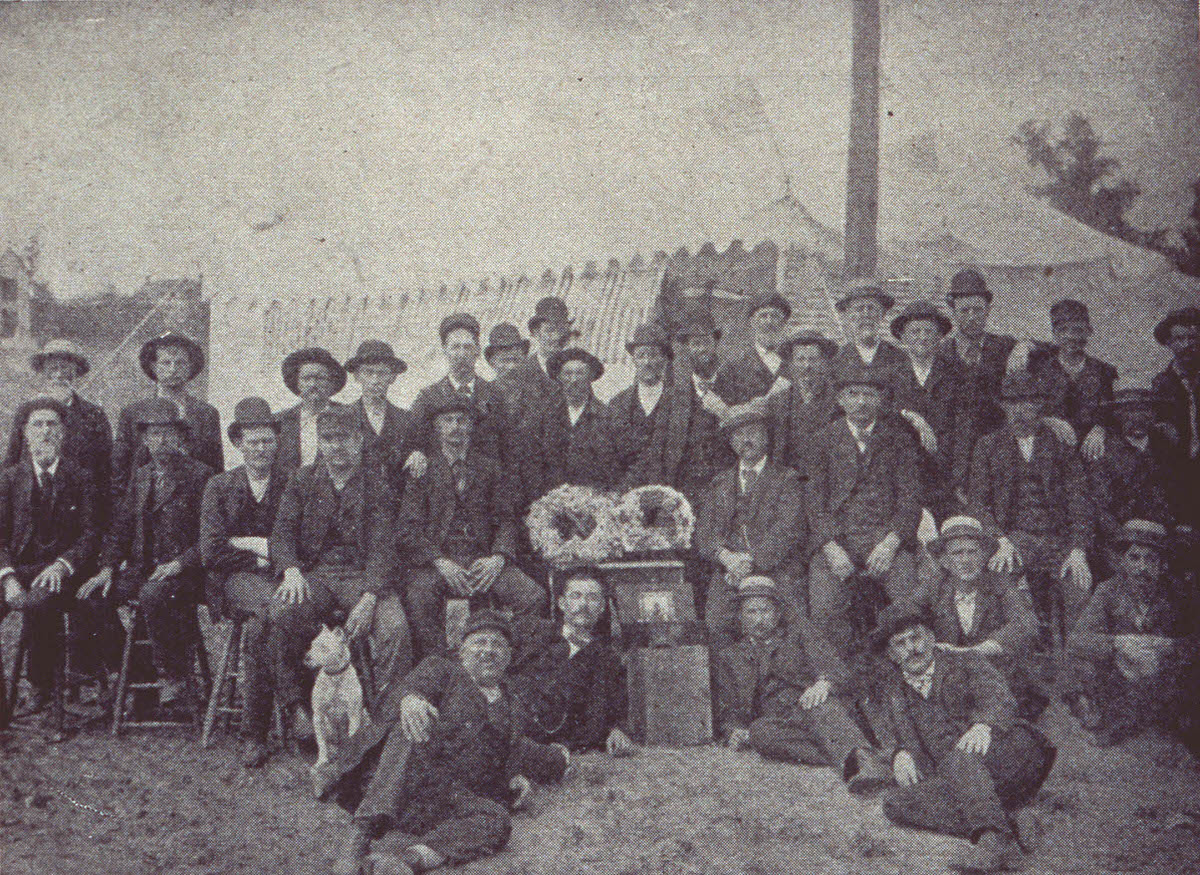
Streetcar strikers in front of their "Main and Oak Street" headquarters. The strike started on June 3, 1890 when workers organized a union to secure shorter hours and an increase in wages. By June 9 an agreement was reached for a reduction of their day’s work from sixteen to twelve hours. They also achieved an increase in their wages.
#56 Schiller Park lake and boathouse,1889
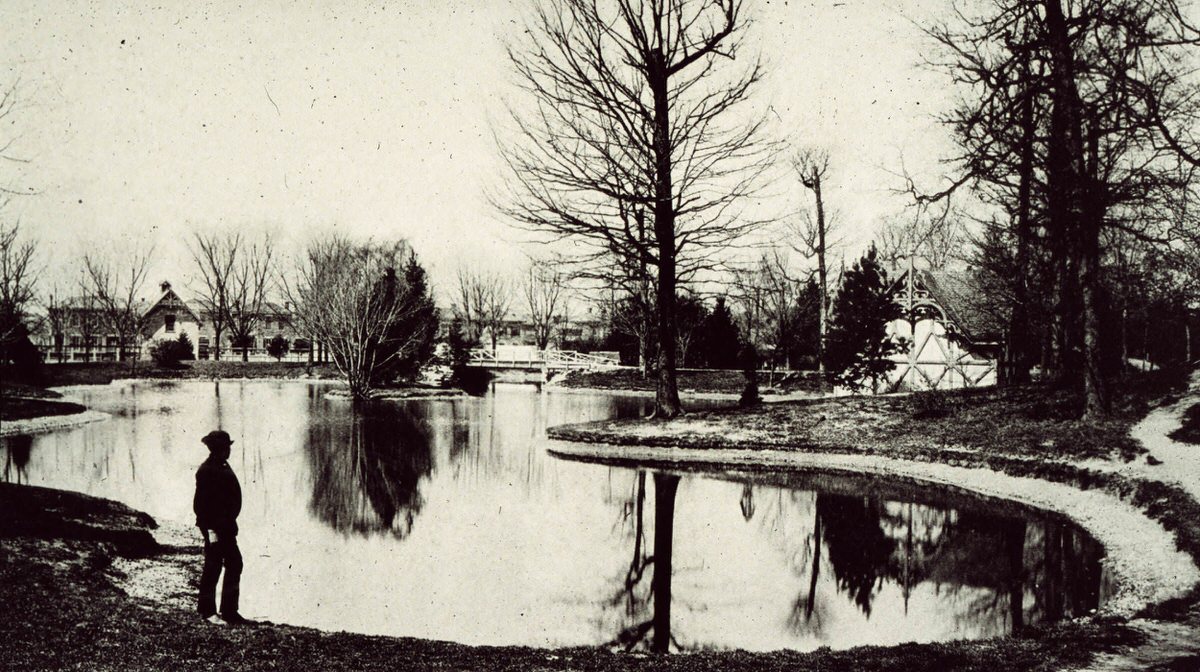
A view of the lake and boathouse at Schiller Park. Land in the German Village area owned by Francis Stewart in the 1830s and used for local celebrations became known as Stewarts’ Grove. It was the site for the Ohio State Fair in 1864 & 1865. The City of Columbus purchased 23 acres of Stewarts’ Grove in 1867 and re-named it City Park. Improvements were added including a lake with a fountain and foot bridge, an amphitheater and shelter house. The statue of the famous German poet, Johann Christoph Friedrich von Schiller was erected on July 4, 1891. On April 3, 1905 the Park was re-named Schiller Park. On May 27, 1918, during World War I, the Parks’ name was changed to Washington Park because of local anti-German sentiments. The previous name was reinstated on April 7, 1930 and remains Schiller Park to this day. The Park is the second oldest park in the City of Columbus.
#57 Frederick W. Atcherson Co Livery images, 1885
#58 Paul Mone Grocery photograph, 1881
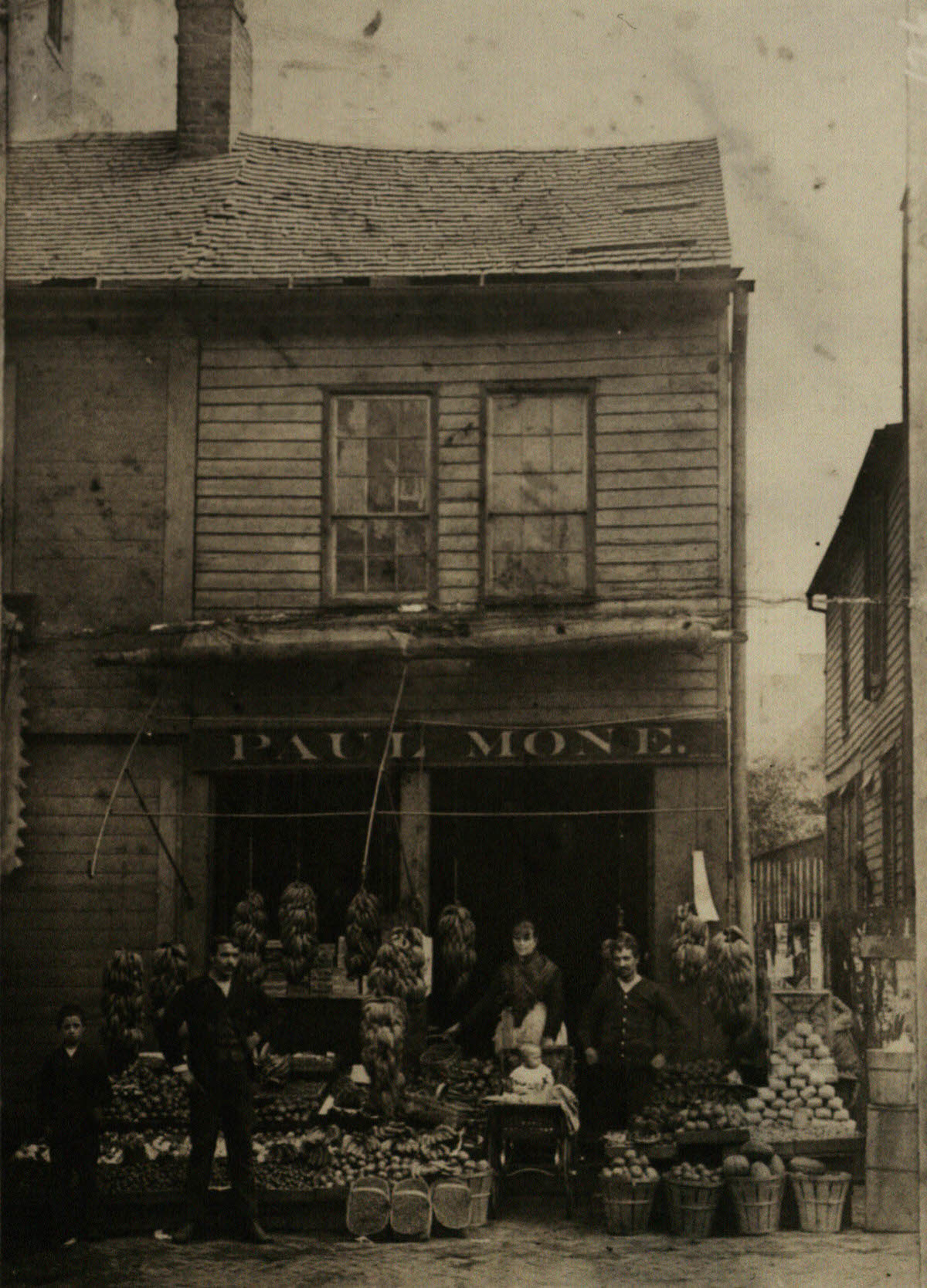
According to city directories, the first listing for Paul Mone's store appears in 1884 and the last listing appears in 1889. The store was located at the corner of Long and North High Streets. Photograph was submitted by Mr. Paul Mone of 871 Seymour Avenue with the date of 1851.
#59 Saul and Eberly Grocery building illustration, 1888
#60 Columbus Electric Light and Power Company, 1889
#61 Obed Taylor House, 1890
#62 Columbus Cart Company, 1890
#63 Columbus Watch Company building, 1889
#64 Grand Army of the Republic parade, 1888
#65 Parade of Colored Knights Templars, 1888
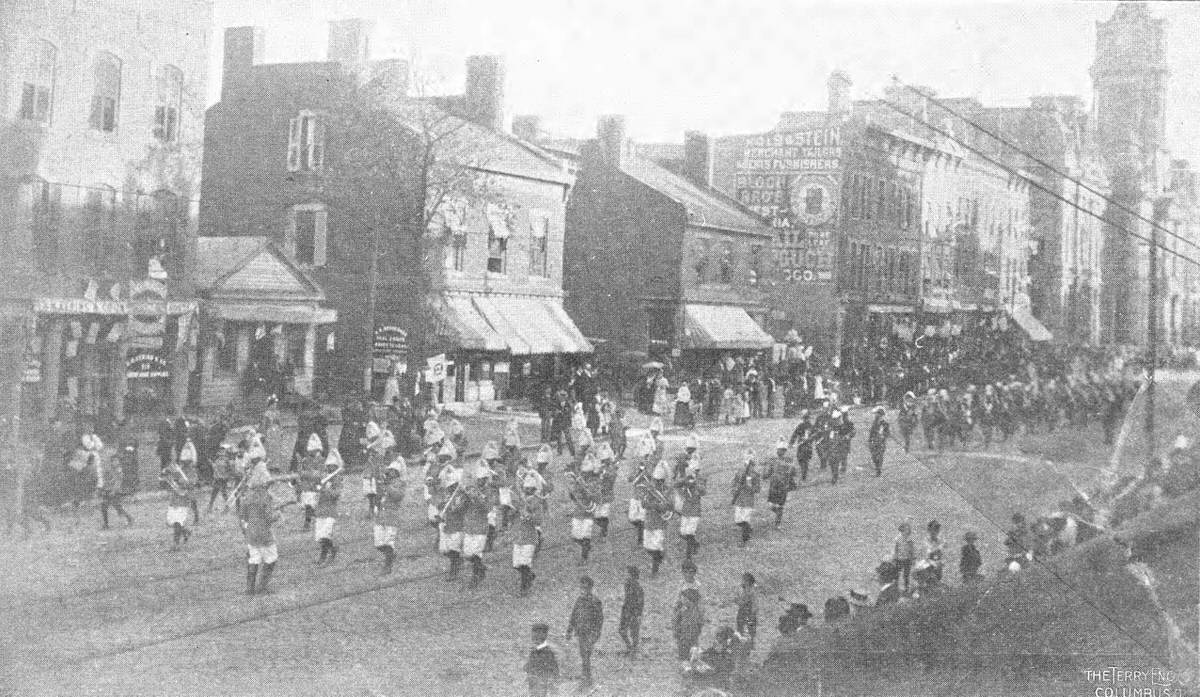
This parade of the colored Knights Templars of Ohio was on the occasion of their ninth annual conclave in 1888. The view represents them escorting Grand Eminent Commander Alex Morris from his stopping place to the hall in which the sessions were held. The affair was a very important one in African American circles, and was largely attended, many handsomely uniformed and well drilled organizations being present.
#66 Henry M. Neil House, 1889
#67 Franklinton Elementary School, photograph, 1889
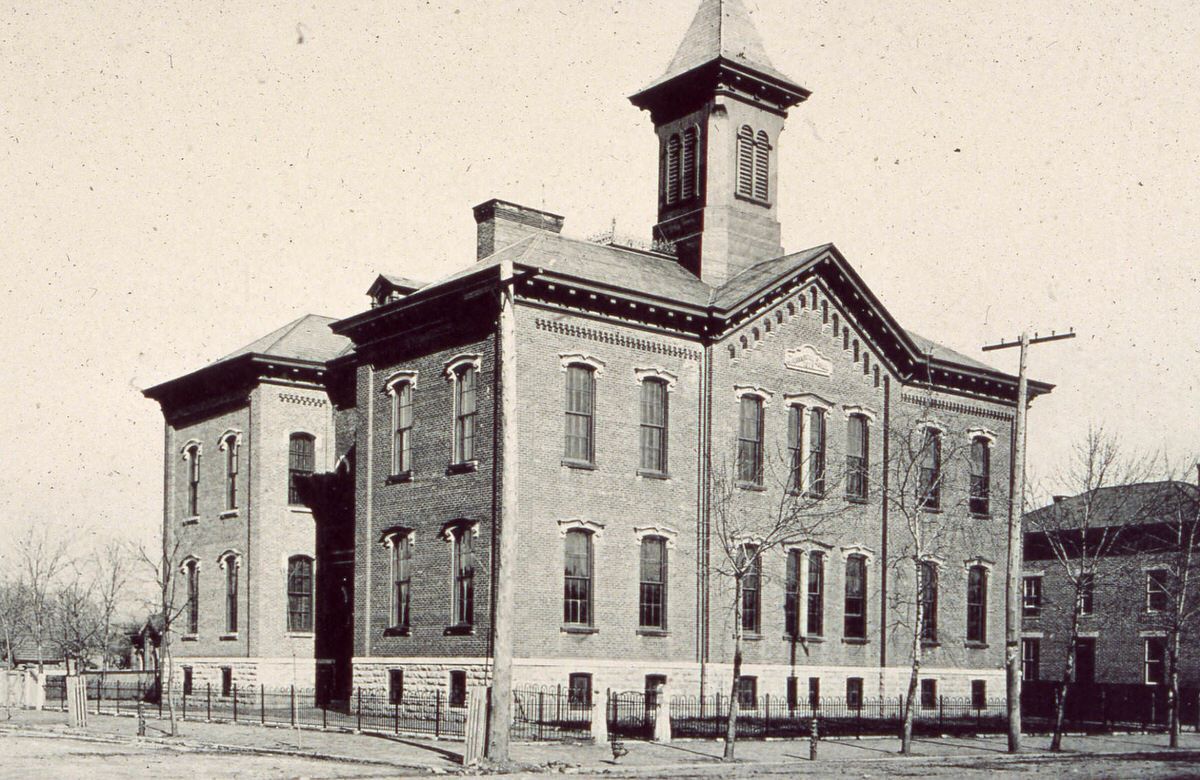
The cornerstone for the first Franklinton Elementary School was laid in August of 1877 on the site of the first Franklin County courthouse in Franklinton. The original cornerstone of the courthouse was found while preparing the site for the school foundations. The first building had four rooms and cost $10,500. A four-room addition was added in 1879 for $11,140. Another four-room addition was constructed before 1900. The school was demolished on March 13, 1956 to prepare for freeway construction.
#68 William Shepard House, 1889
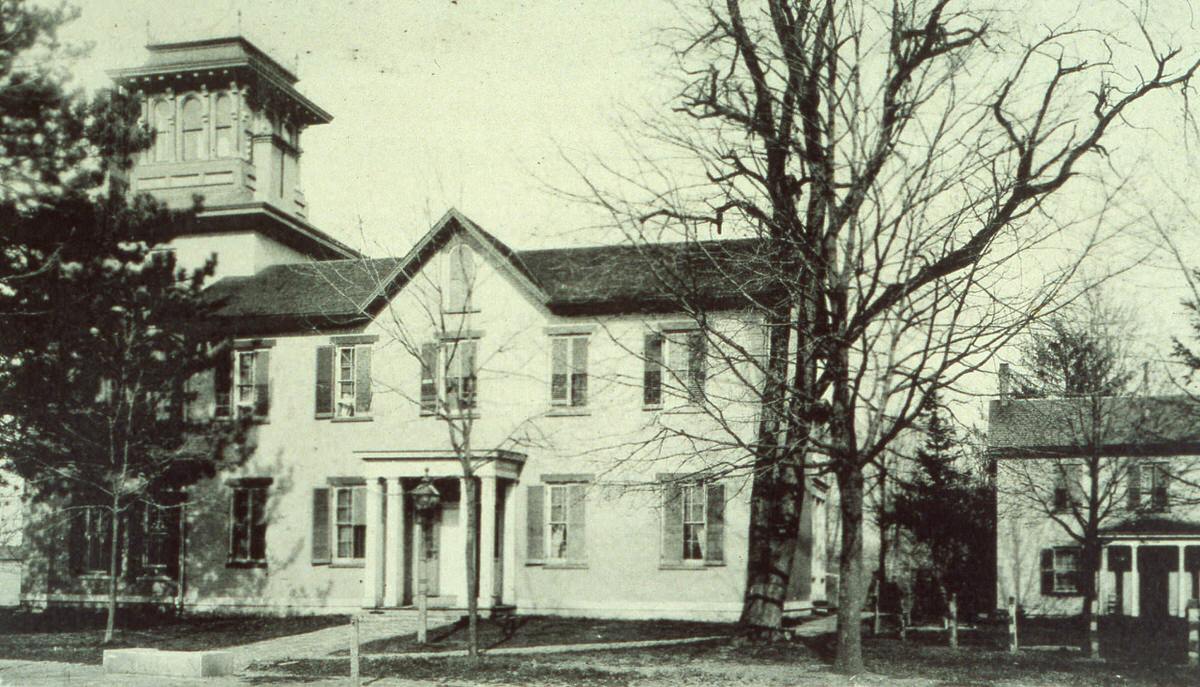
William Shepard House and Sanitarium opened 3/30/1855 and burned 10/7/1981 and was the namesake for the community of Shepard, Ohio. It served as Big Sisters Home 1919-1952 and Columbus Childrens Psychiatric Hospital 1953-1973. The Shepard Branch of the Columbus Metropolitan Library opened on this site 6/14/1985.
#69 The Parade Ground, United States Barracks, 1883
#70 Philip H Bruck House, 1889
#71 Franklin County Courthouse and Annex postcard, 1884
#72 Iron Buggy Company building, 1898
#73 Deshler Block building engraving, 1885
#74 Columbus Watch Company interior, 1890
#75 Elah Terrell house, 1889
#76 Ohio Centennial opening parade. September 4, 1888
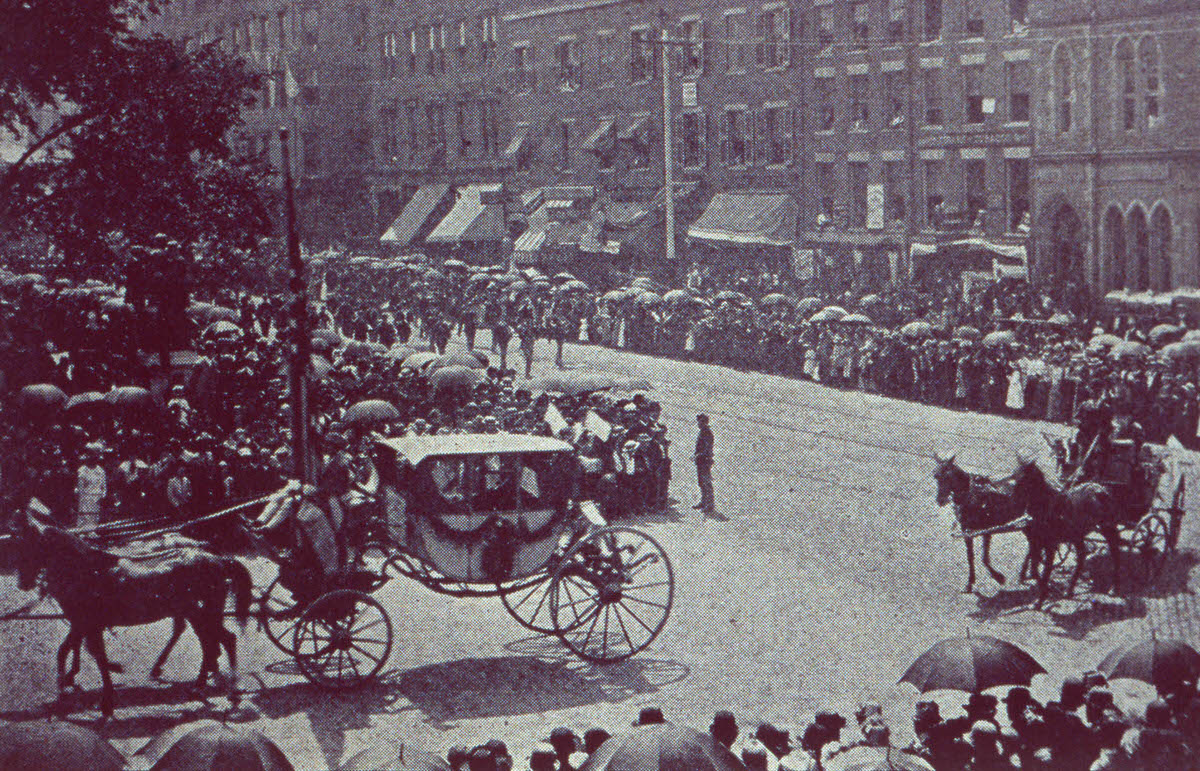
The caption reads, "Opening Parade Ohio Centennial. The text explains that "the opening exercises of the Centennial took place on September 4" and featured the participation of the entire state militia and a coach formerly owned by George Washington, which is seen here just as it is turning the corner of High and Broad Streets.
#77 Clinton Building, 1889
#78 St. Joseph’s Orphan’s Home, 1889
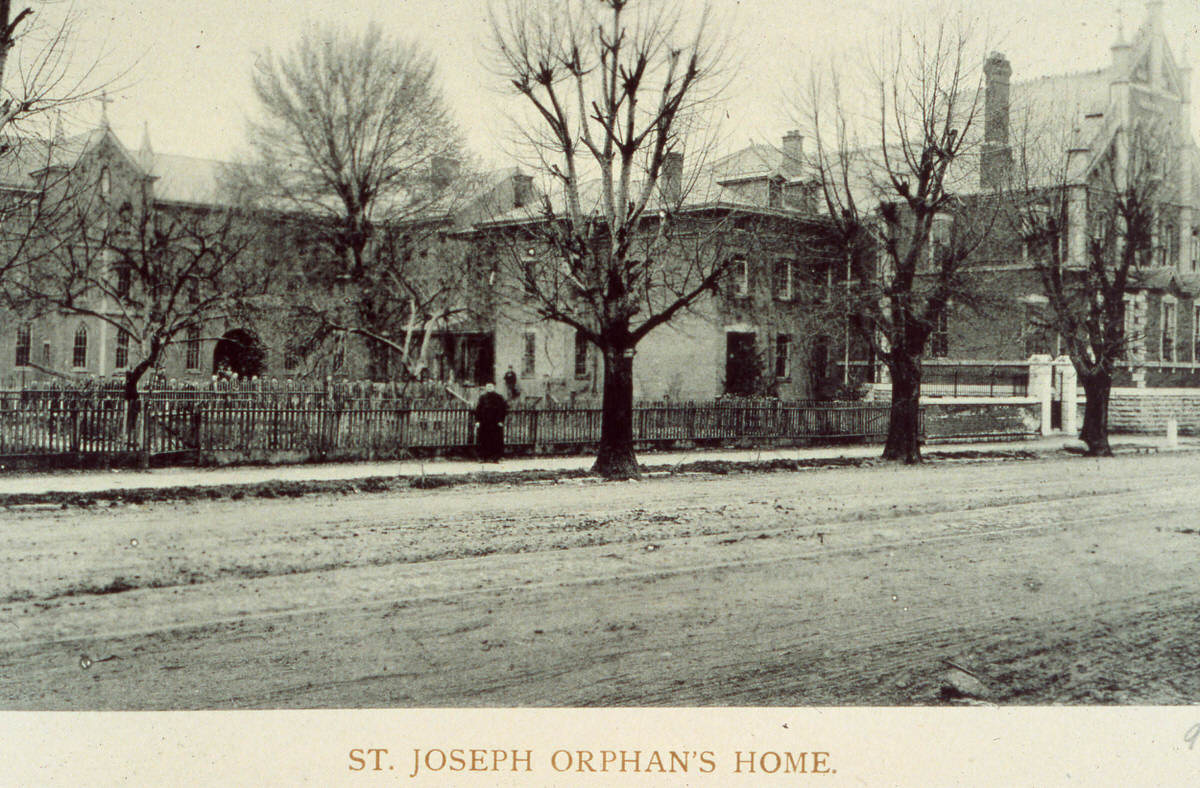
Winter view of St. Joseph's Orphan's Home on Main Street in Old Towne East. Image shows a priest standing along the sidewalk out front of the orphanage. Children fill the courtyard between buildings. St. Joseph's was established by Father Joseph Jessing in 1877 and later moved north when it merged with Jessing's Pontifical College eleven miles north of Columbus in 1931.
#79 Union Station Tunnel and temporary wooden viaduct, 1888
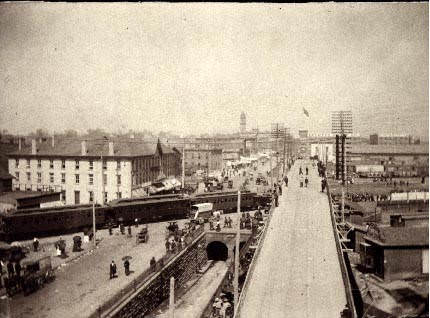
Union Station Tunnel and temporary wooden viaduct built for the GAR National Encampment in 1888. Large building on the left is the Exchange Hotel or Powell House, 365-373 North High Street. The Powell House closed in December 1893 to make room for the new High Street Viaduct.
#80 Greenlawn Cemetery photograph, 1889
#81 Odd Fellows Temple photograph, 1890
#82 James H Anderson House, 1889
#83 Green Joyce Building, 1887
#84 Frech Brothers Saloon building, September, 1888
#85 George Bauer Bakery, 1882
#86 Columbus Board of Trade building, 1889
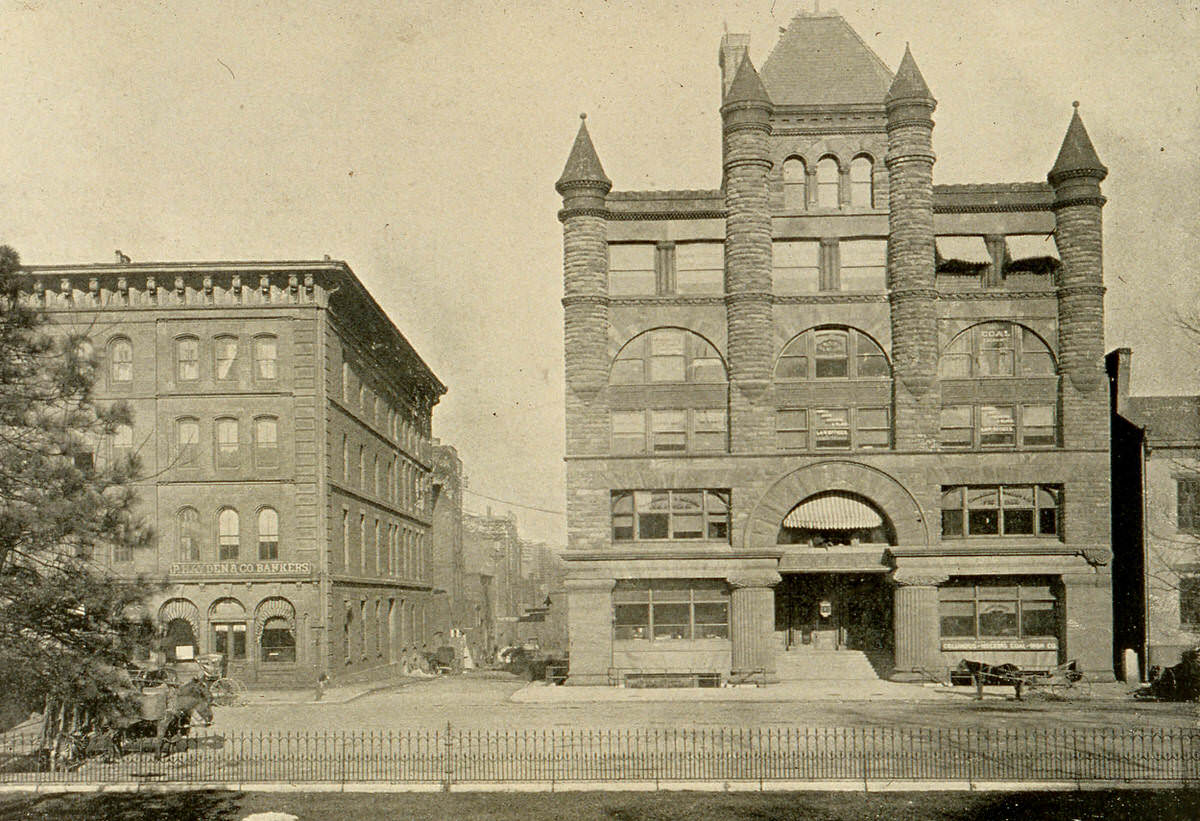
Columbus Board of Trade. Photo by Baker at time of completion. Much of the prosperity of Columbus was due to its live Board of Trade, which embraced some eight hundred business men, representing every branch of the city's activity. A feature of its work had been the conducting of buyers' excursions, which had induced hundreds of merchants from near and distant points to come to Columbus to do their trading. The Board had a permanent fund for the entertainment of the numerous conventions which met here. The headquarters of the Board were located here, but the premises in the main served the purpose of an office building. The building also contained a fine auditorium. The building opened on July 23, 1889 and closed in August 1964. The building was demolished in 1969.
#87 GAR Parade, 1888
#88 GAR Encampment, 1888
#89 GAR Parade, 1888
#90 GAR Parade, 1888
#91 GAR Parade, 1888
#92 GAR Encampment, 1888
#93 GAR Encampment, 1888
#94 GAR Parade, 1888
#95 Hoffman Ave Residential District, 1889
#96 Columbus Buckeyes, 1890
#97 Fourth Street Residential District photograph, 1889
#98 Boaters on the lake at Lake Park, 1889
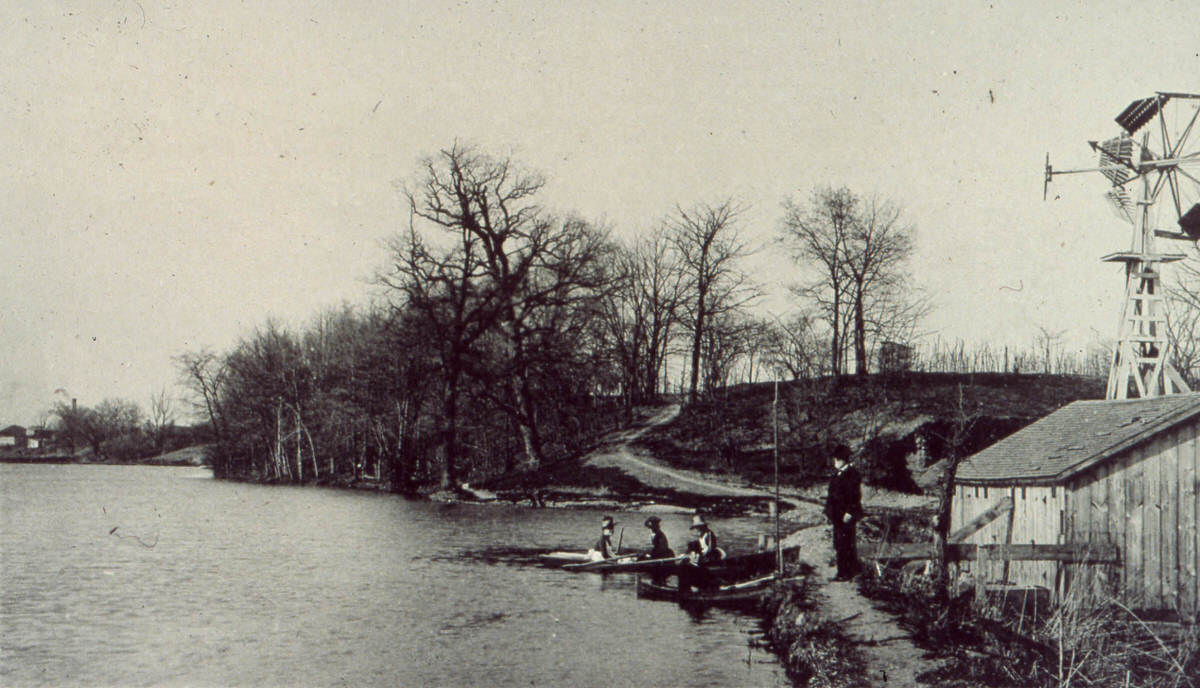
Boaters on the lake at Lake Park. This picnic area was purchased by Jonathan Linton in 1873 from the ninety-acre Henderson Farm. It was located at the intersection of Haul Road and SR 104 (Frank-Refugee Expressway). It was most likely an old flooded quarry. Listed in the Columbus City Directory 1888-92. Caption reads: "Lake Park from the south."
#99 Grand Army of the Republic Parade, 1888
#100 Old Piatt Mill on the Olentangy River, 1890s
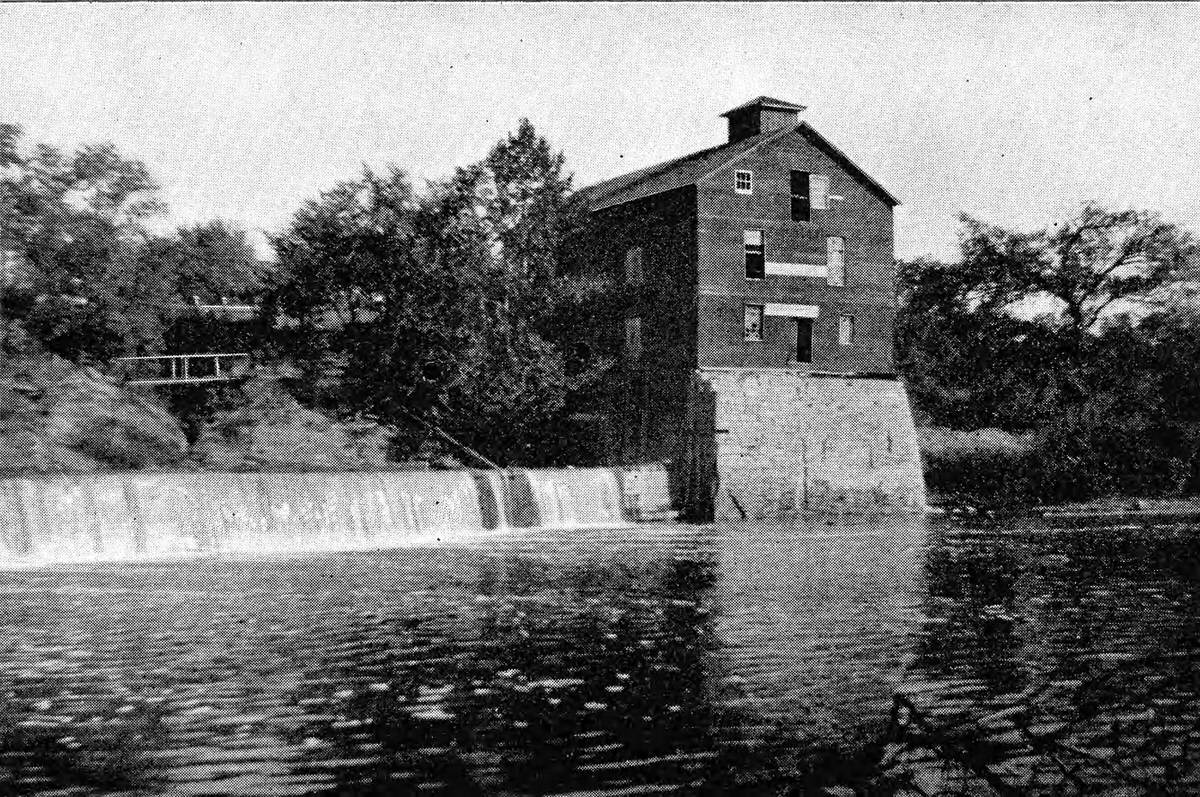
The Piatt Mill stood on the banks of the Olentangy River in north Columbus for nearly a century. The original dam and mill were constructed by David Beers in 1810. The site of the mill is just north of the present day Dodridge Street bridge. Beers owned the land the mill was located on. Darius Wilcox built a sawmill adjacent to the flour mill. The mills later came to be owned by the John James Piatt family. The buildings burned down on June 13, 1902. The area just to the east and north is where Olentangy Amusement Park was located.
#101 N 3rd St at Lynn is at foreground center, 1881
#102 South High Street looking north from Mound Street, 1889
#103 East Lake at Goodale Park, 1889
#104 North High Street looking north from Gay Street, 1889
#105 South High Street and East Main Streets ,1890
#106 Pride of Columbus horse-drawn fire wagon, 1888
#107 Old High Street Horsecar, 1888.
#108 The General Locomotive with survivors of Andrews Raid, 1888
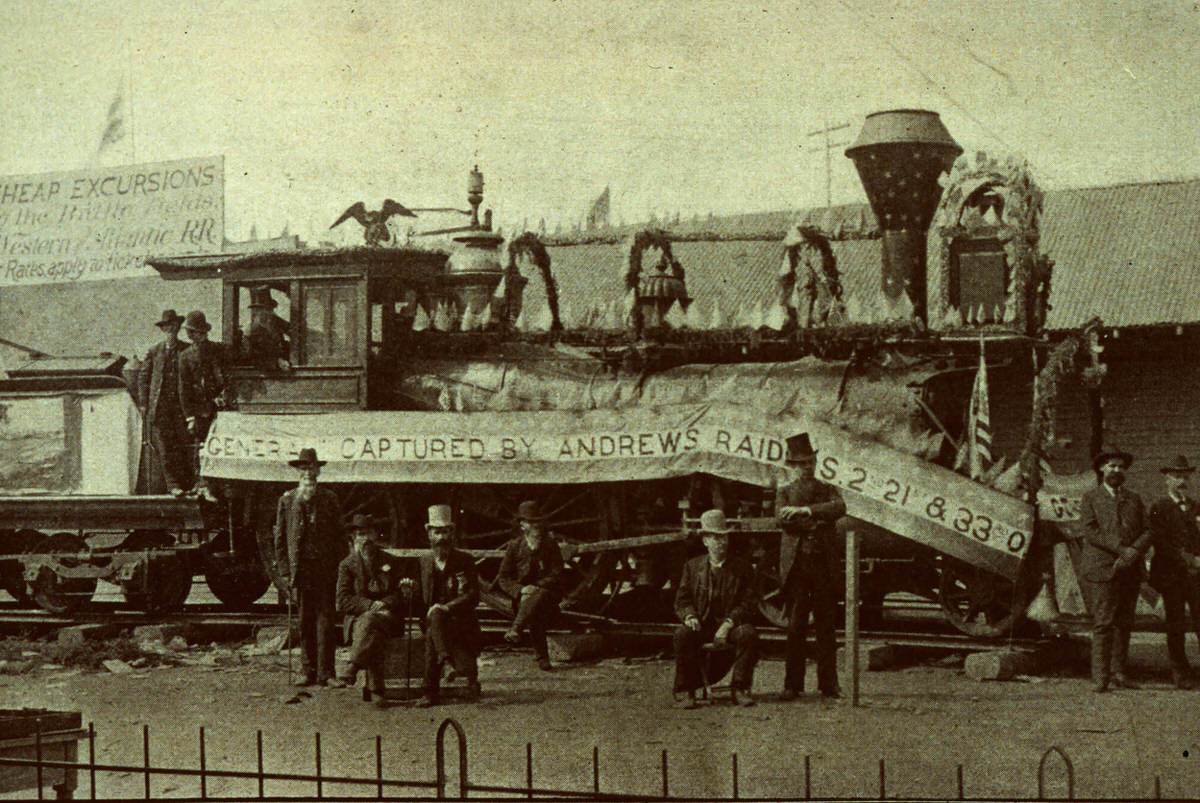
The General locomotive of Andrews Raiders fame is shown here at the Grand Army of the Republic 22nd National Encampment, September 1888. Featured are the survivors of the raid including the first men to win the Congressional medal of honor, one being the very first, Jacob Parrott.
#109 East Broad Street Residential Scenel, 1889
#110 South High Street looking southwest from Broad Street, 1889
#111 Aerial view of downtown Columbus, 1881
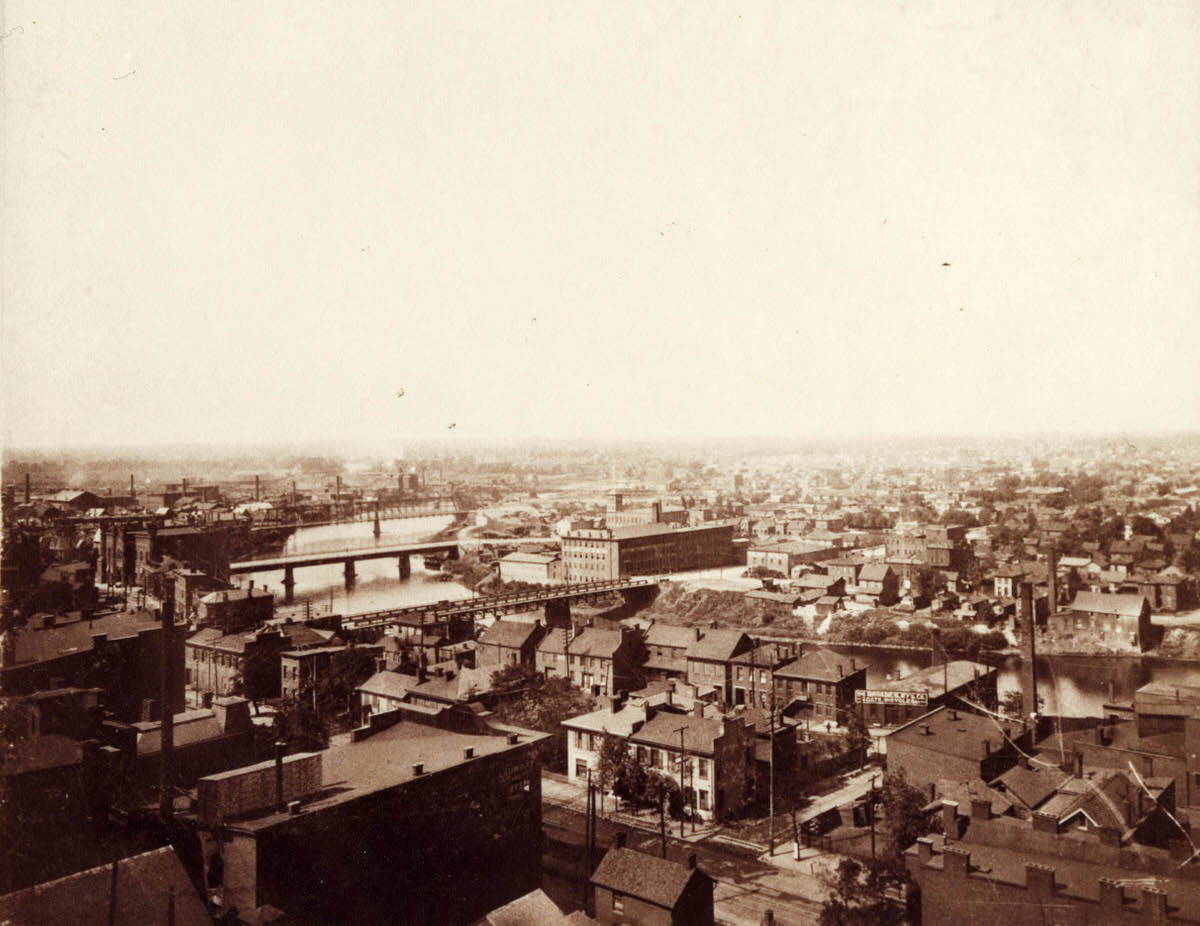
Aerial view of downtown Columbus looking southwest across the Scioto River. The view is south of Broad Street. South Front Street is in the foreground. The State Street and Town Street bridges can be seen. Also in the photograph is the Rhoades Manufacturing Company, makers of boats and bicycles, at 33 South Scioto Street, and the City Prison at 150 South Scioto Street. This undated photo was probably taken in the late 1880s or early 1890s when the Rhoades Company was located on the southwest corner of Scioto and Capital Streets.


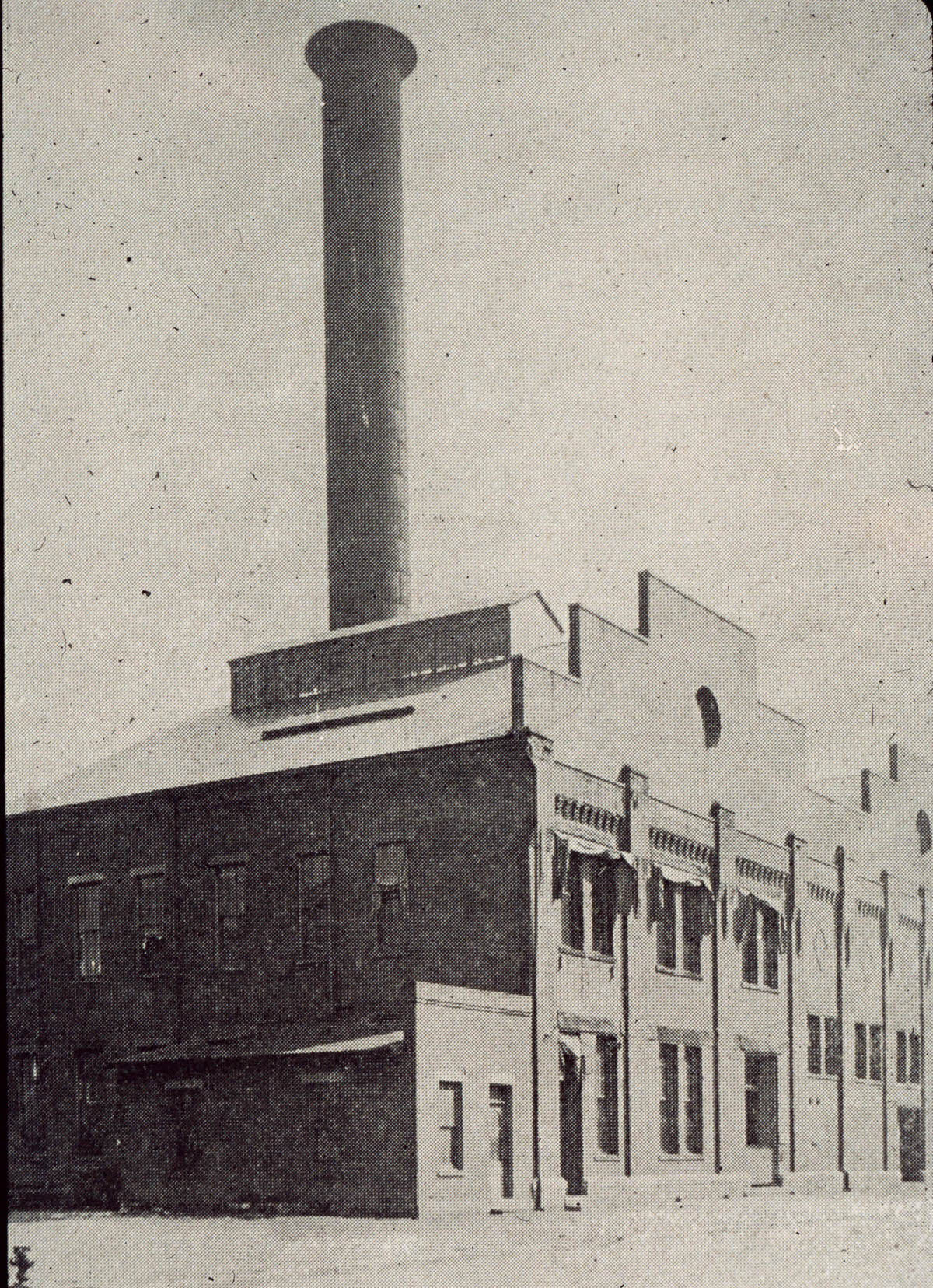
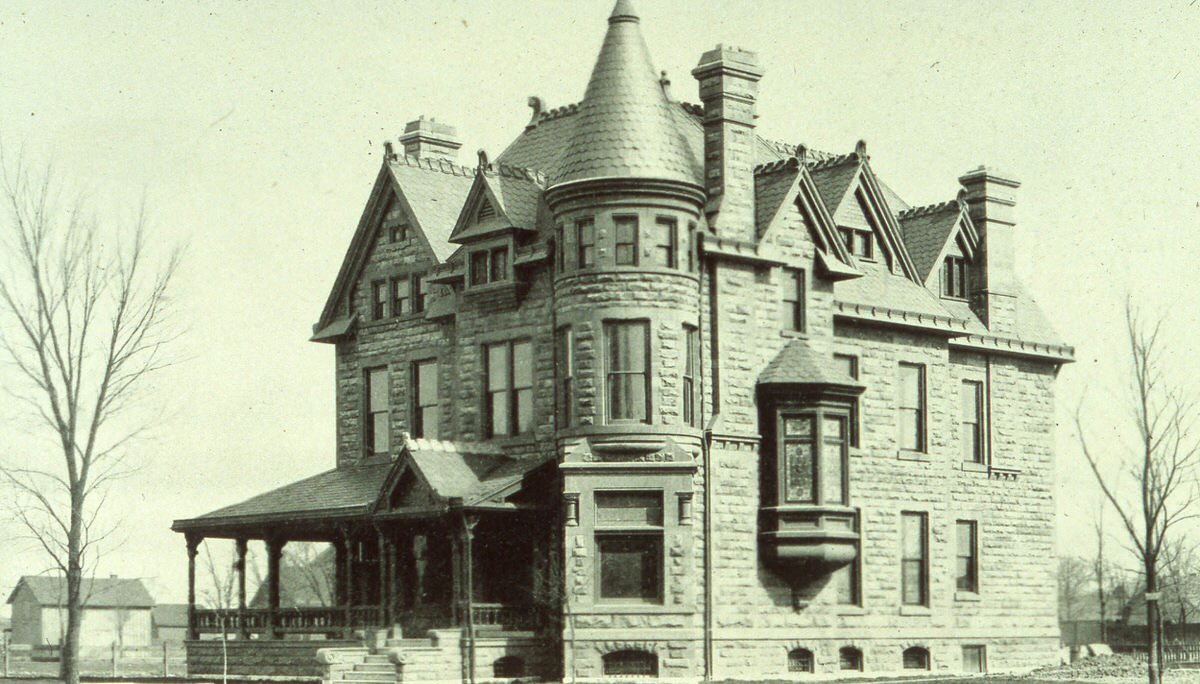
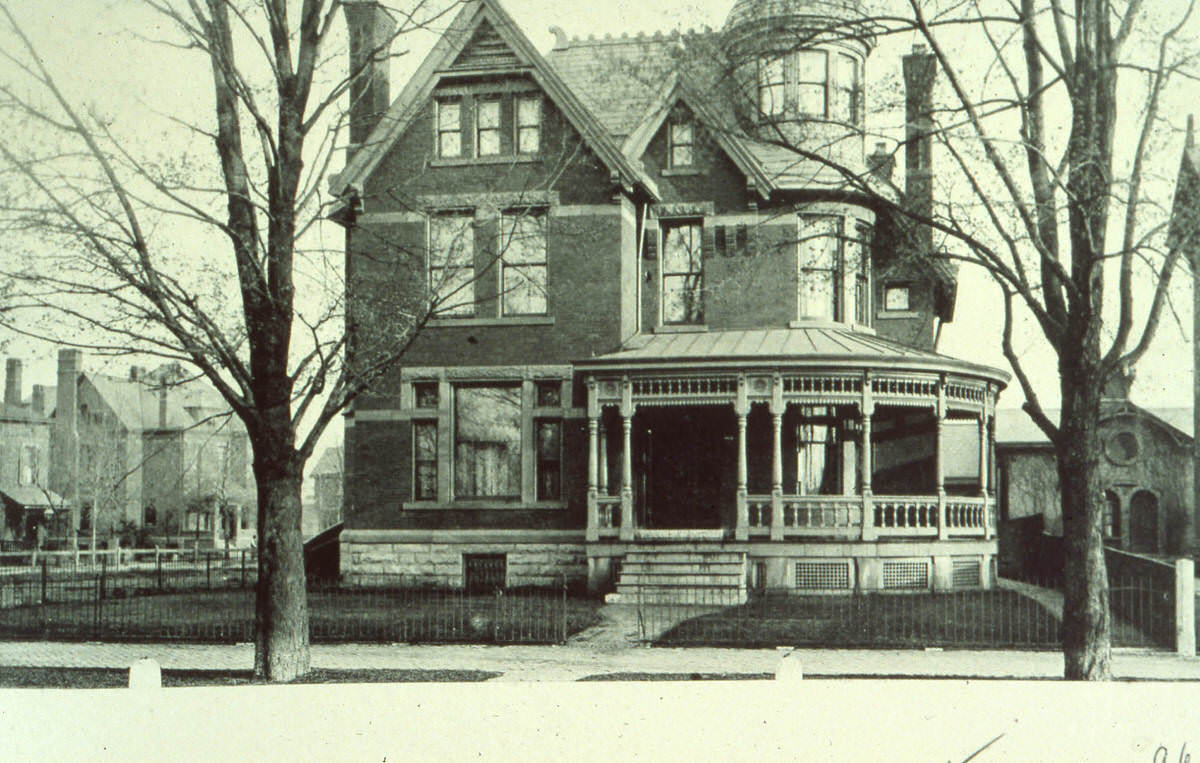
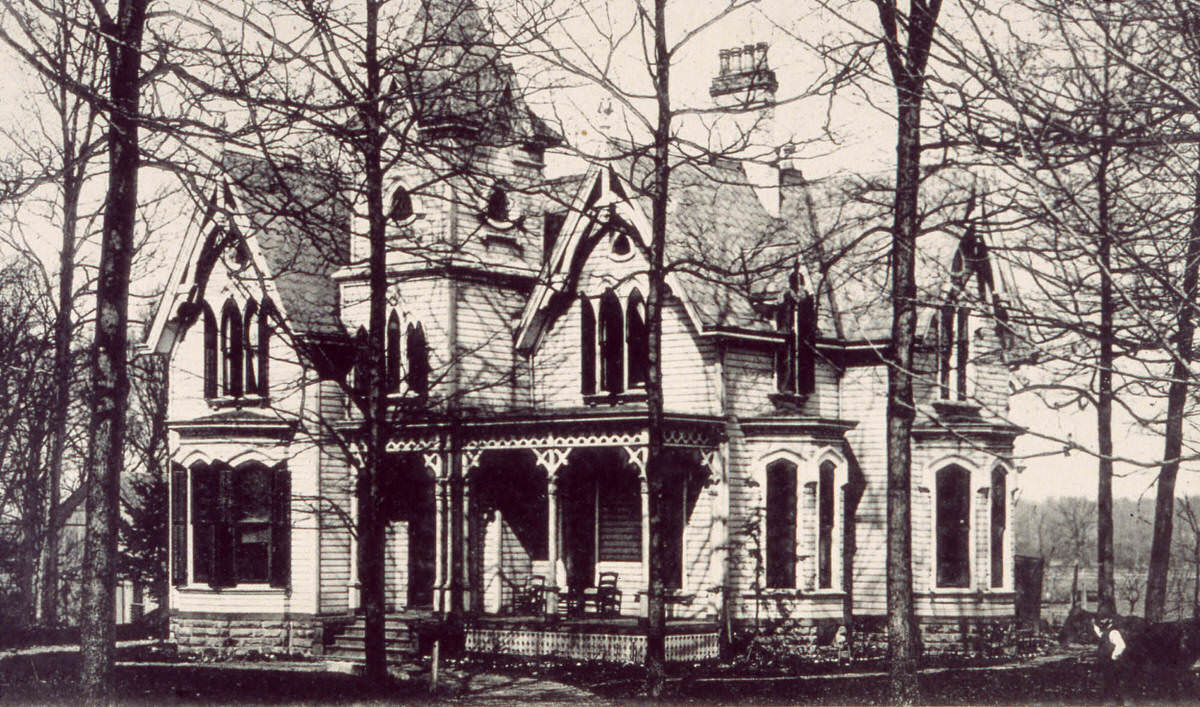
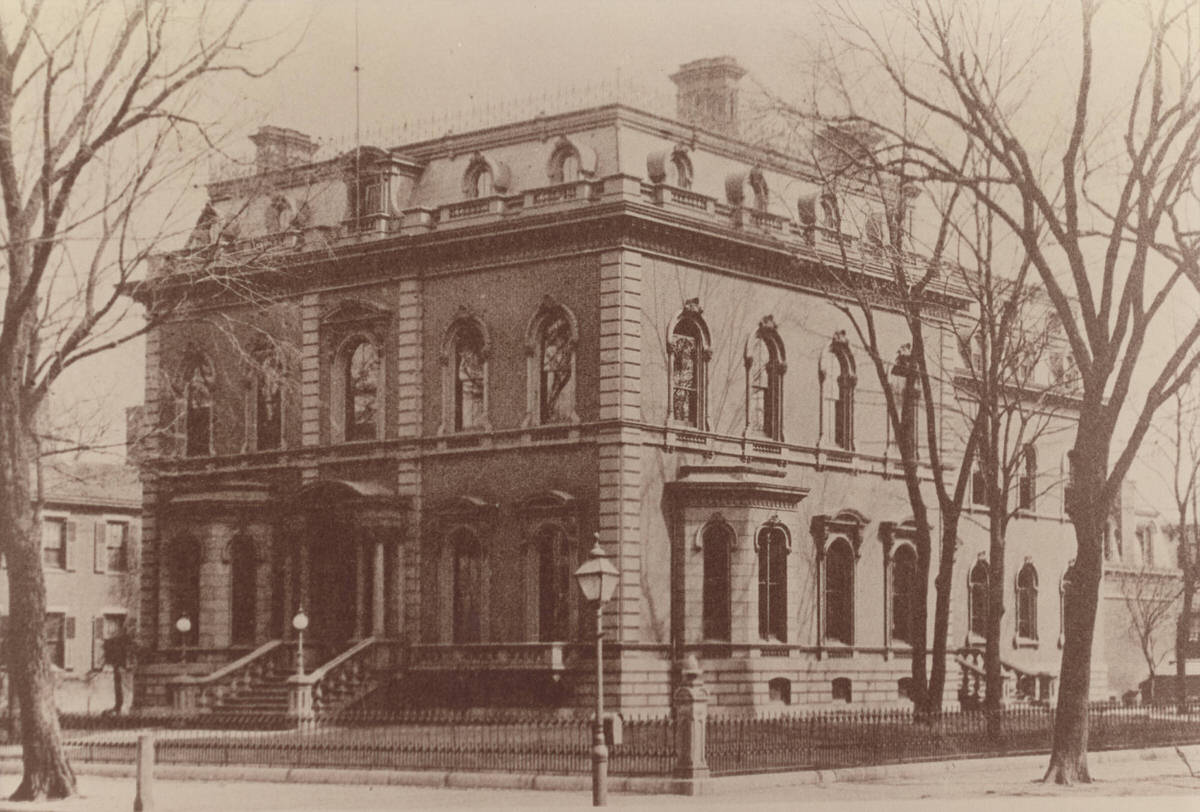
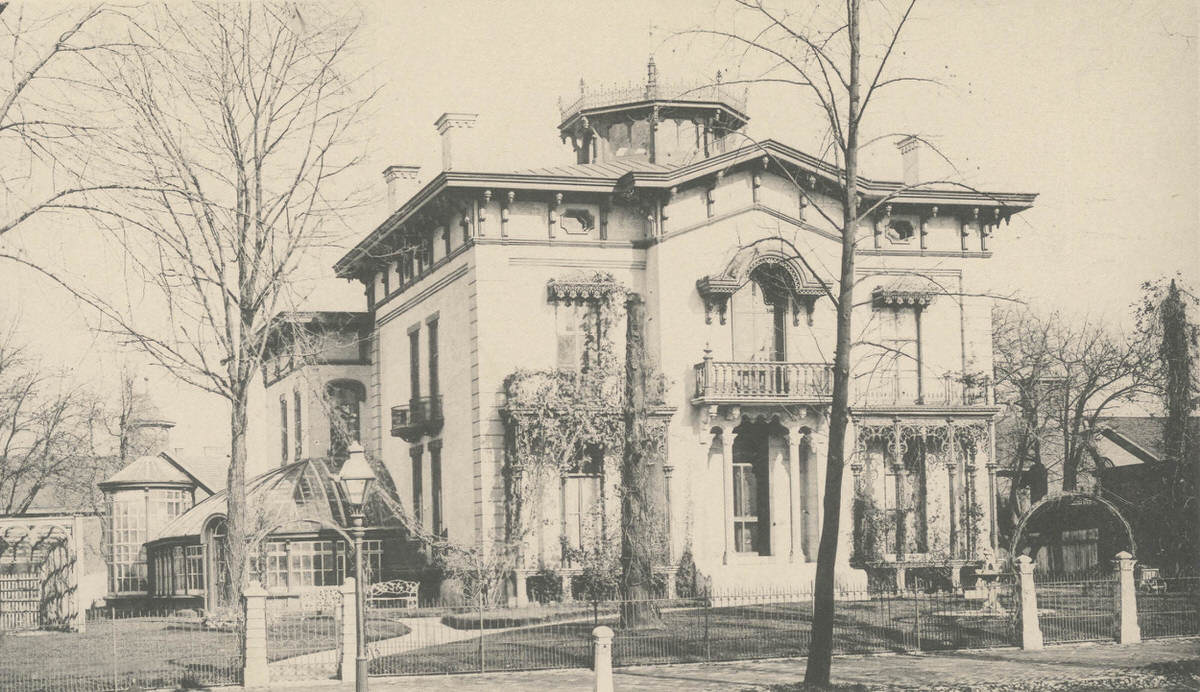
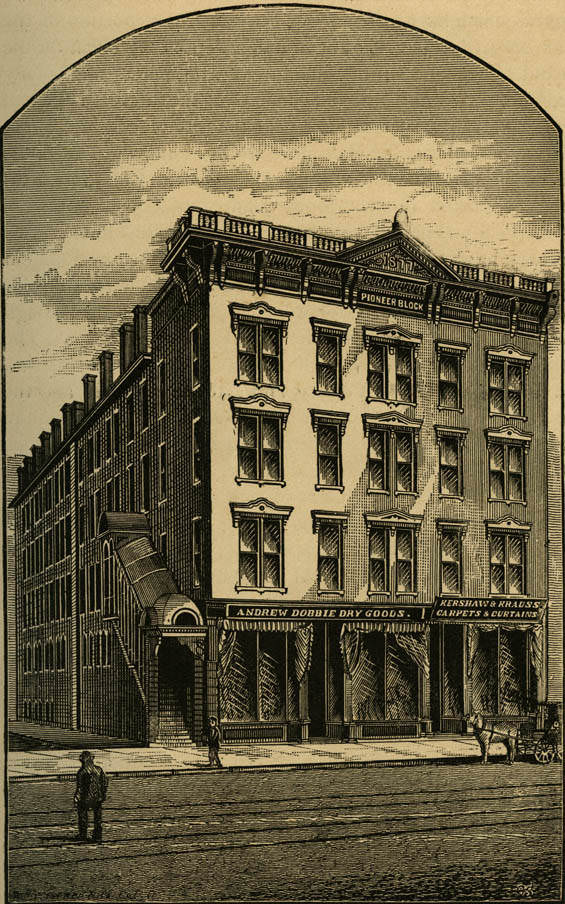
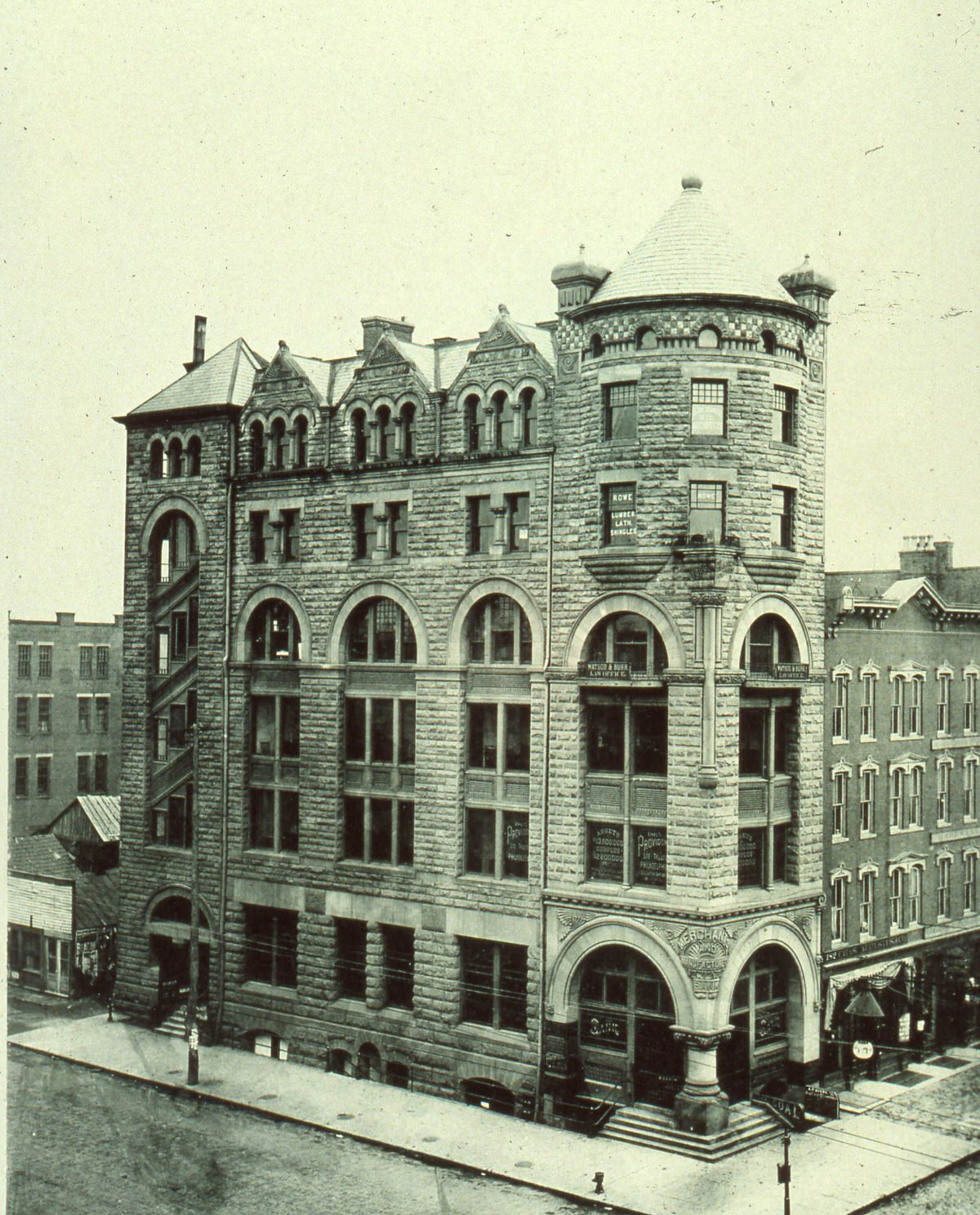
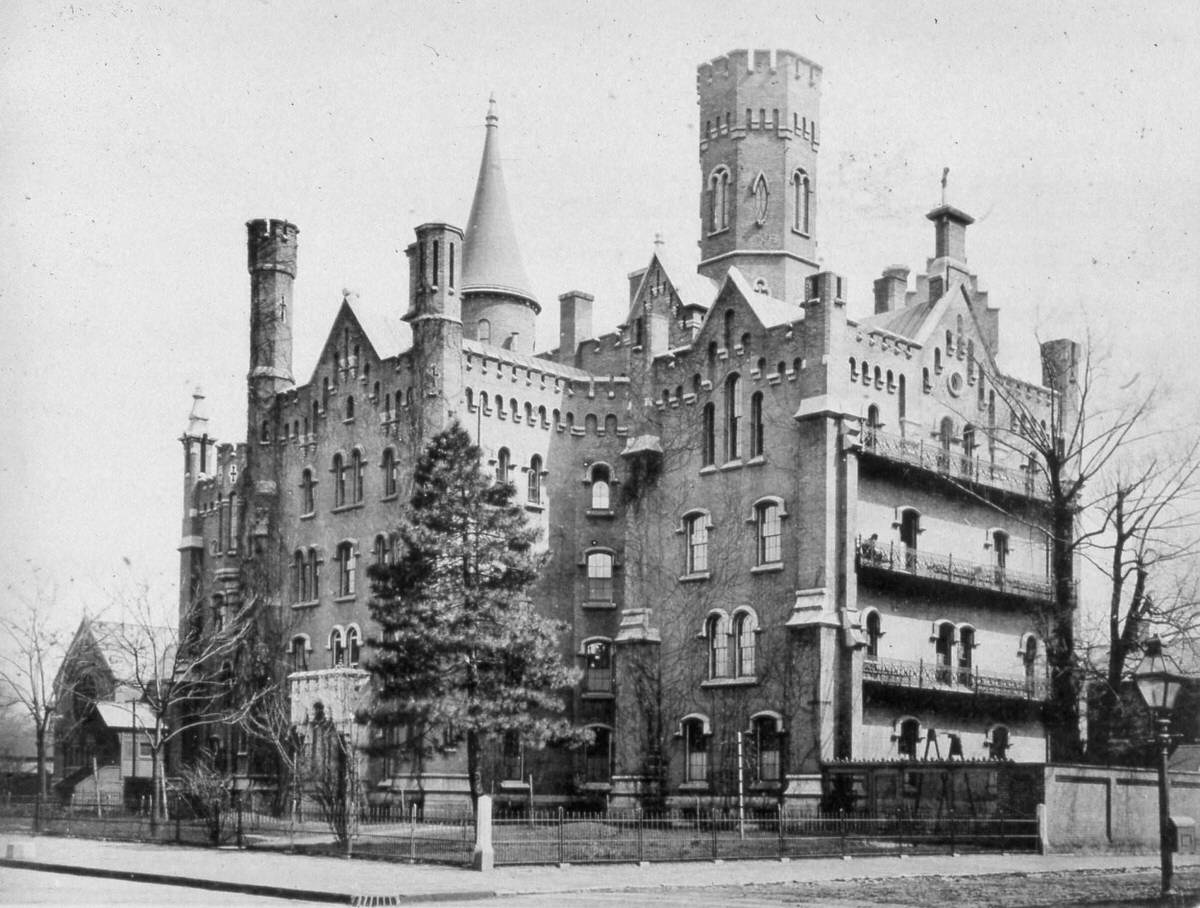
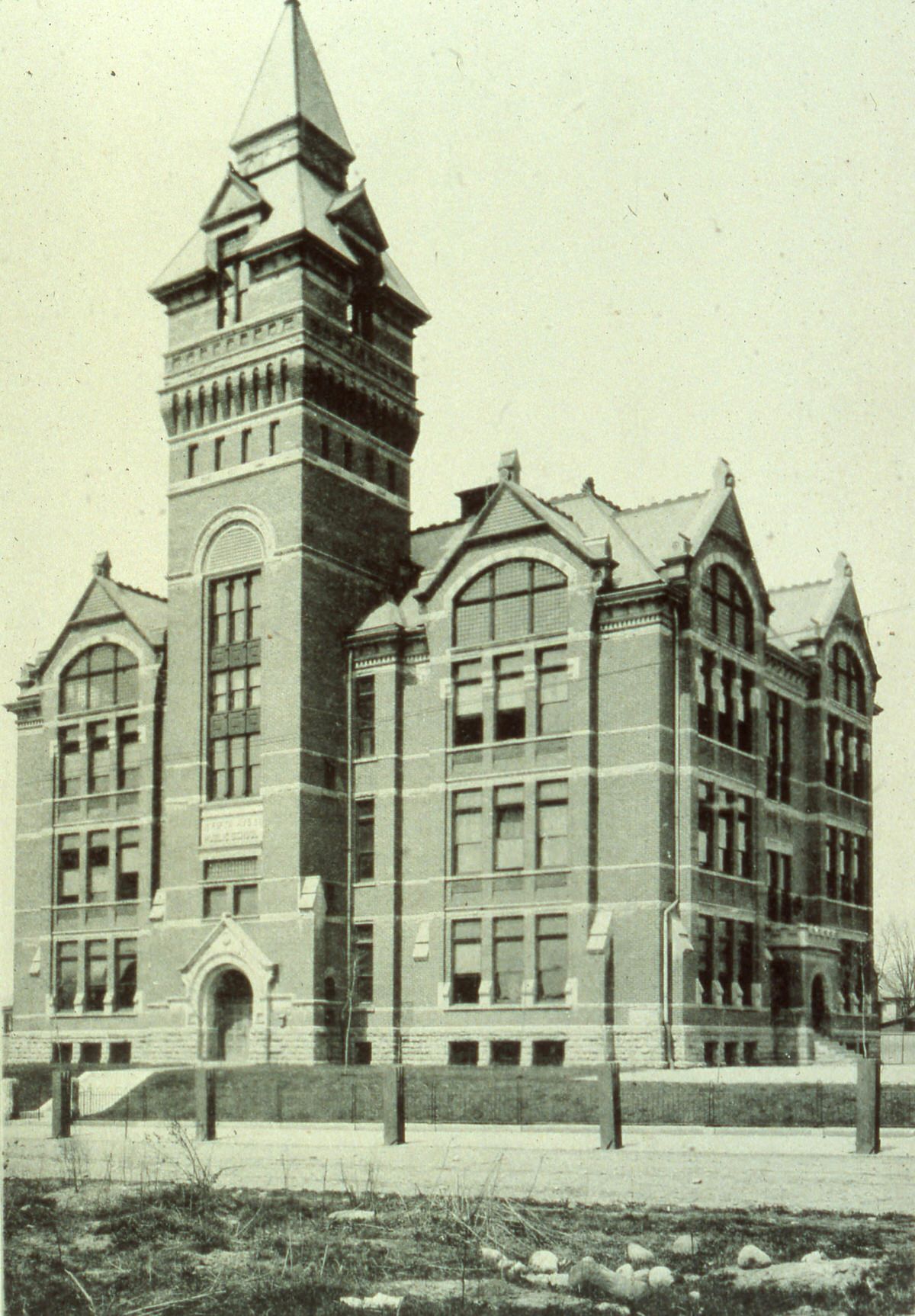
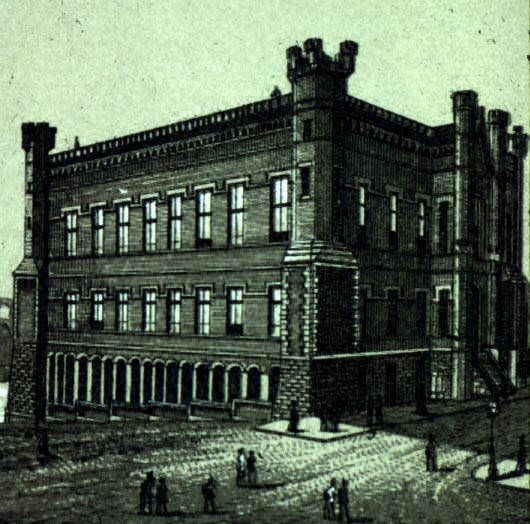
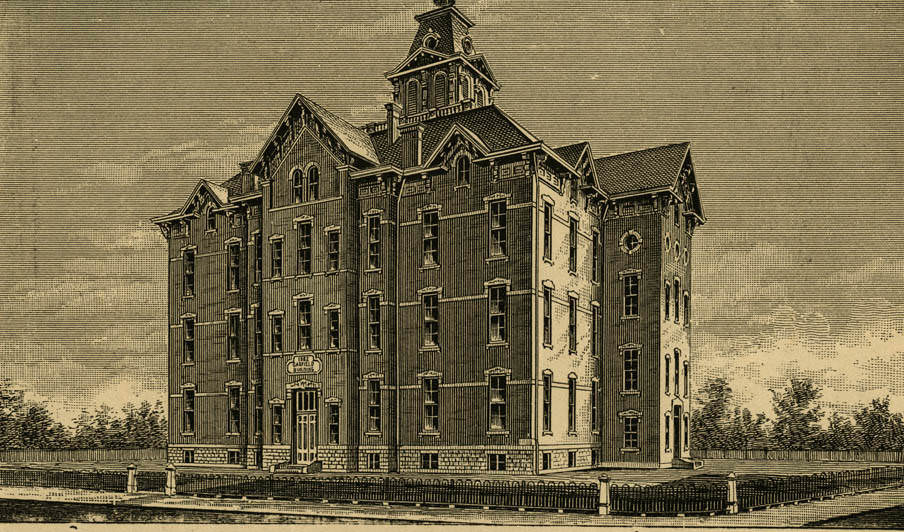
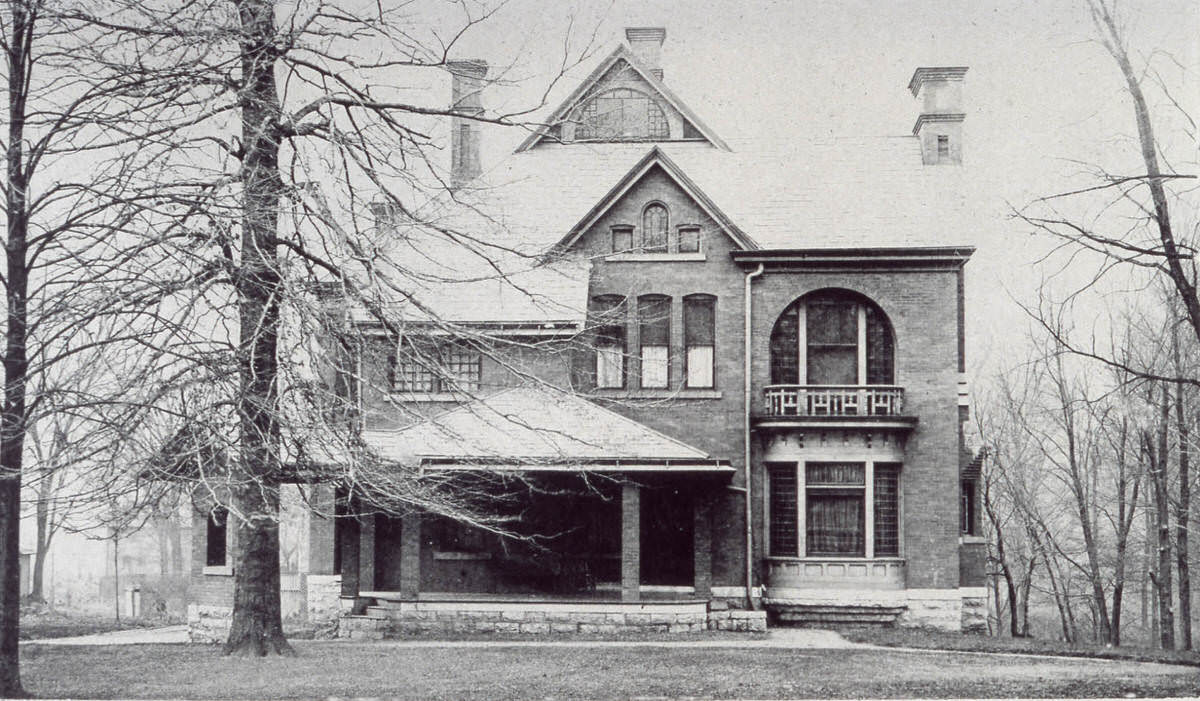
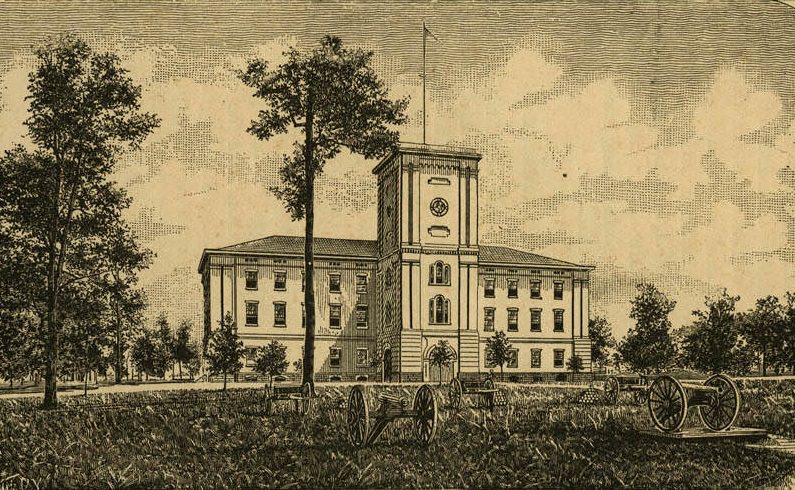
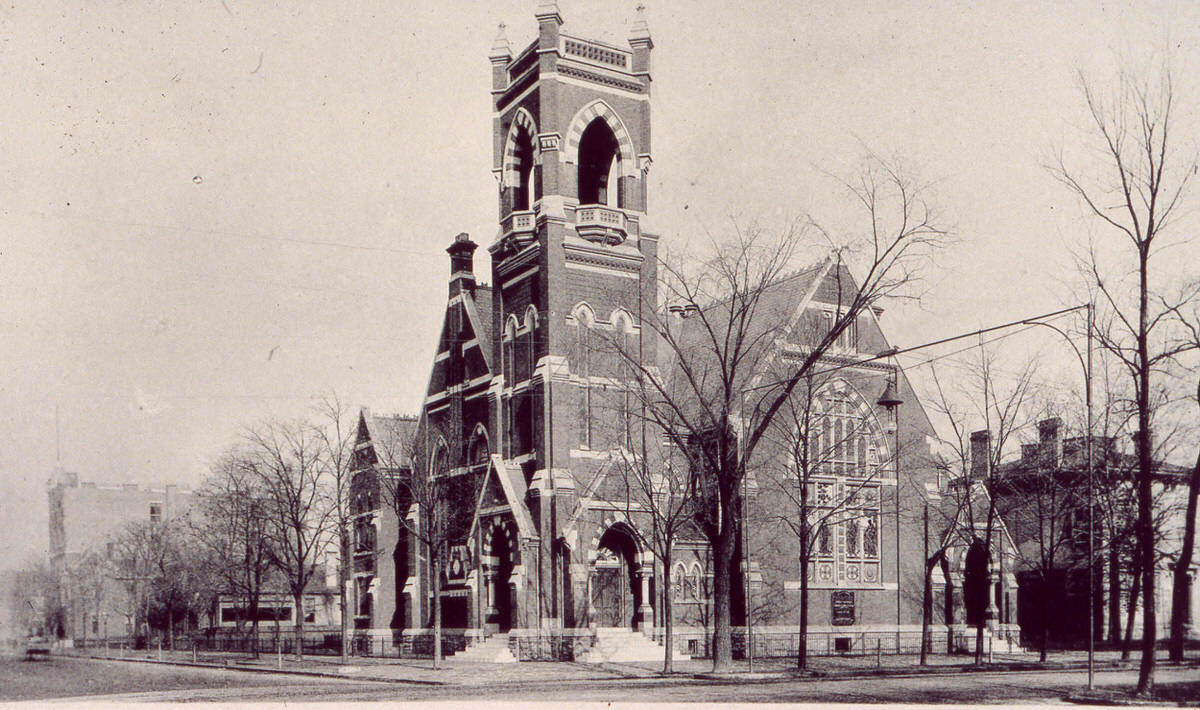
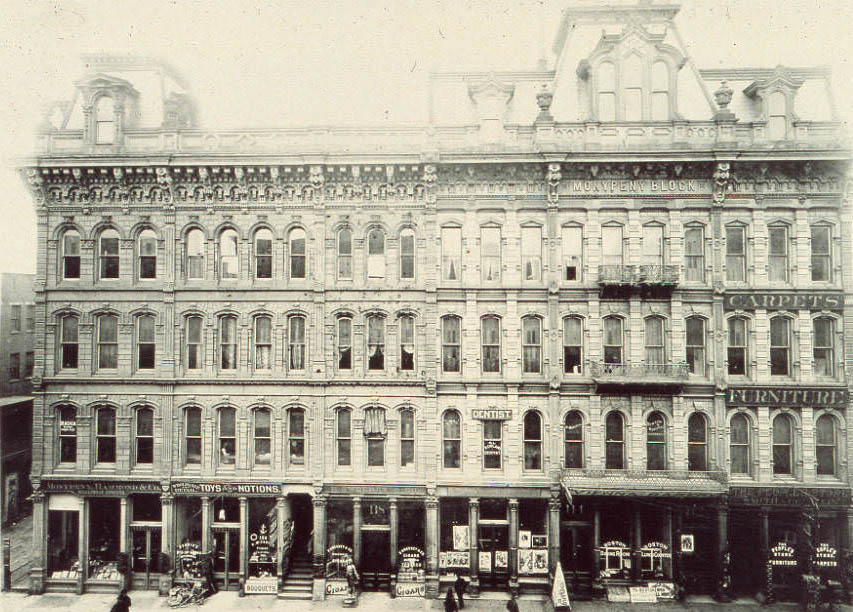
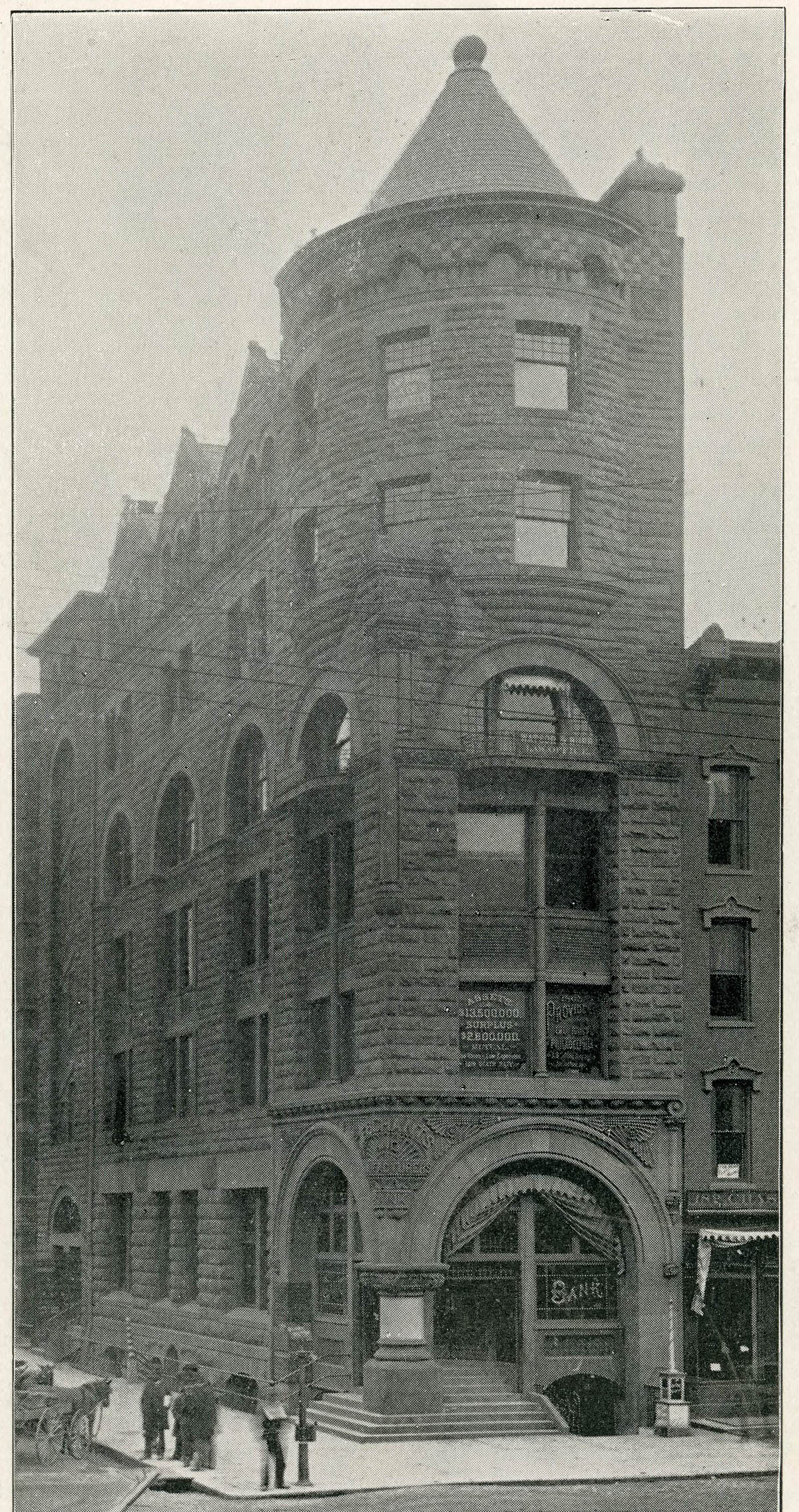
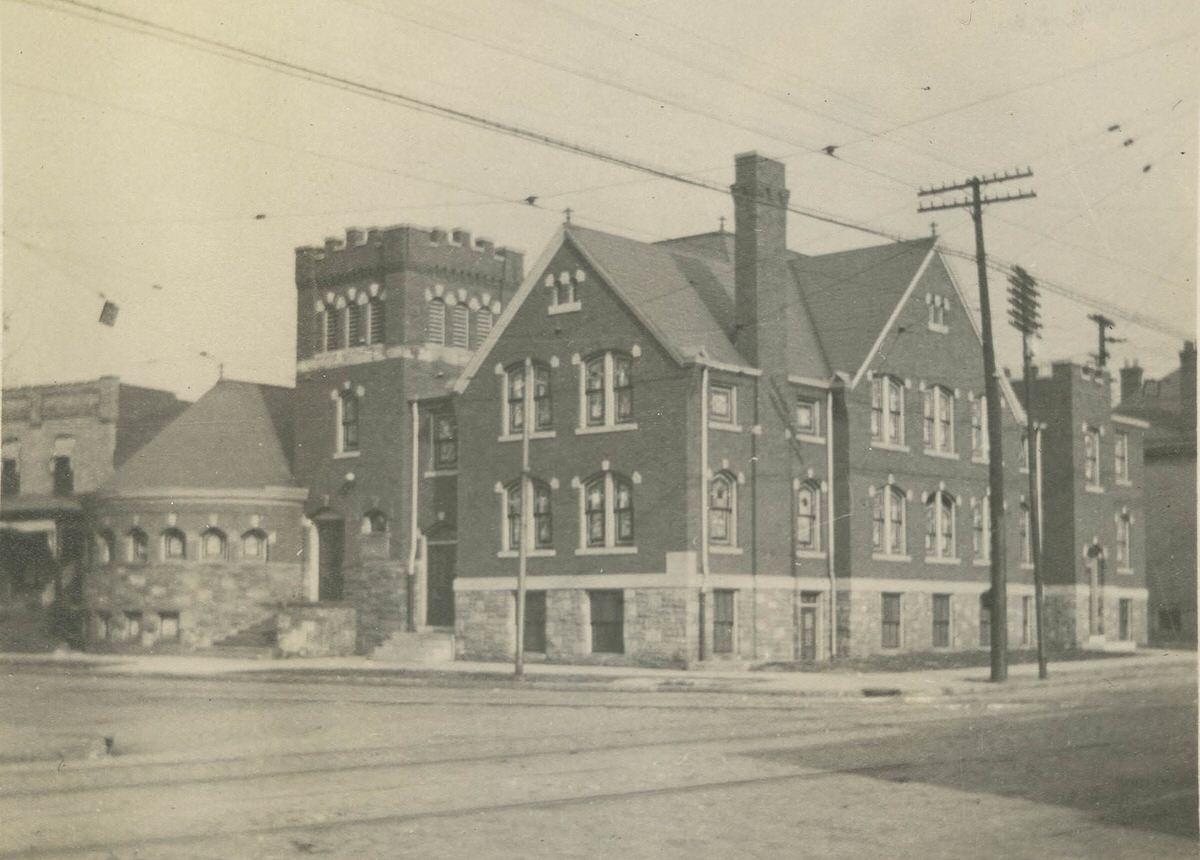
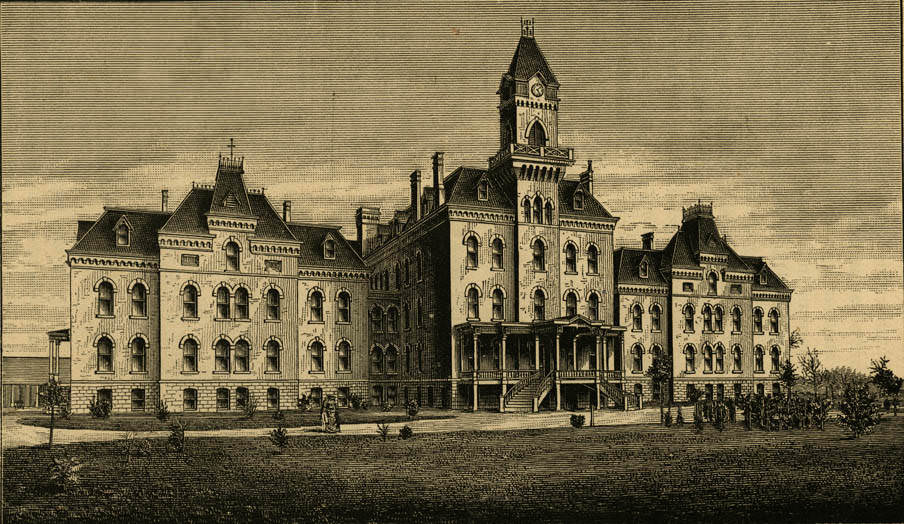
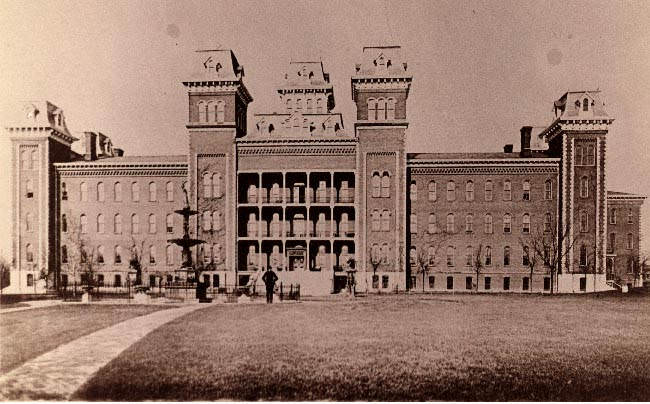
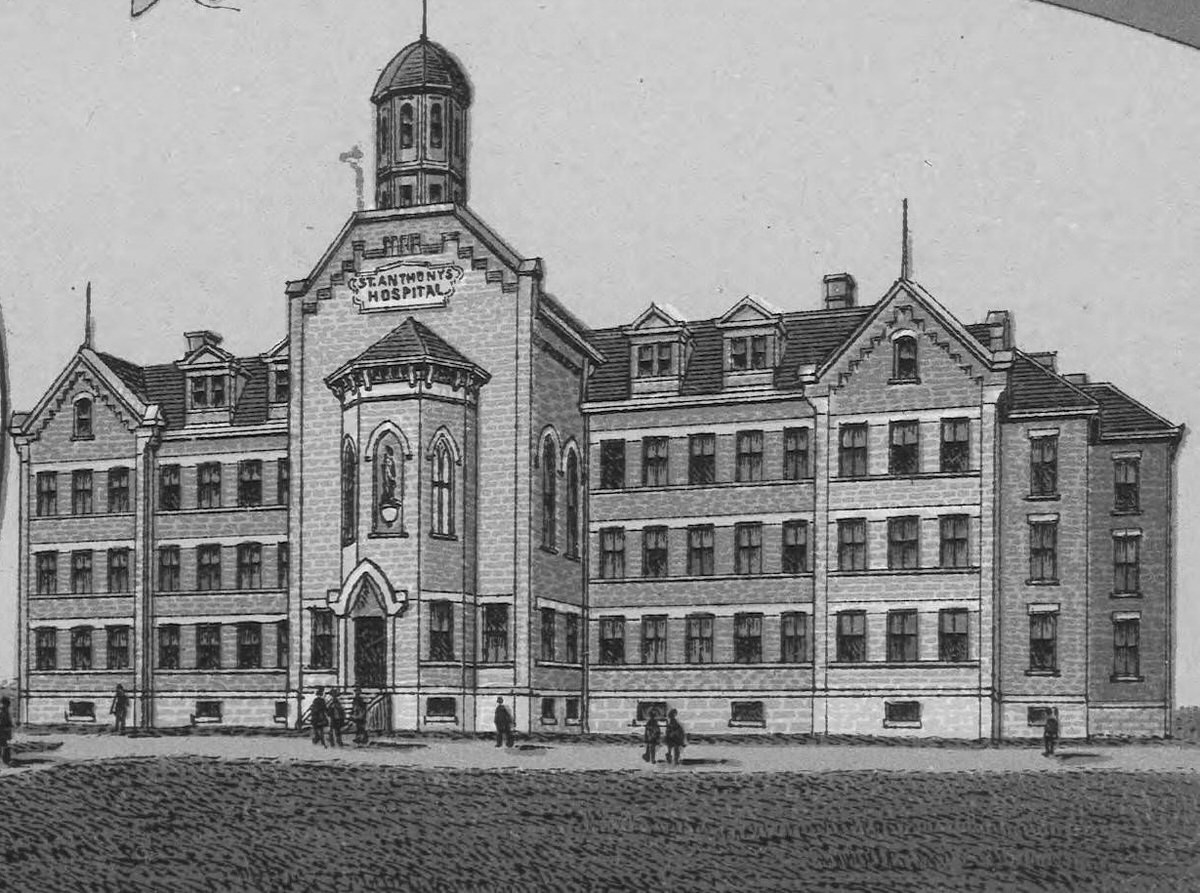
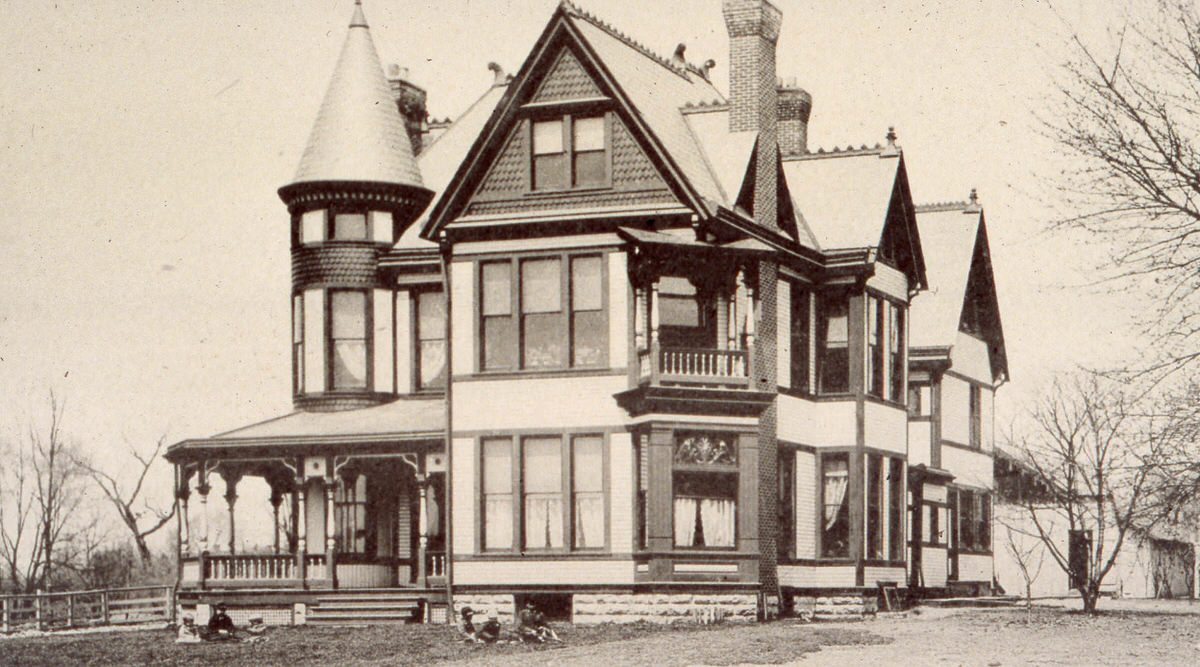
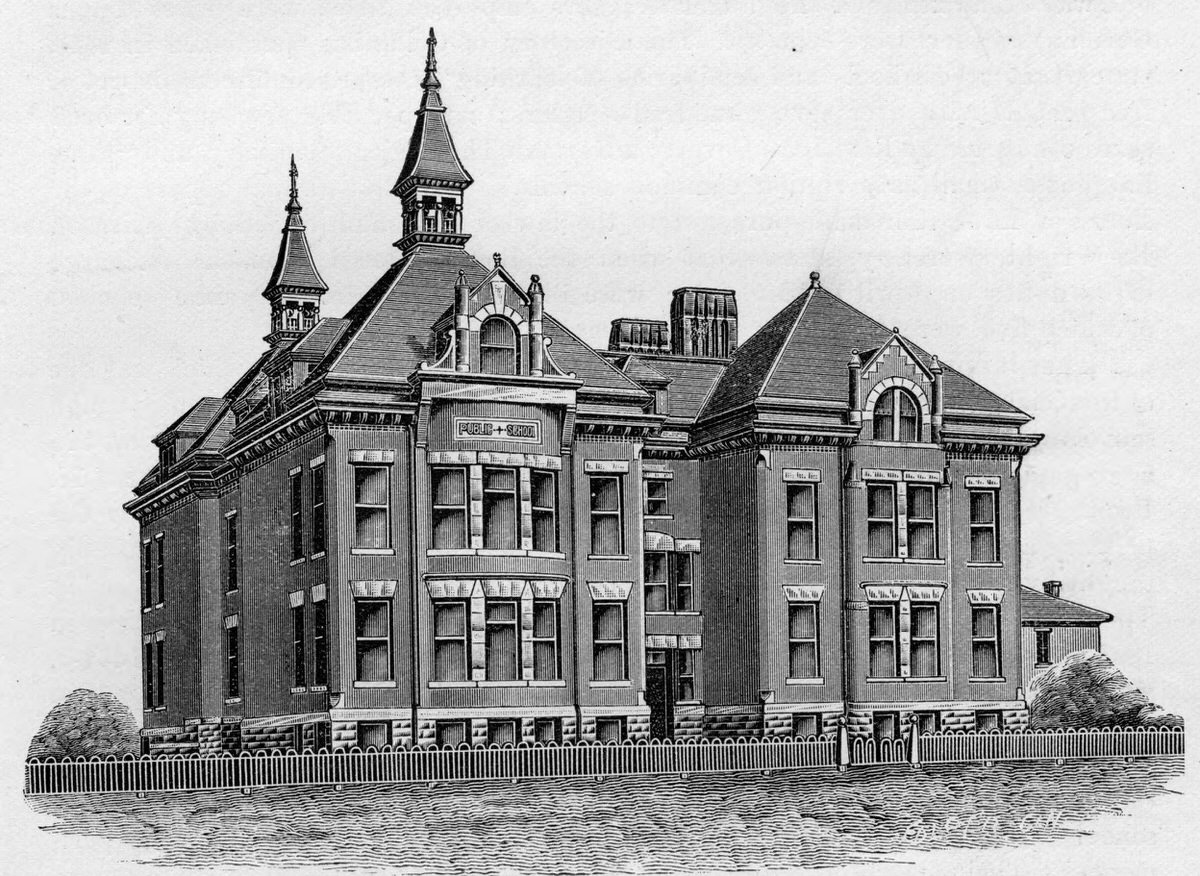
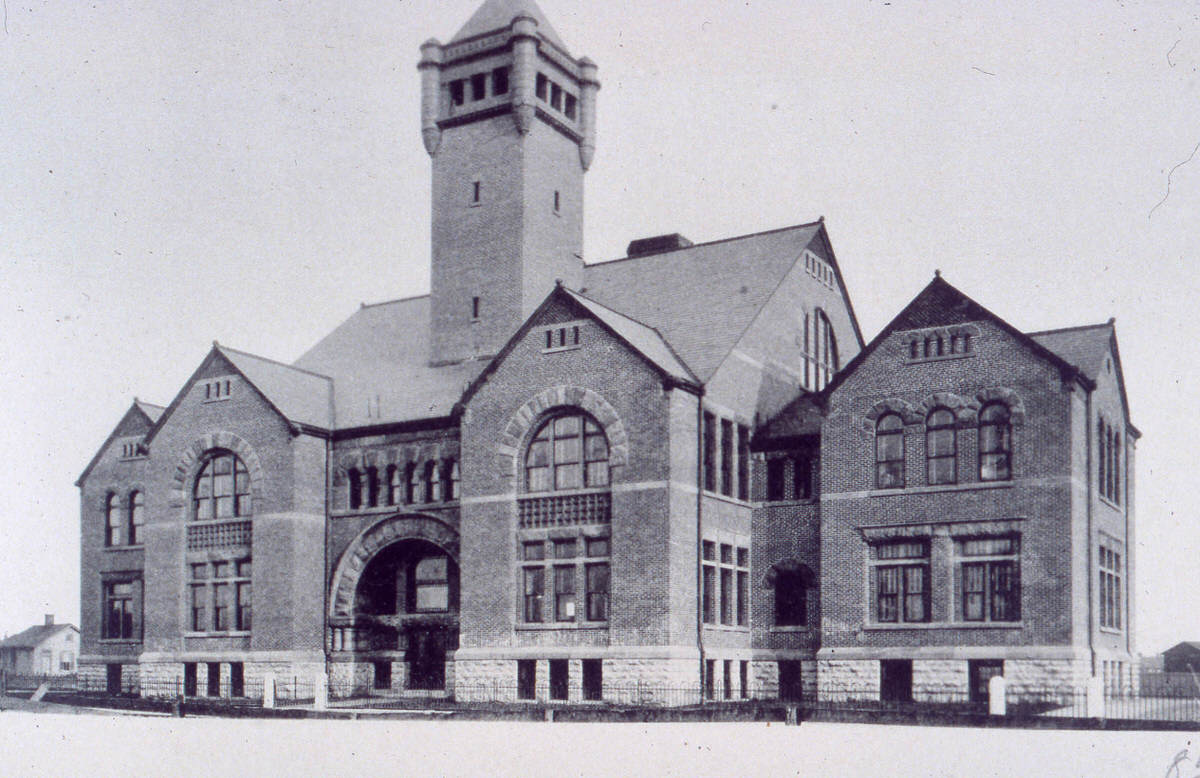
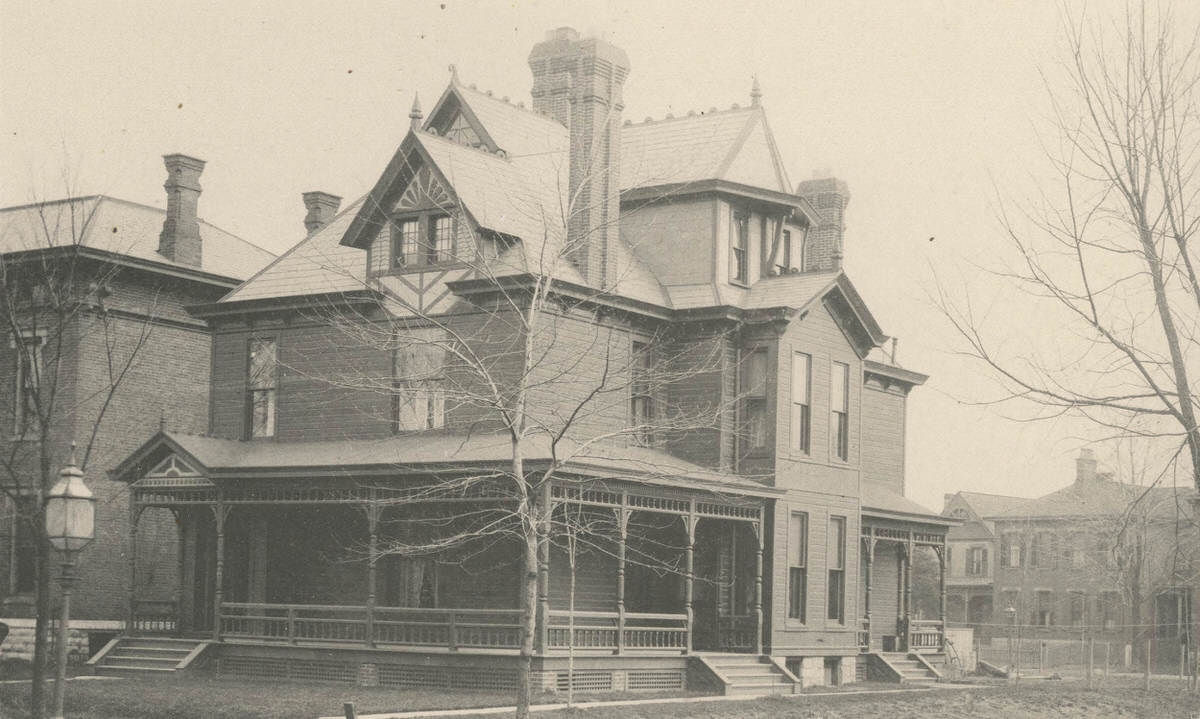
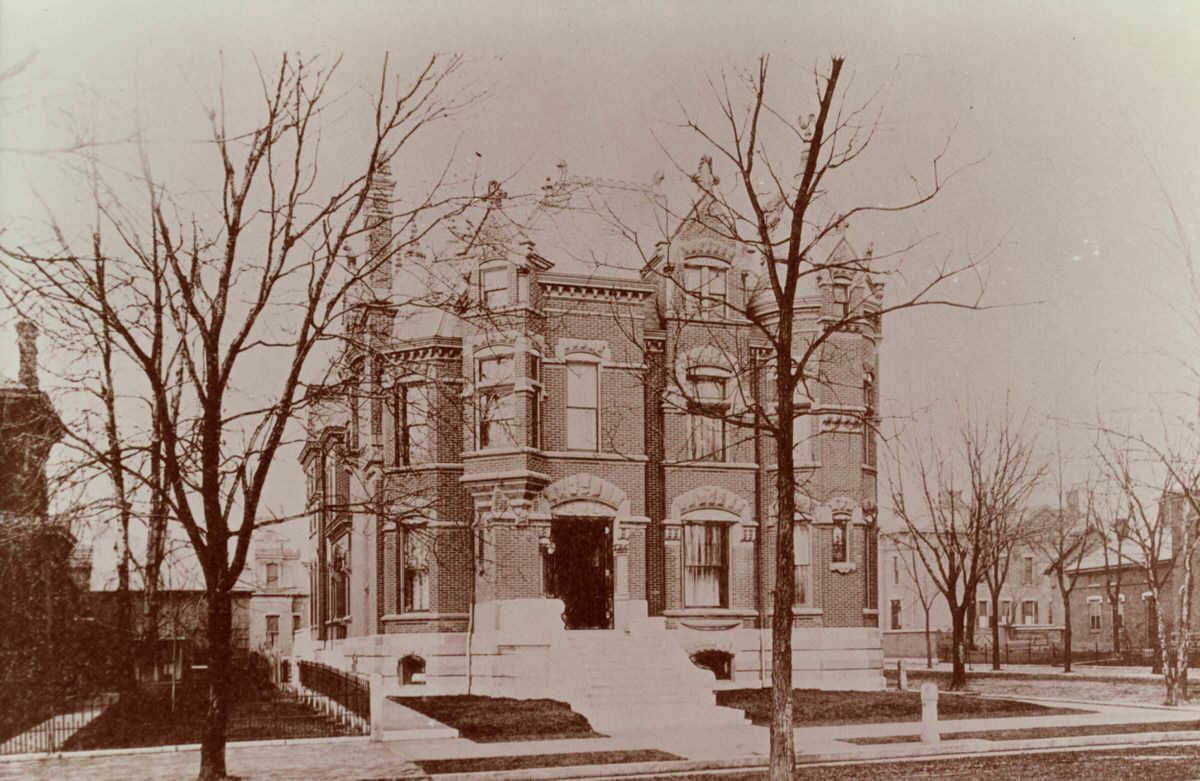
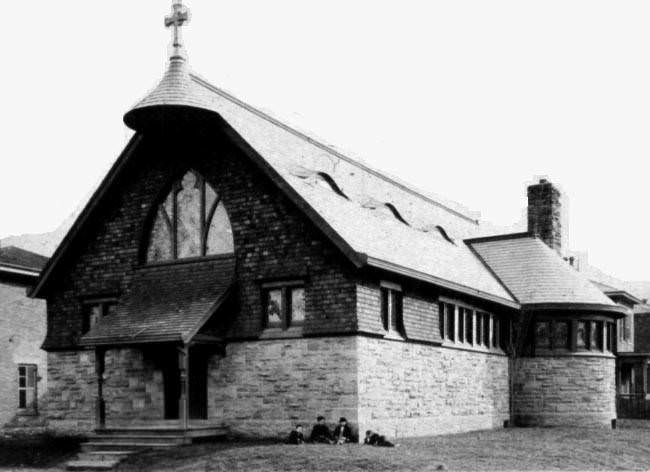
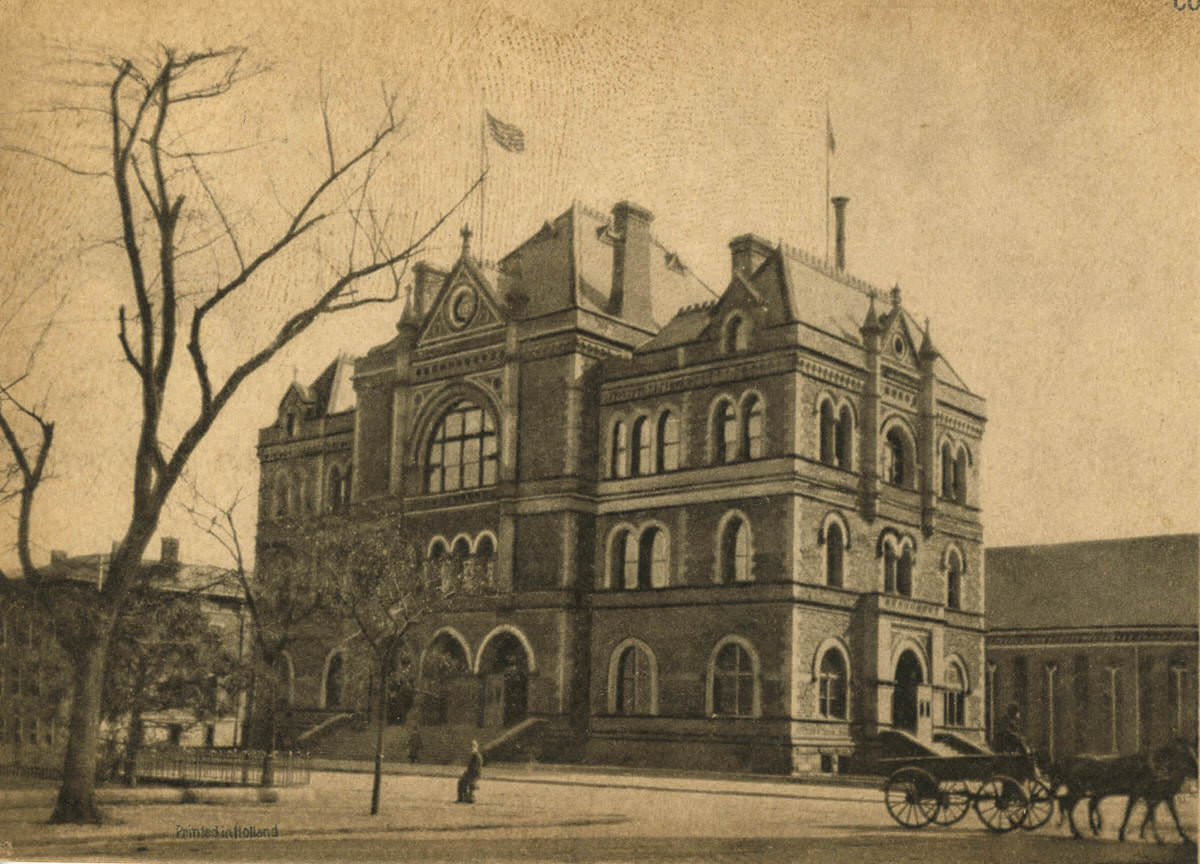
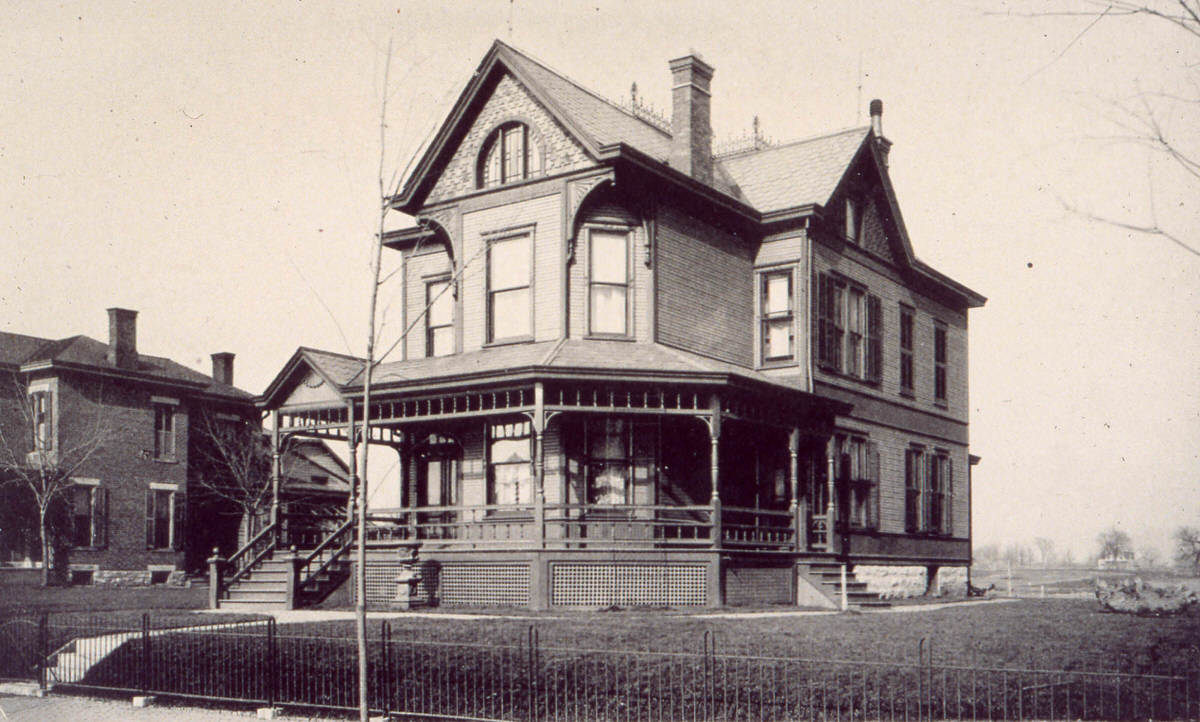
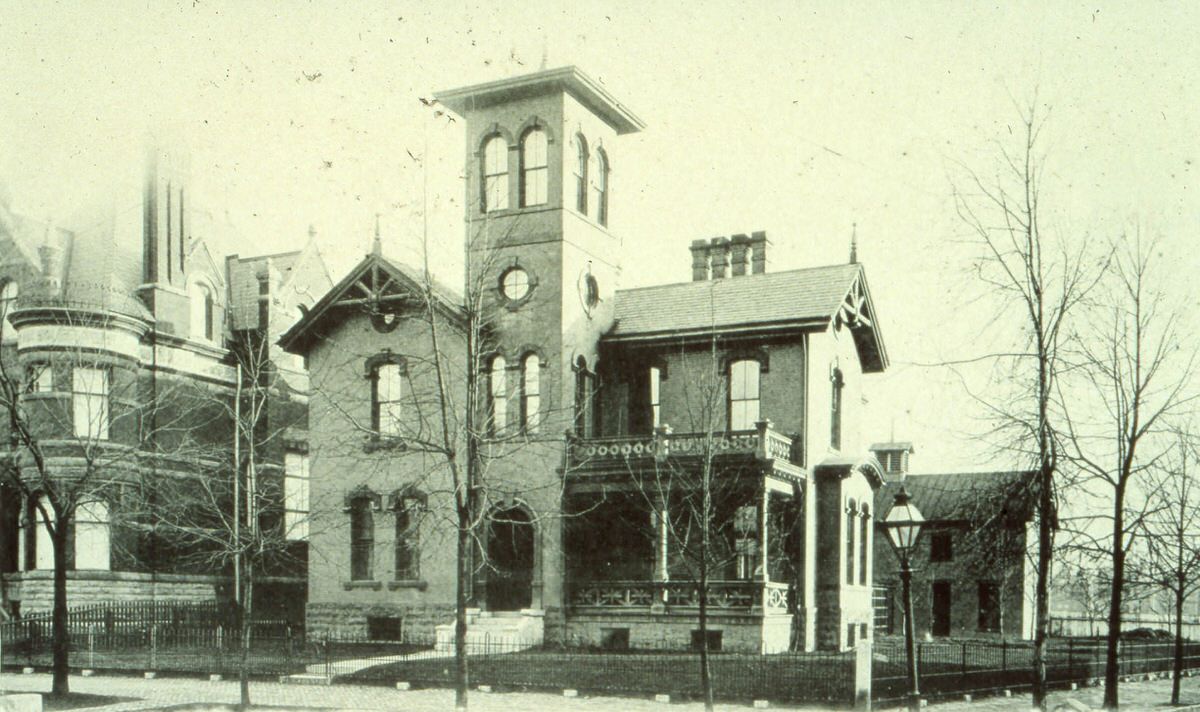
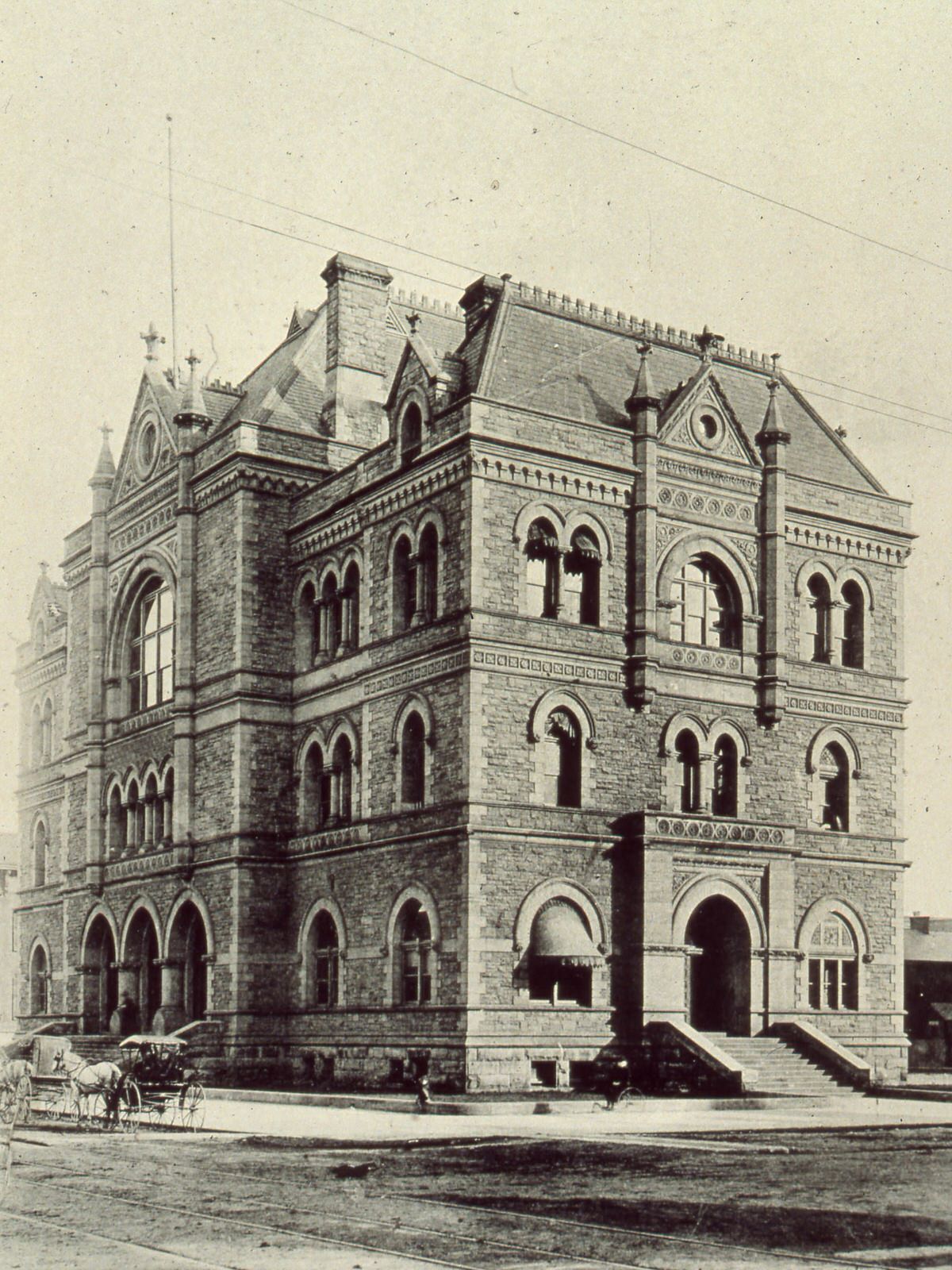
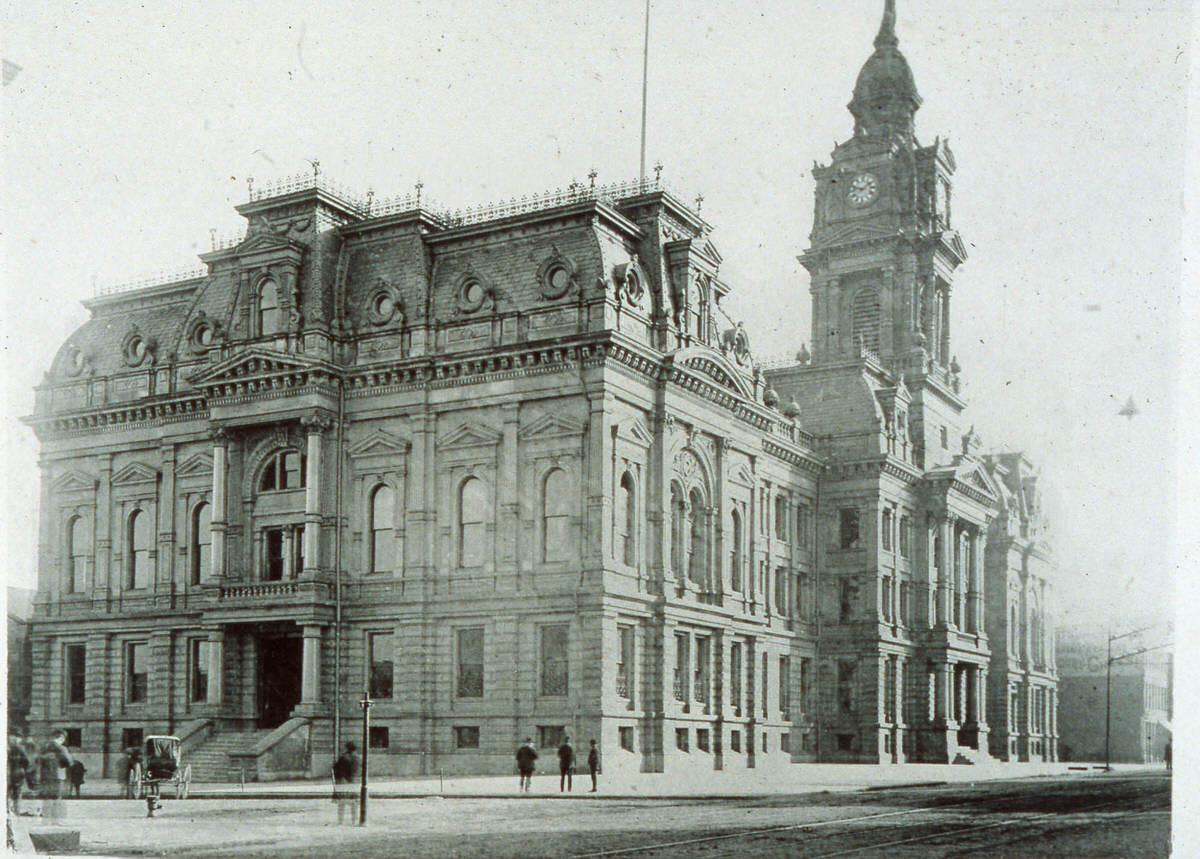
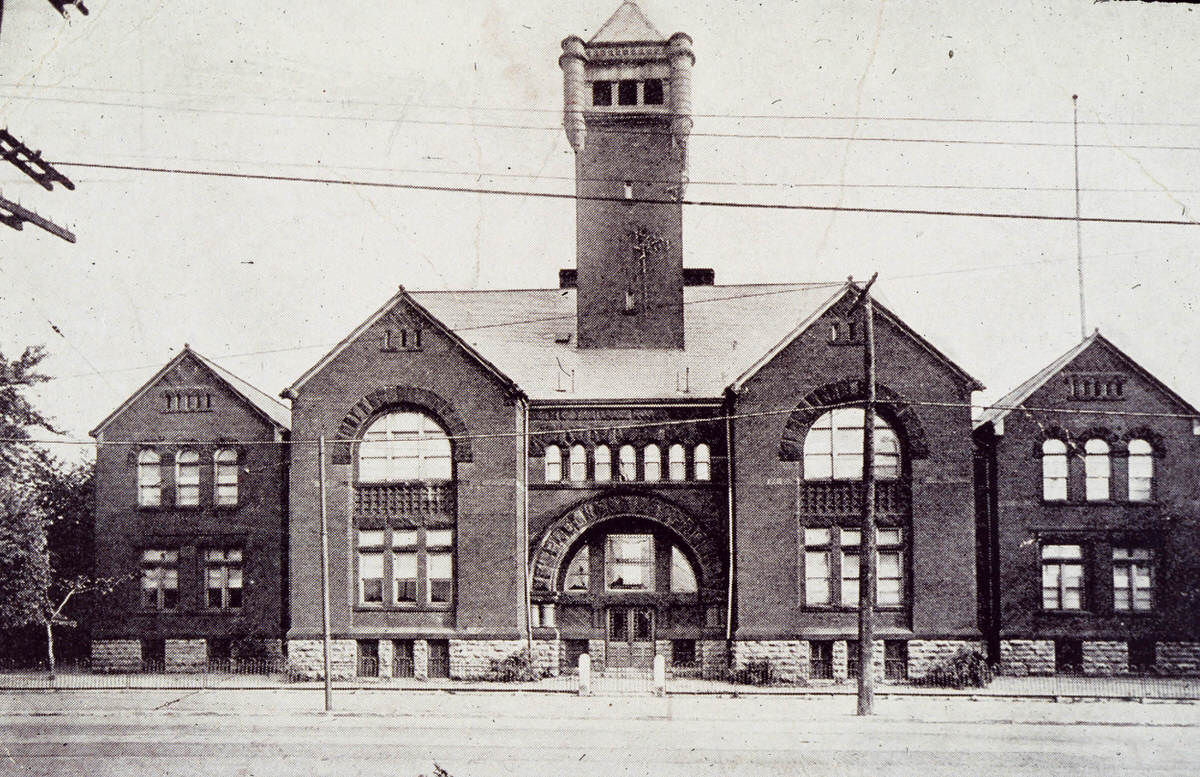
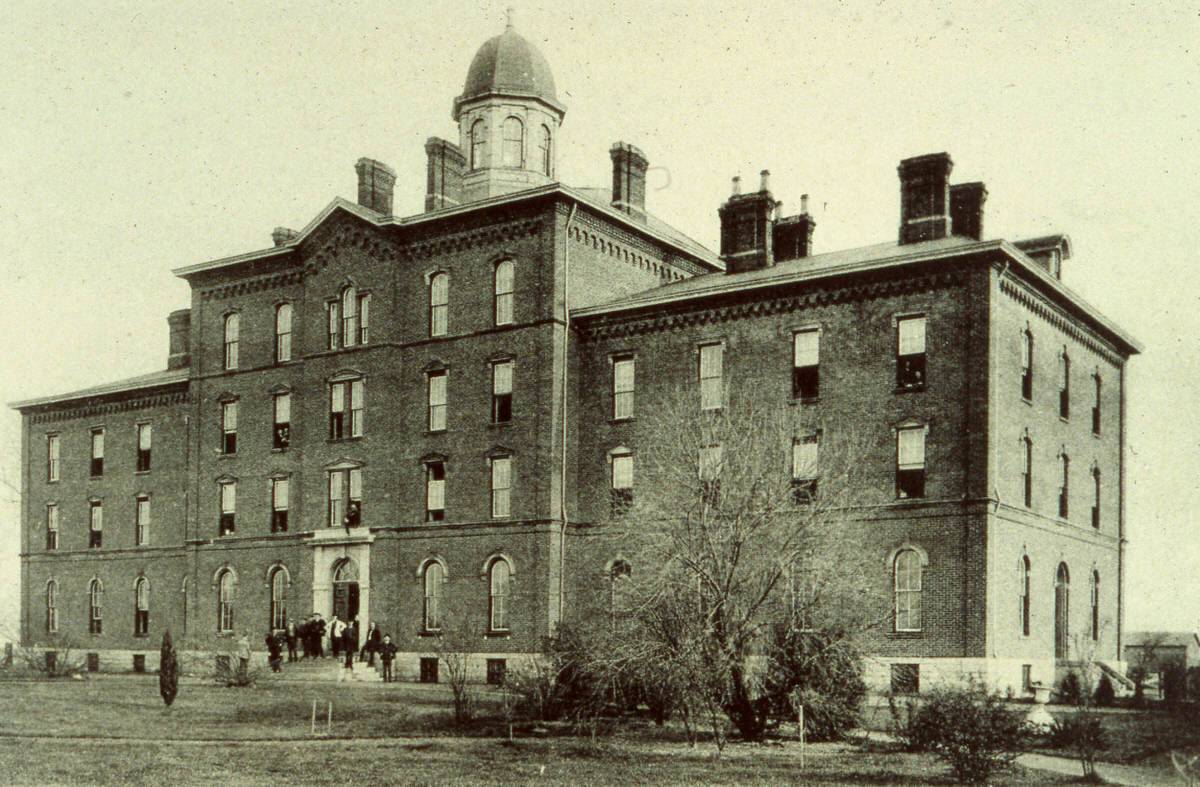
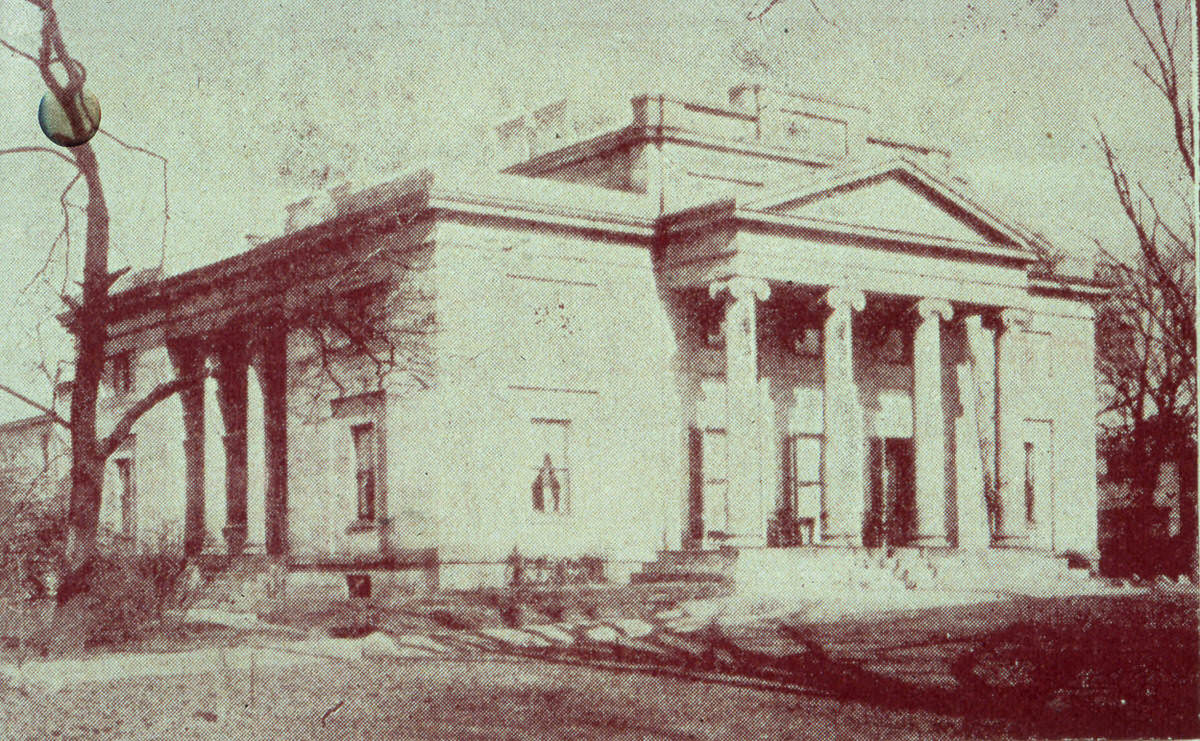
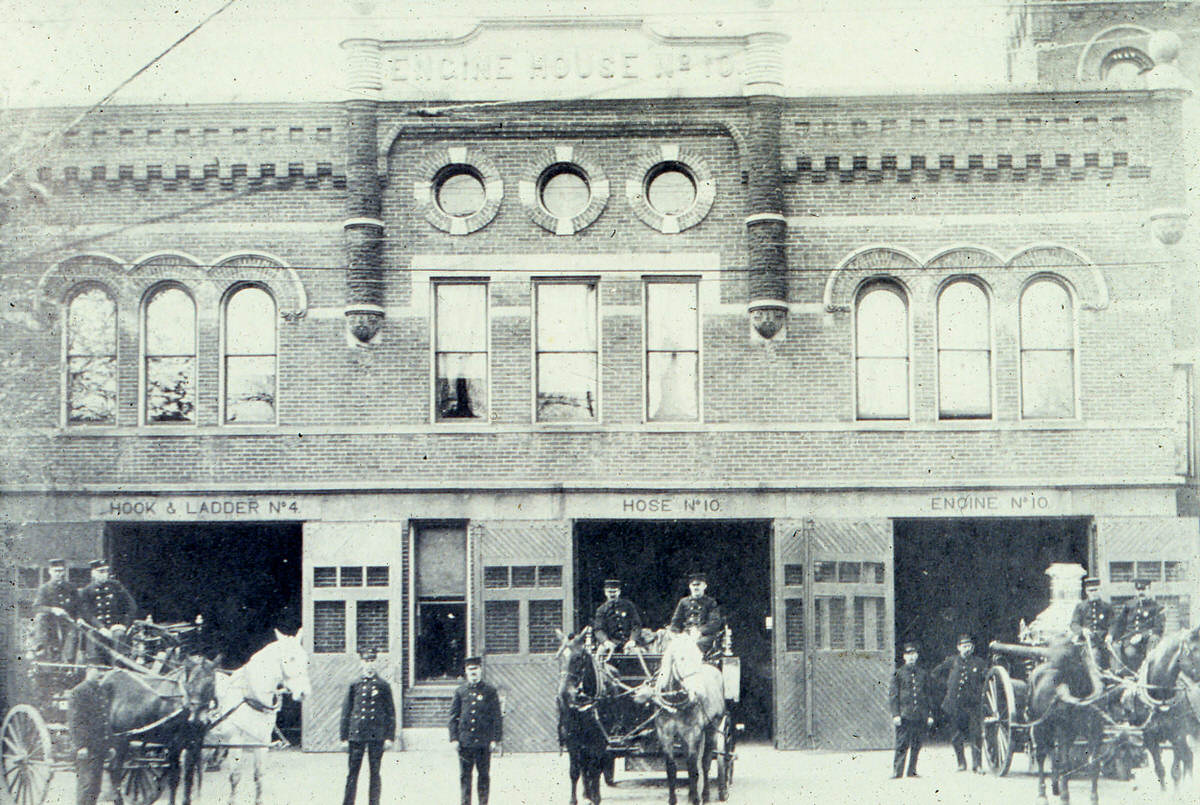
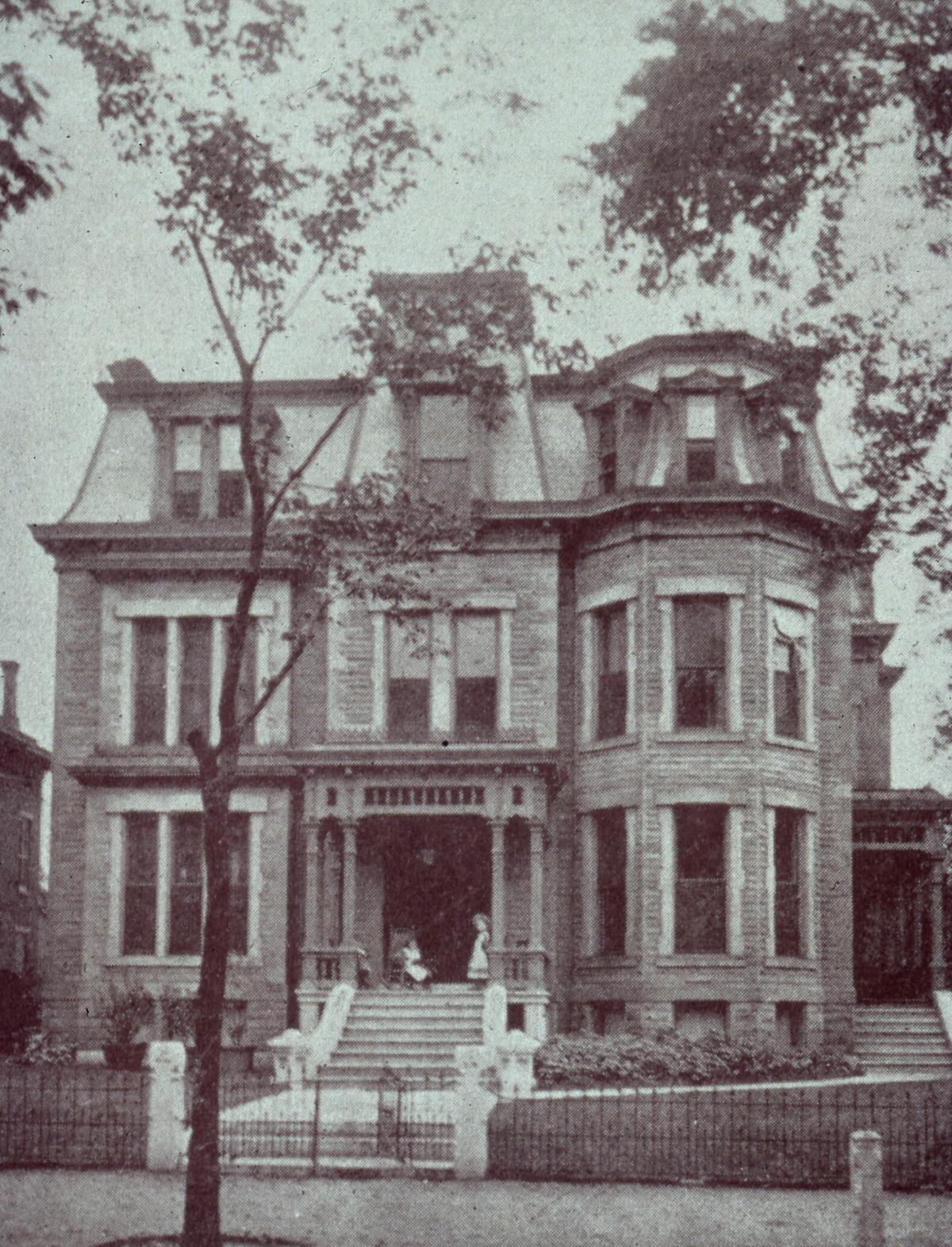
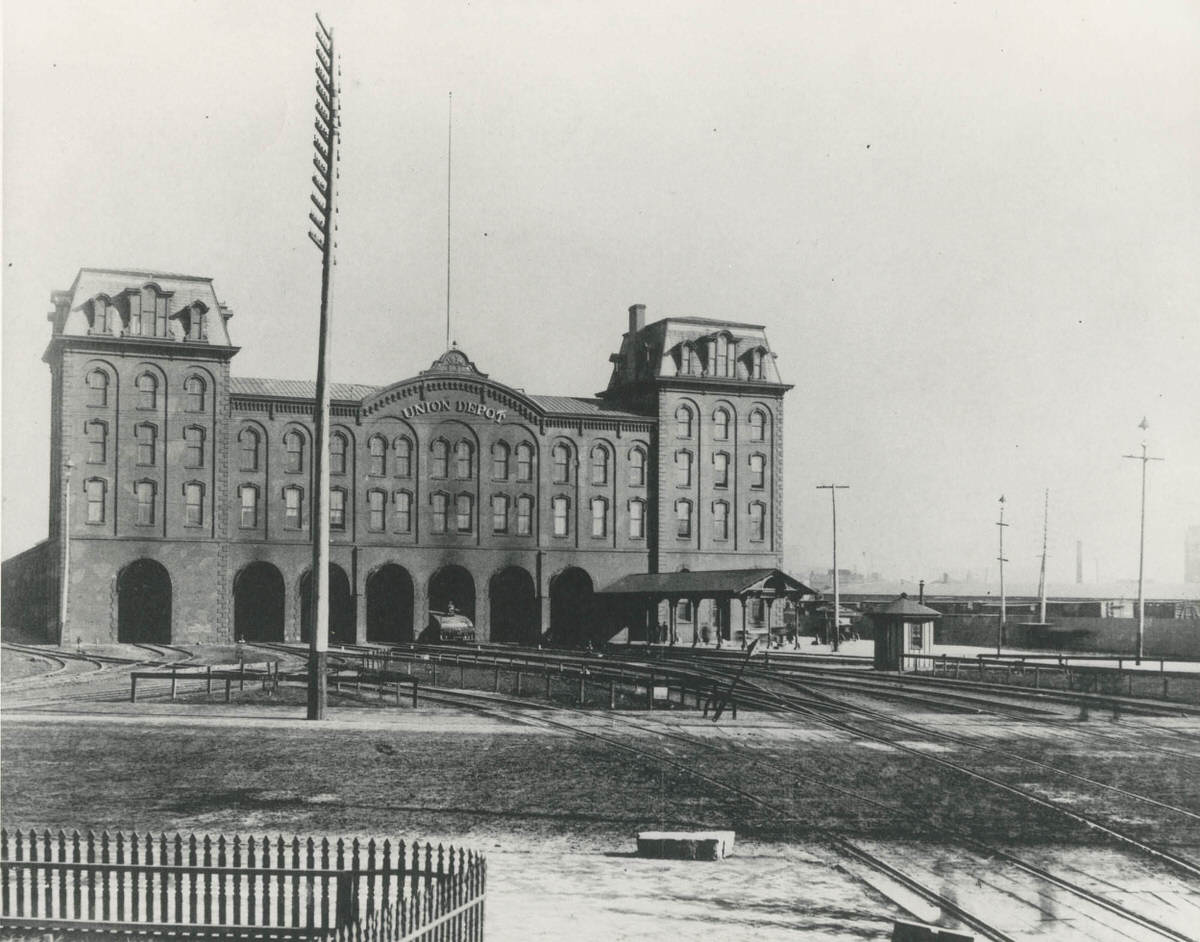
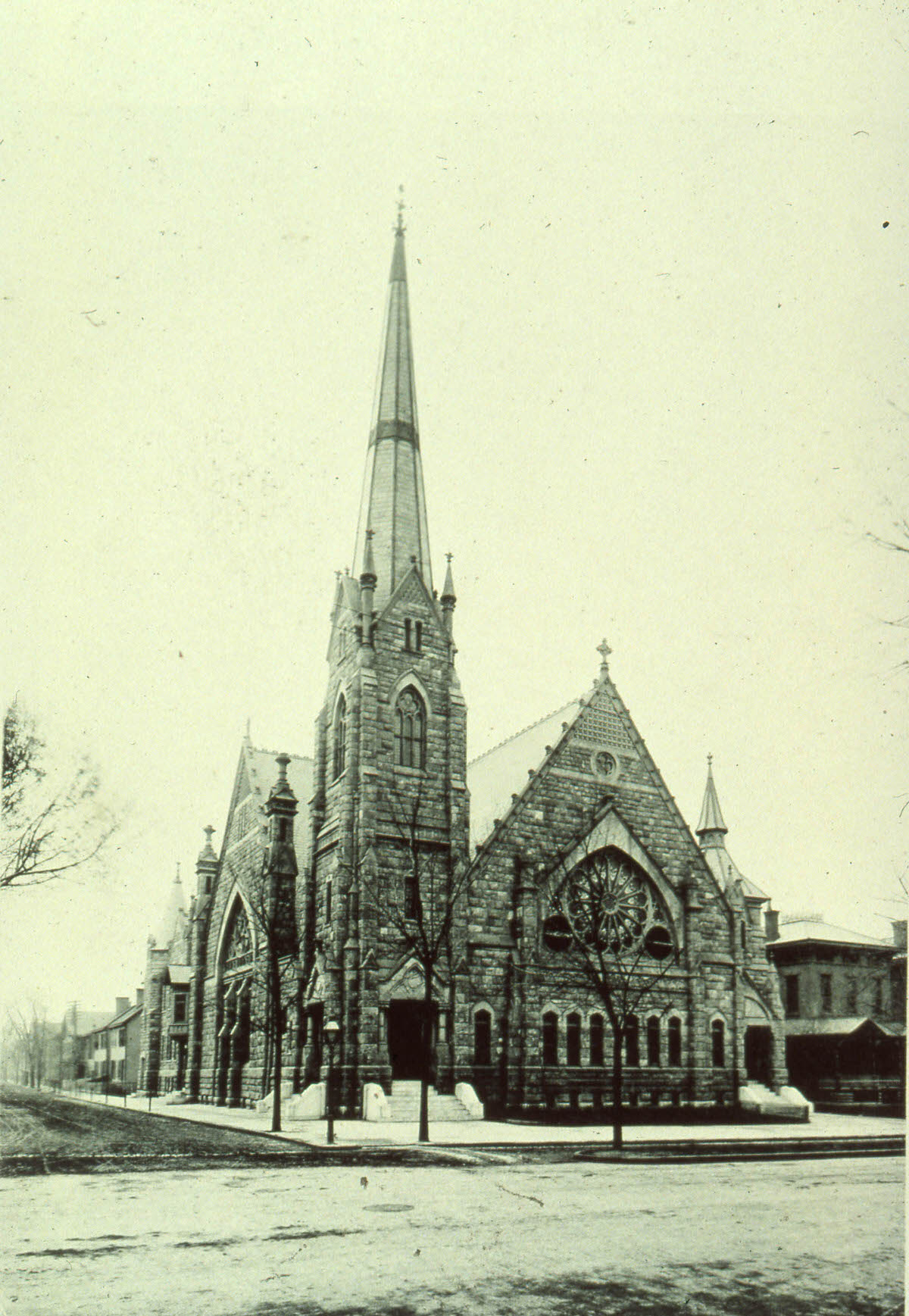
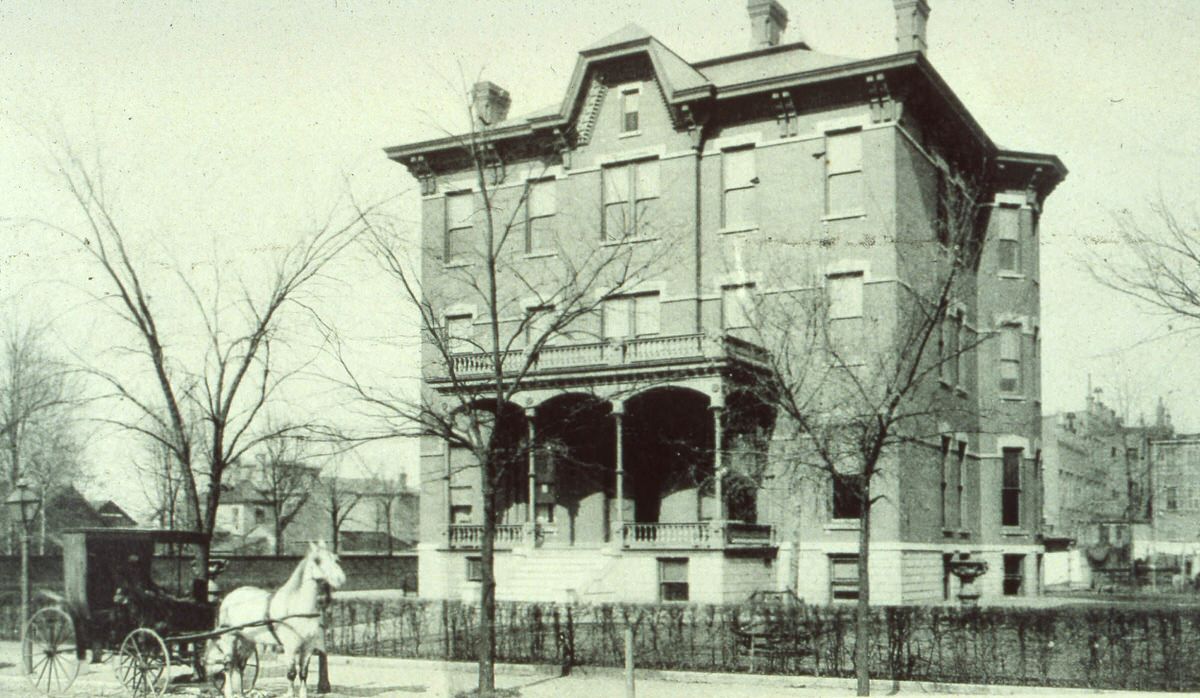
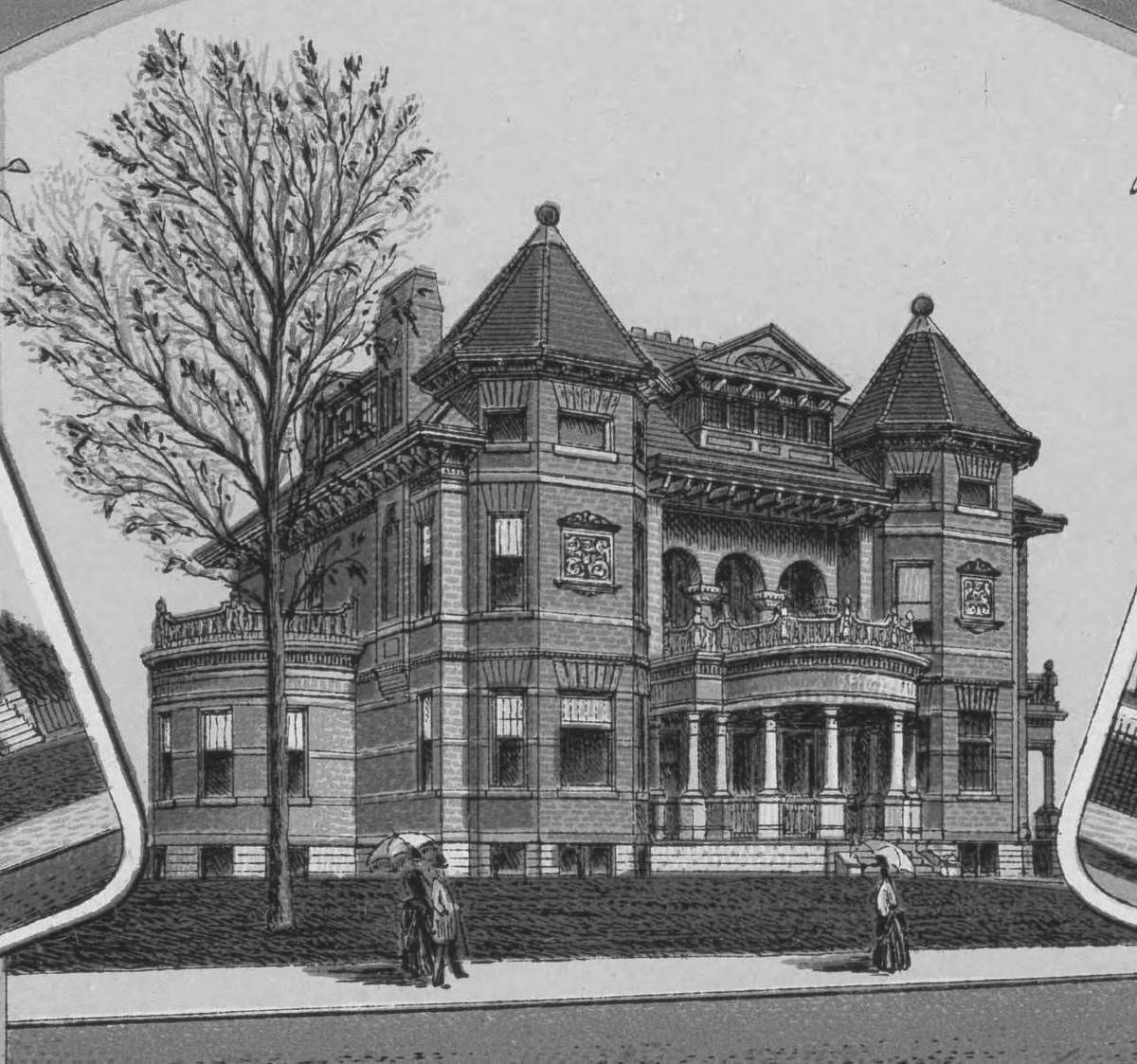
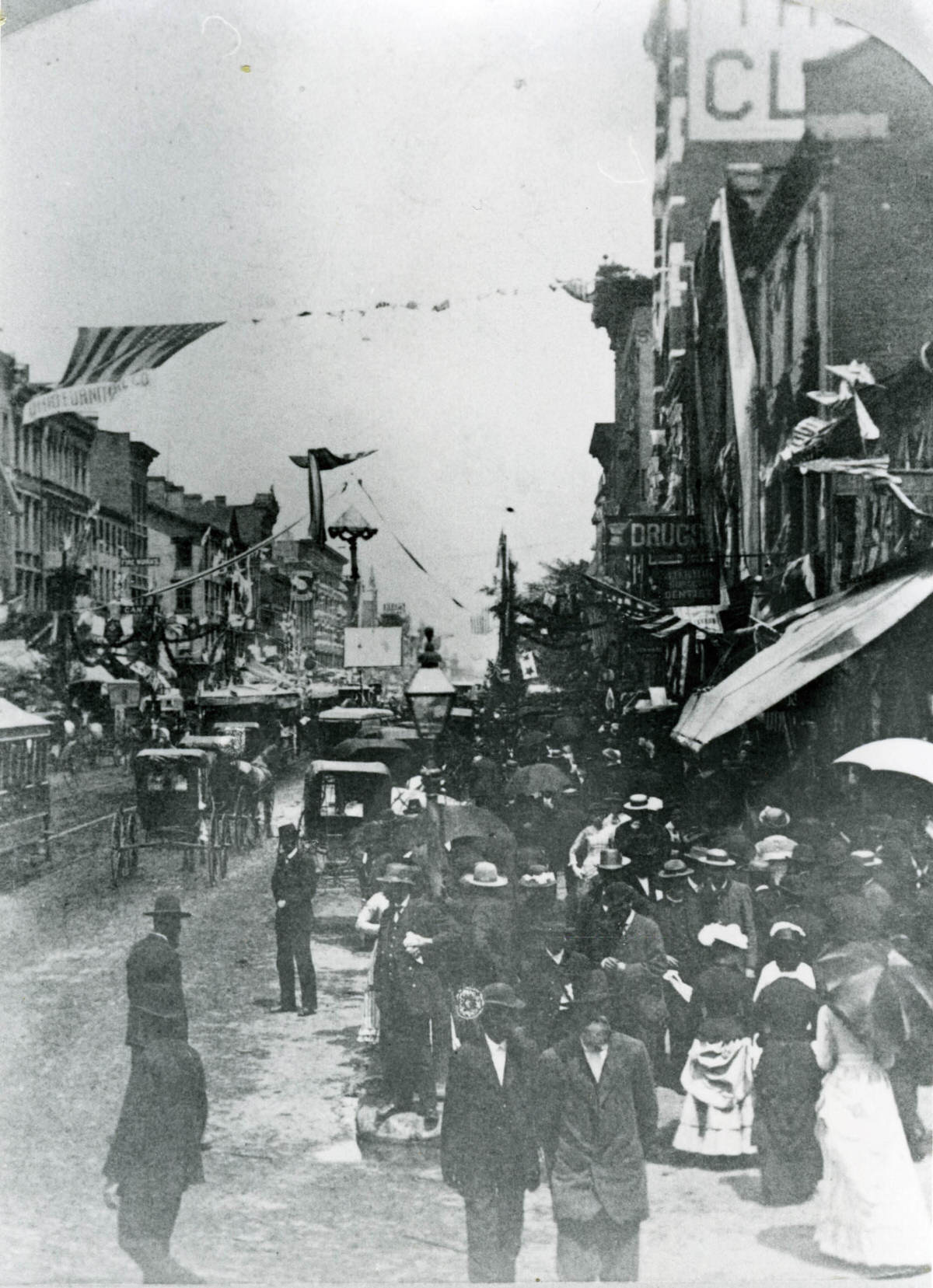
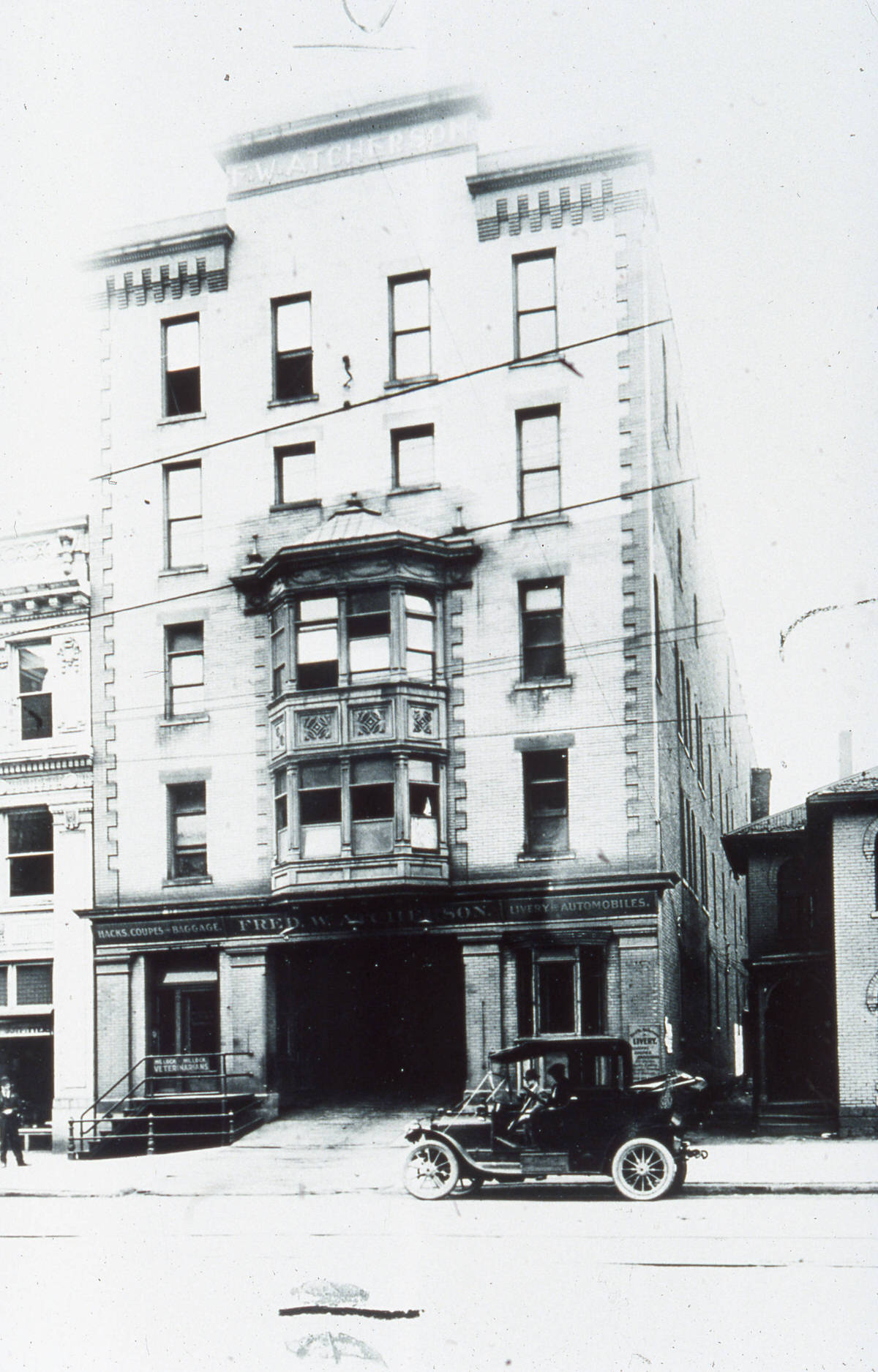
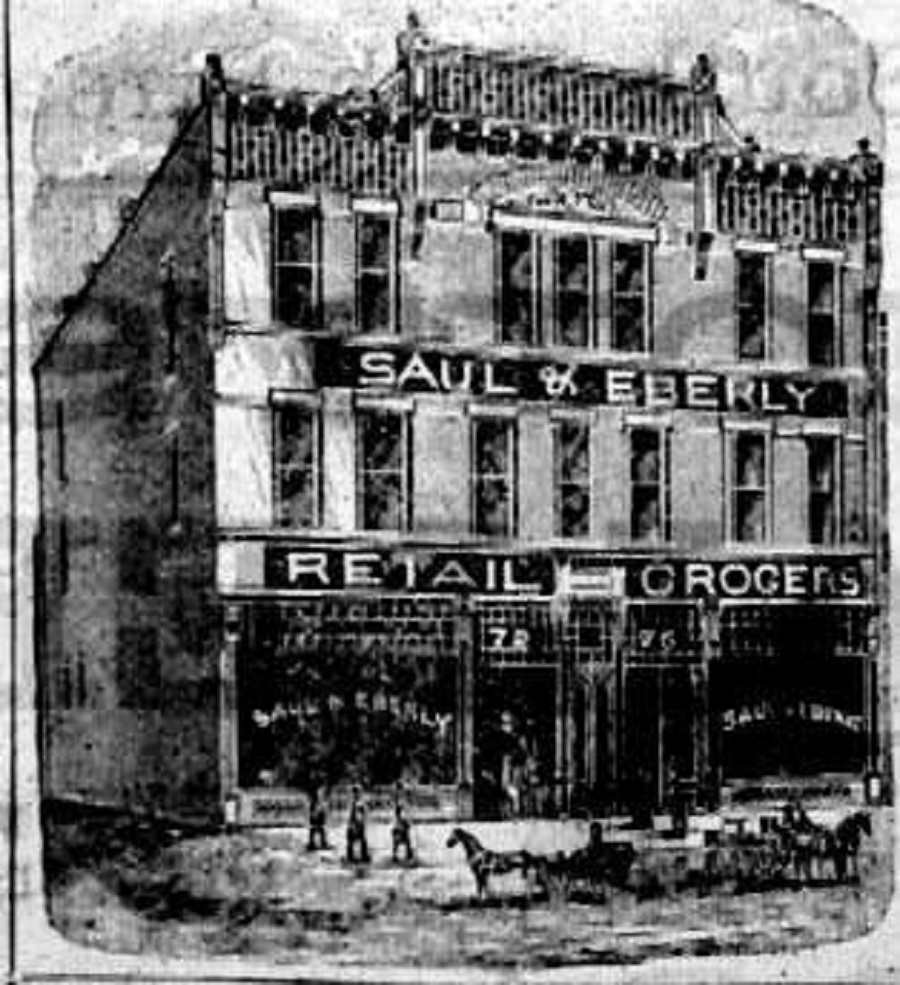
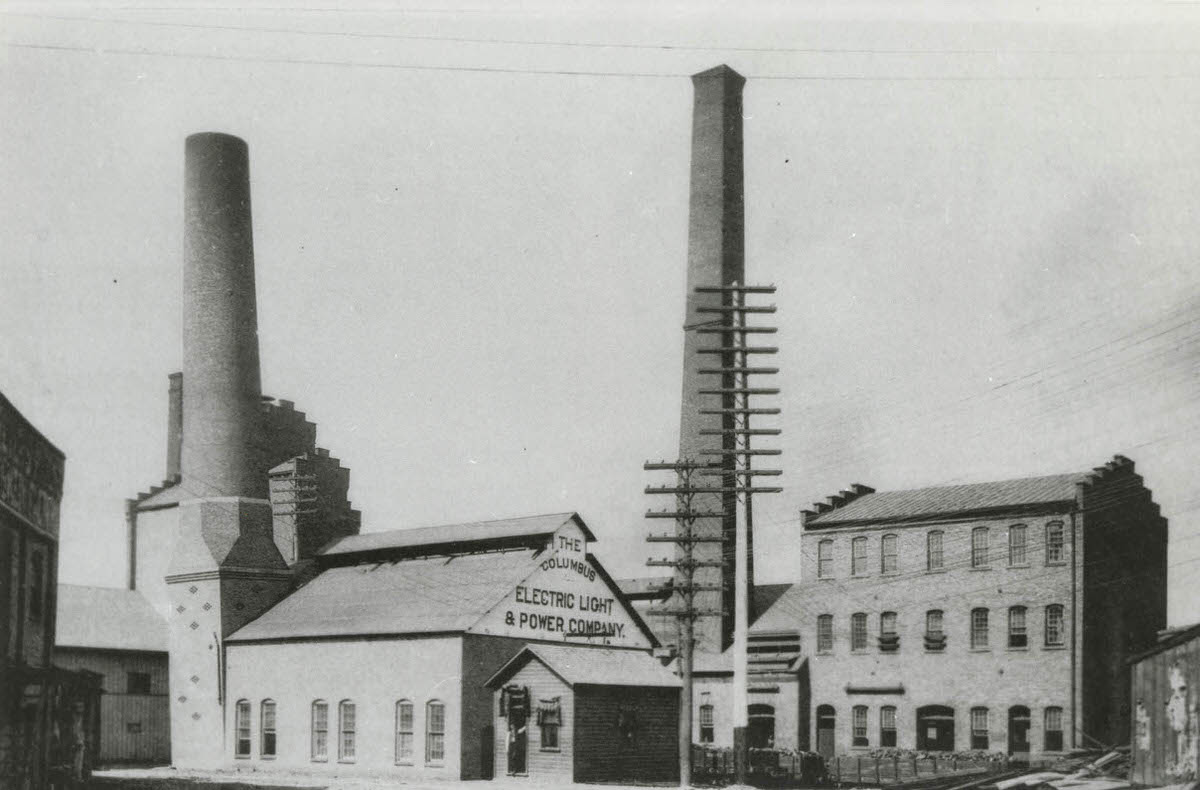
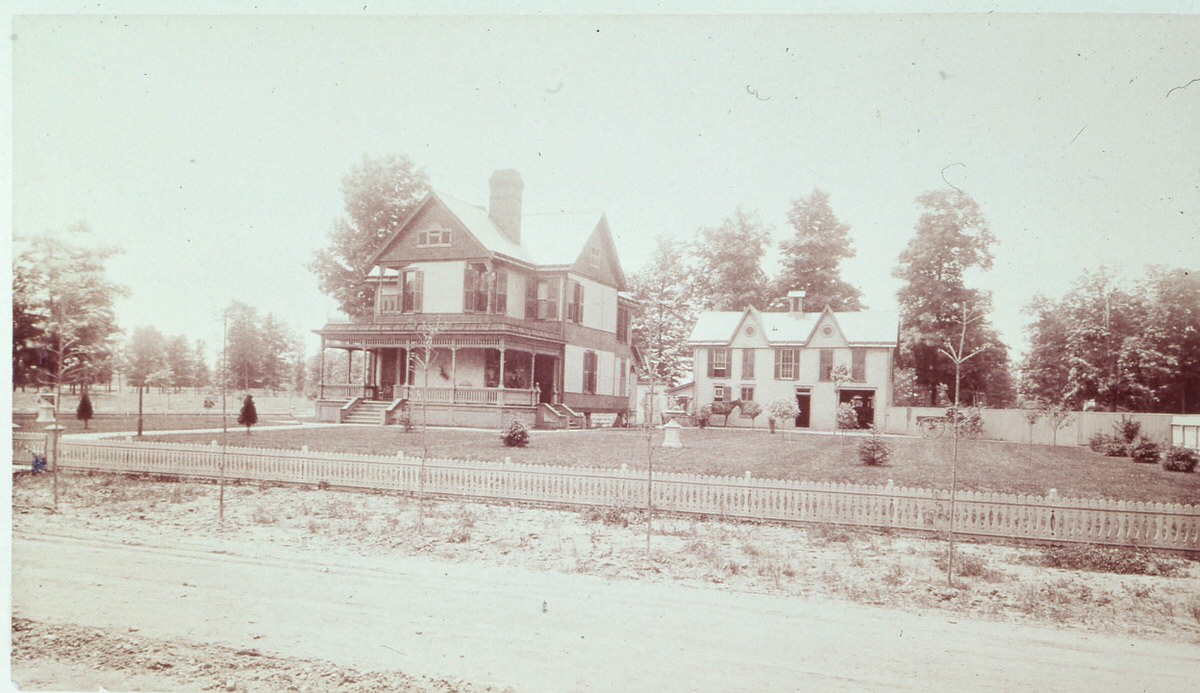
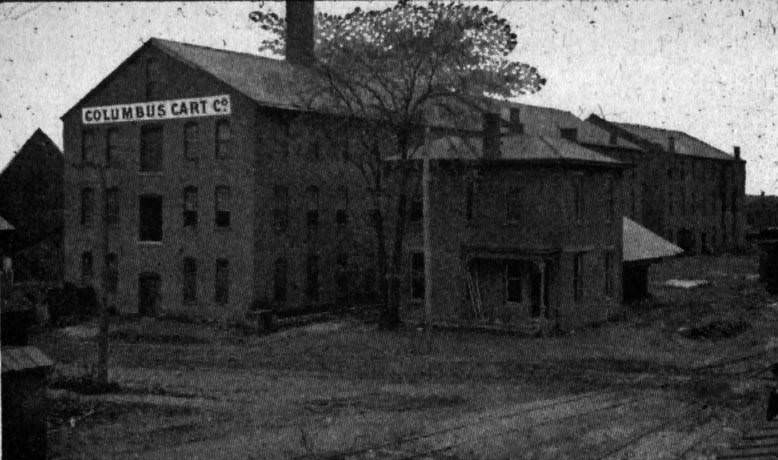
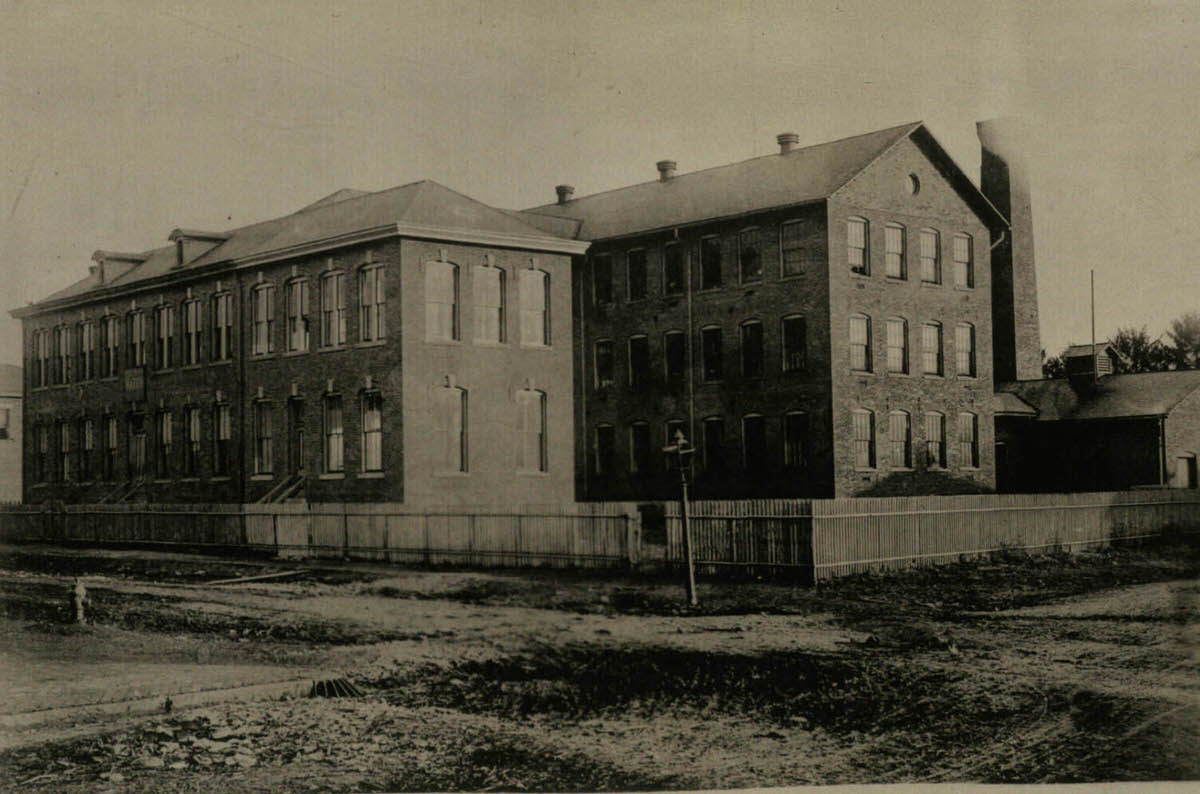
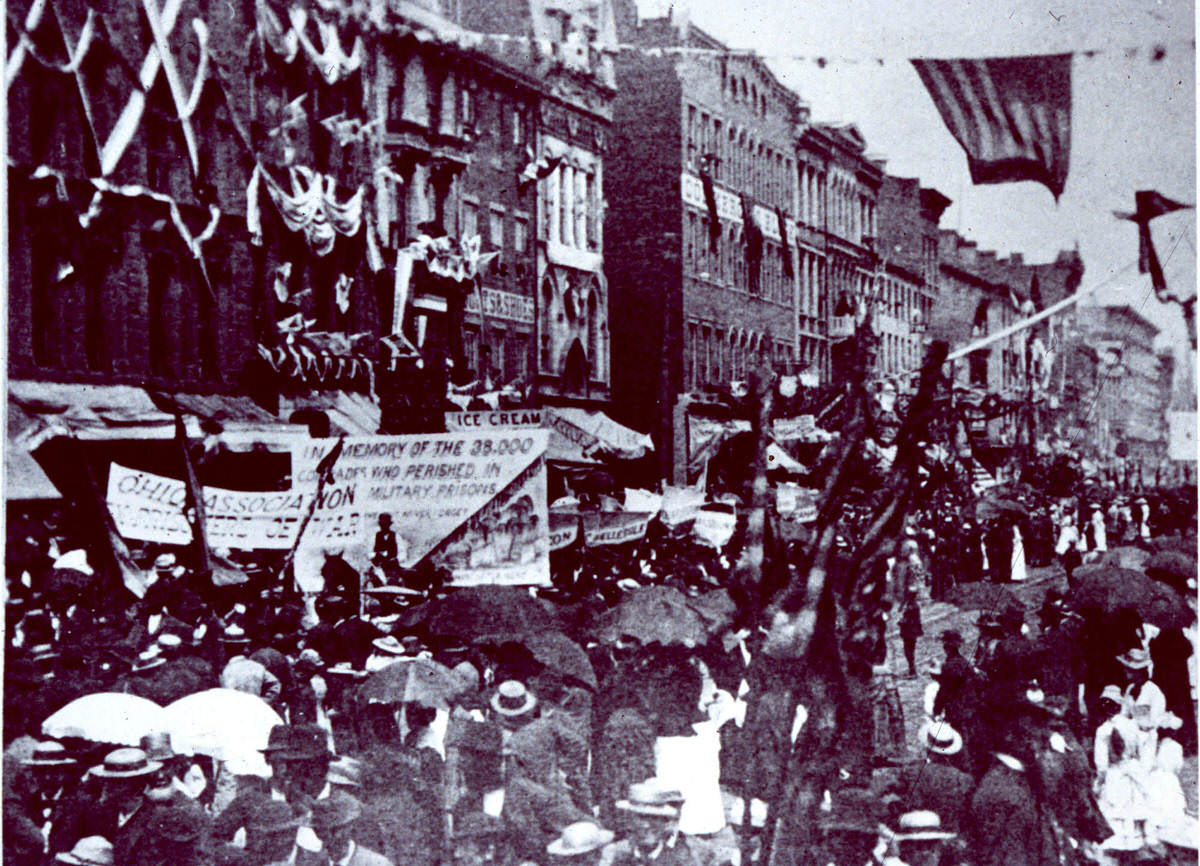
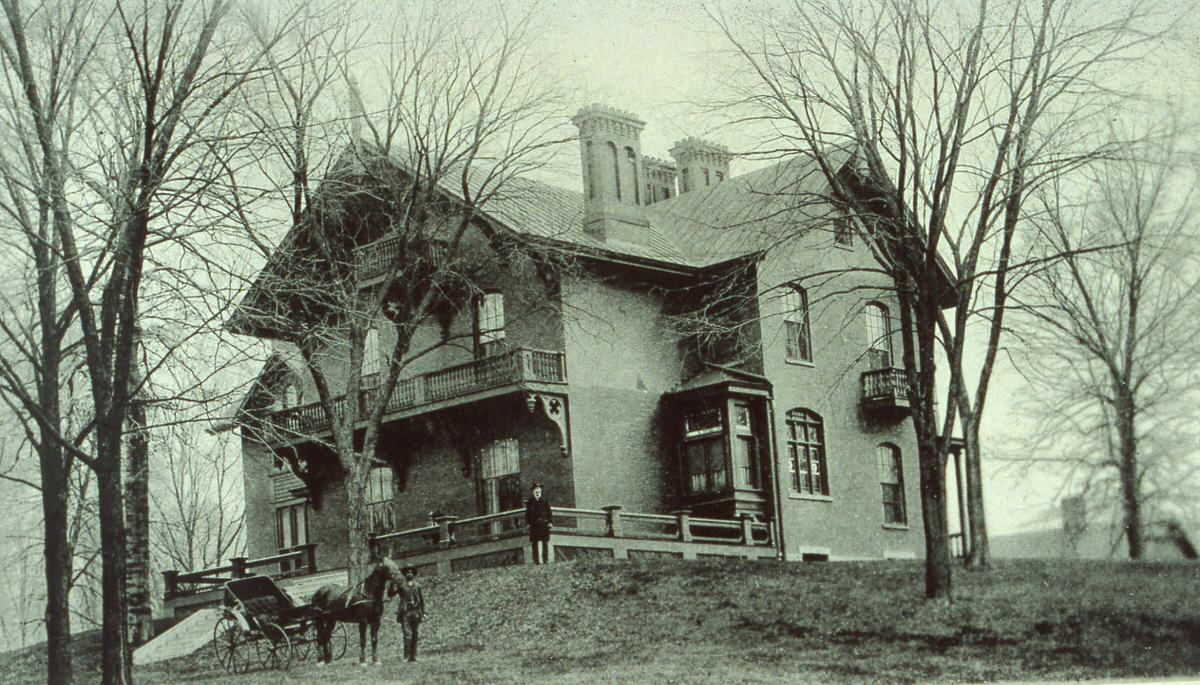
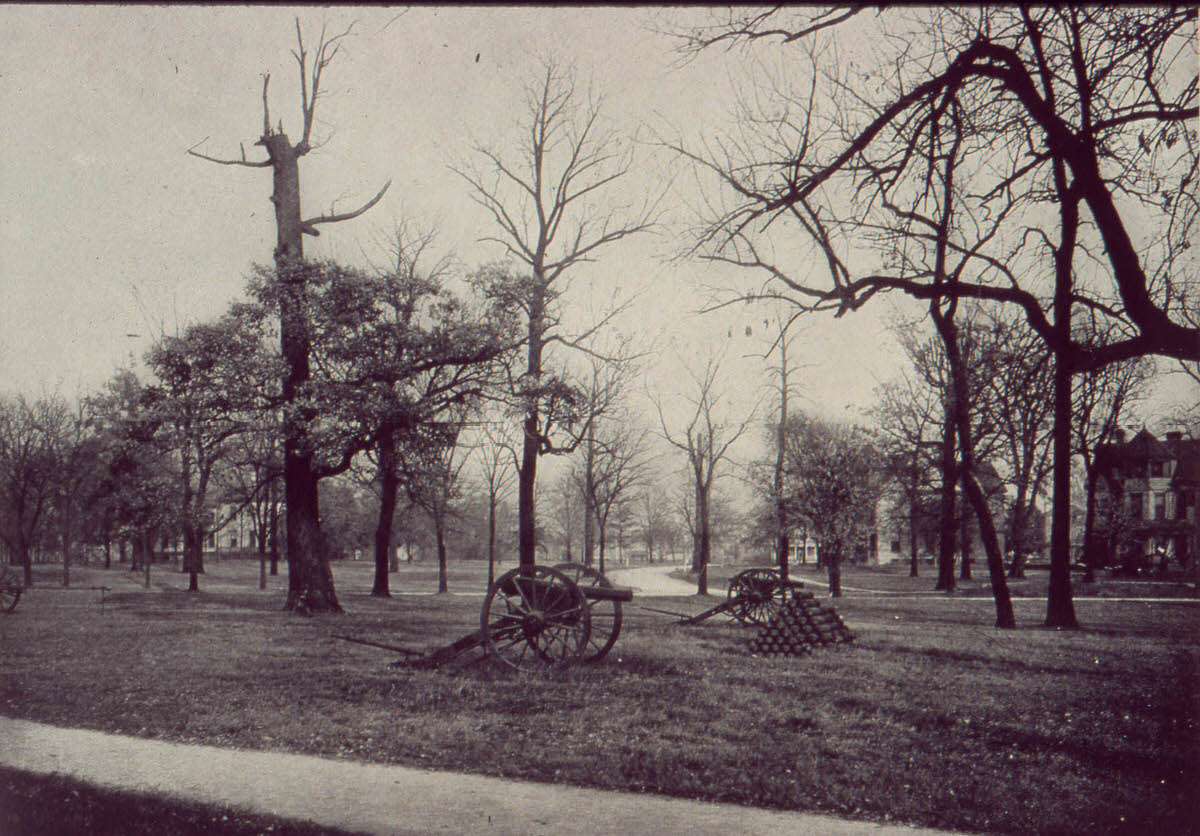
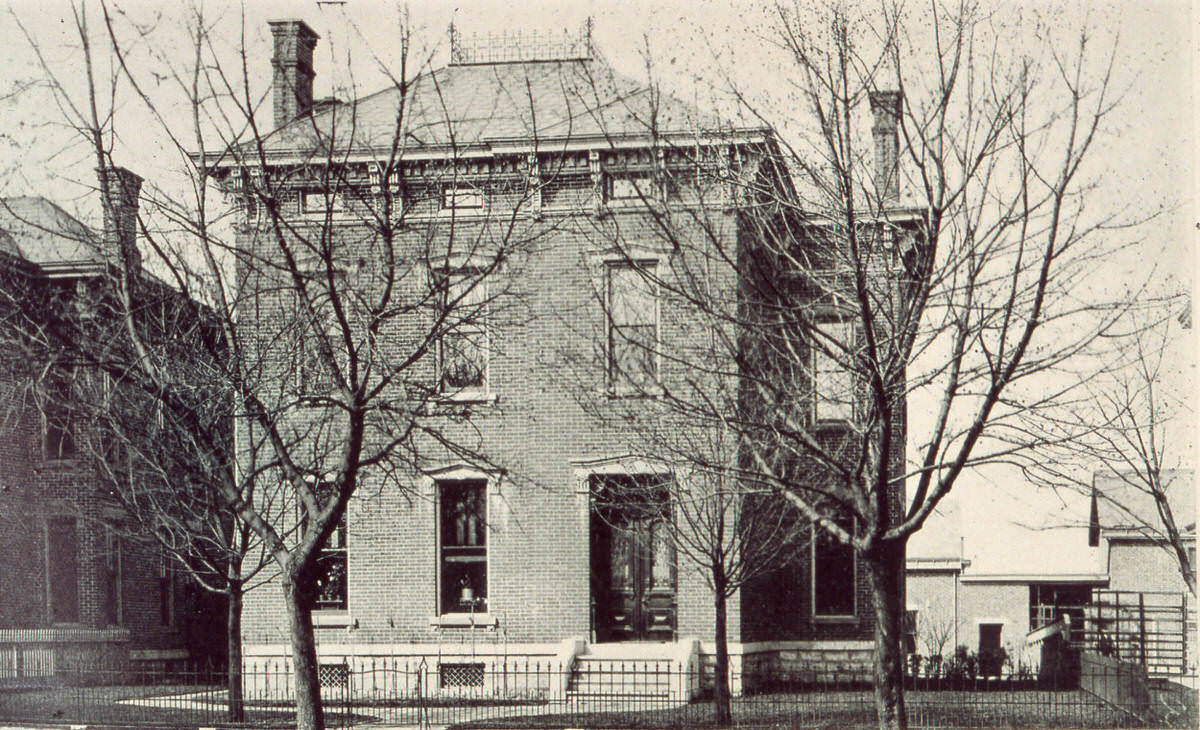
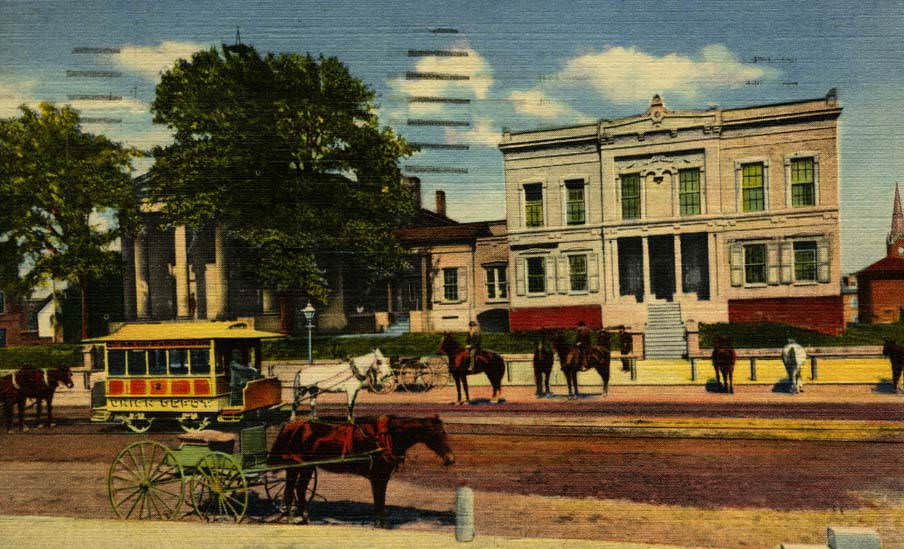
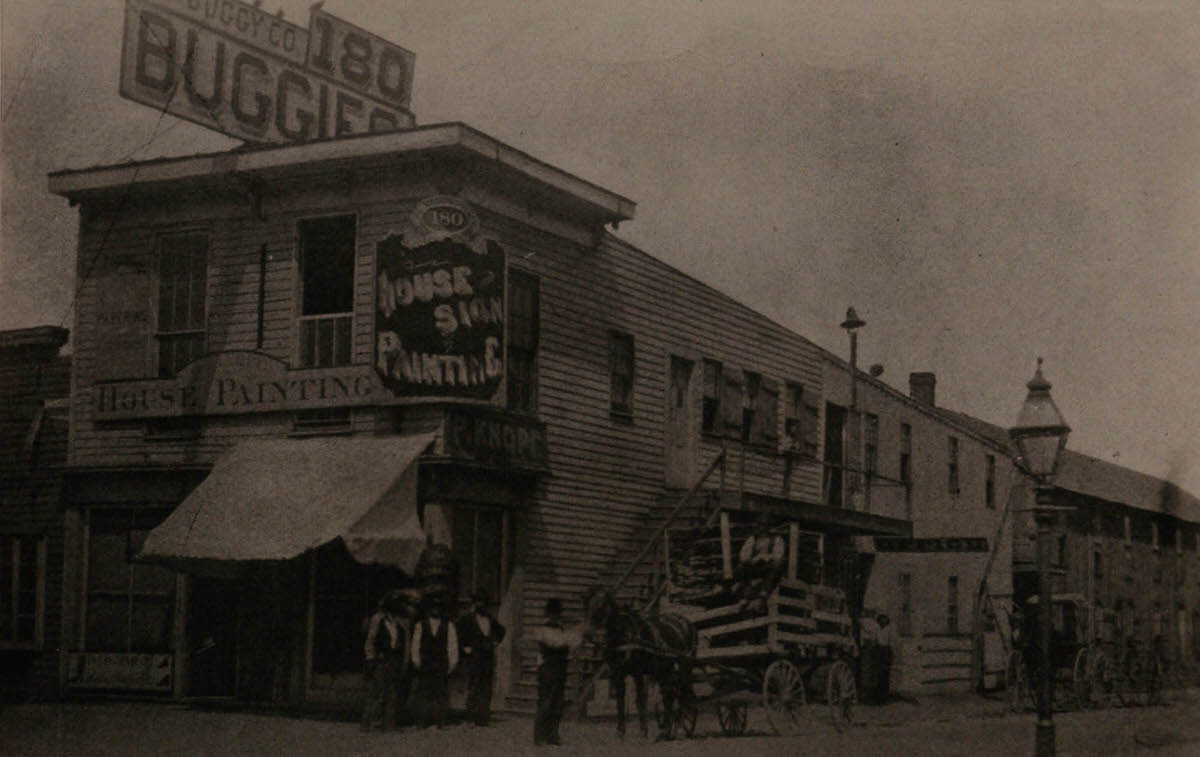
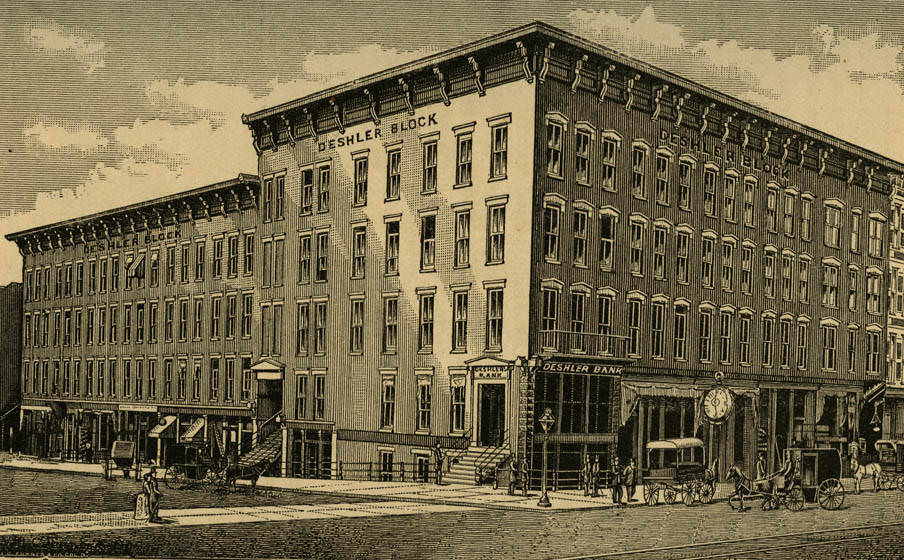
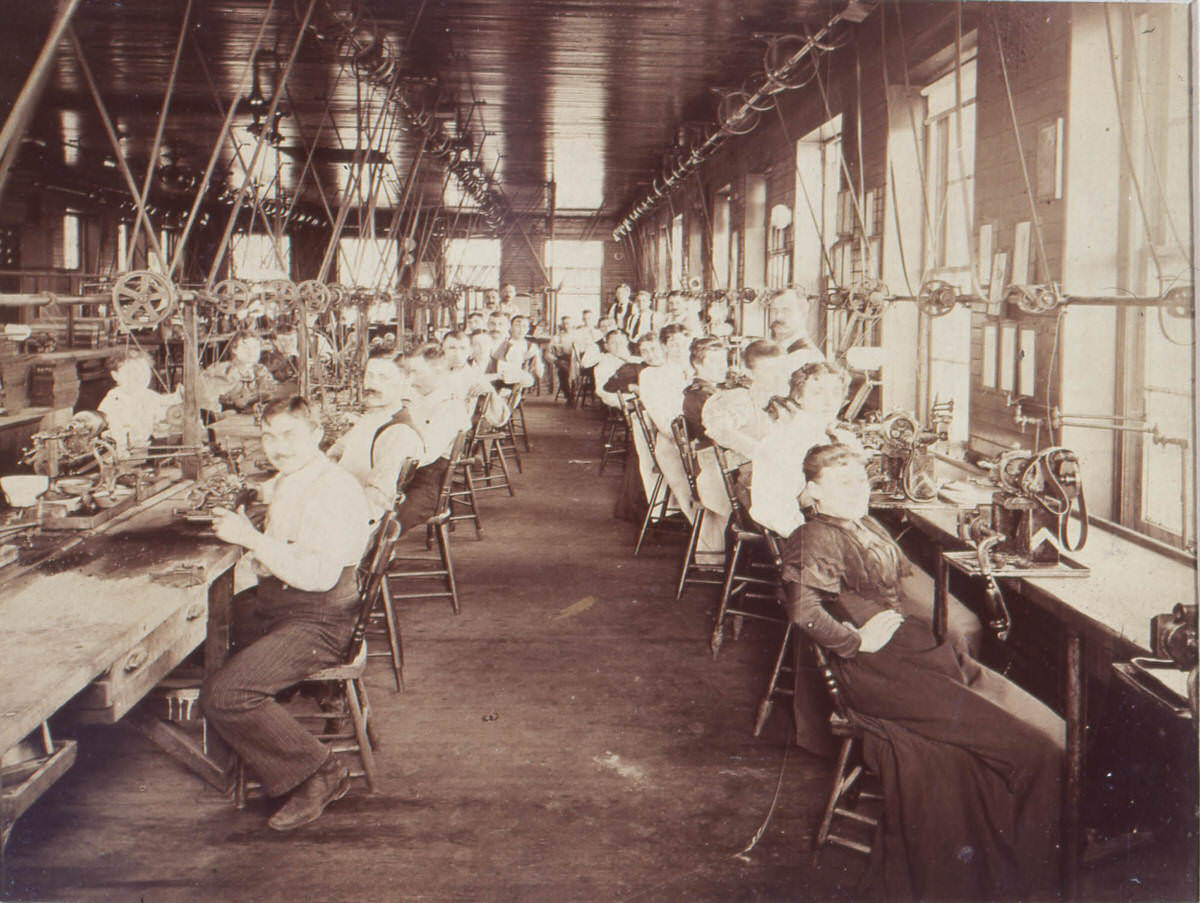
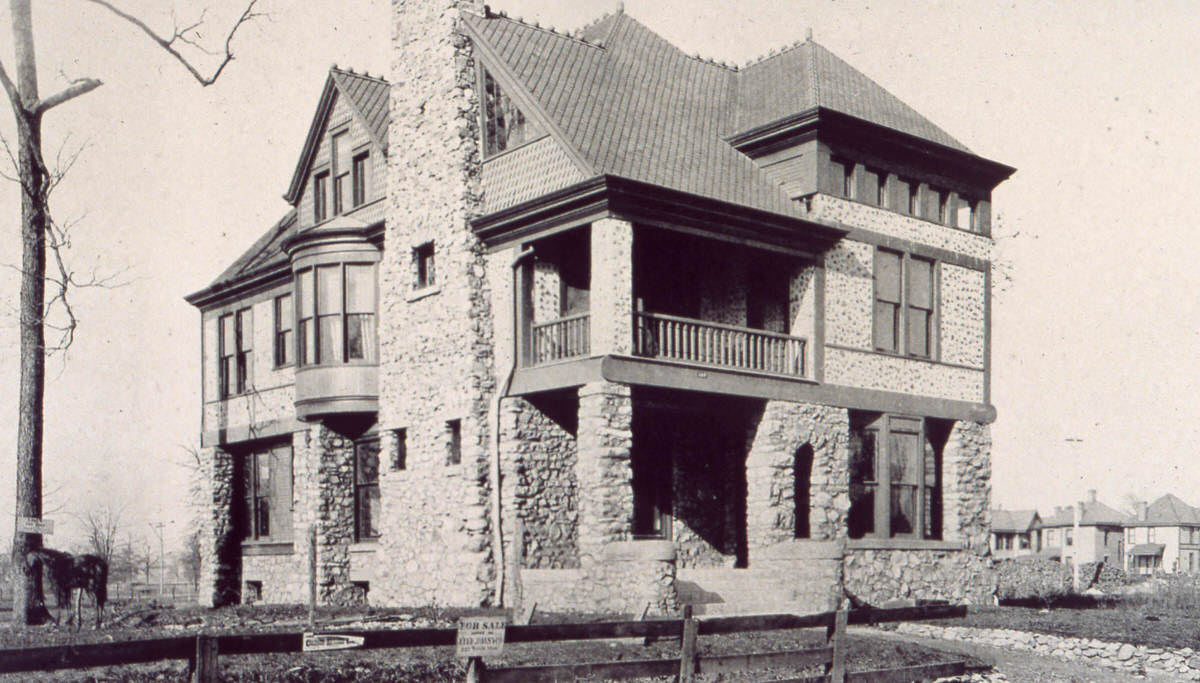
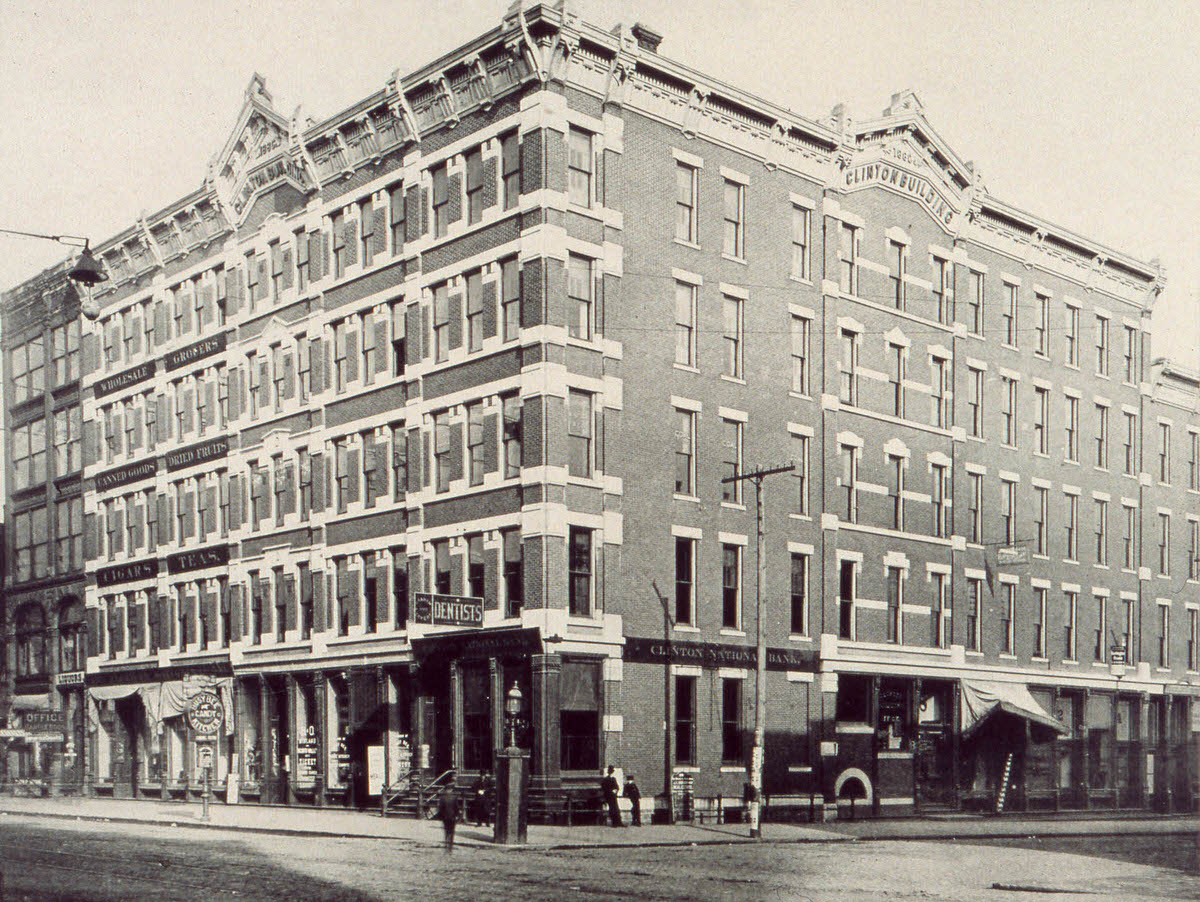
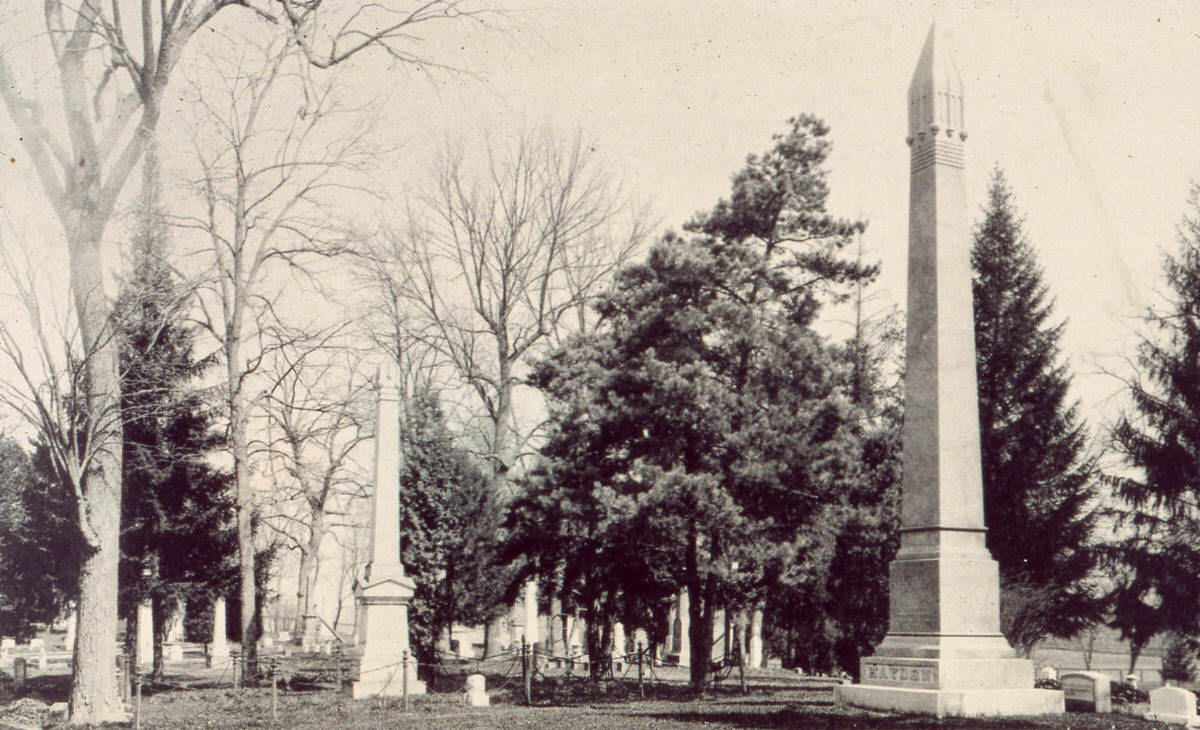
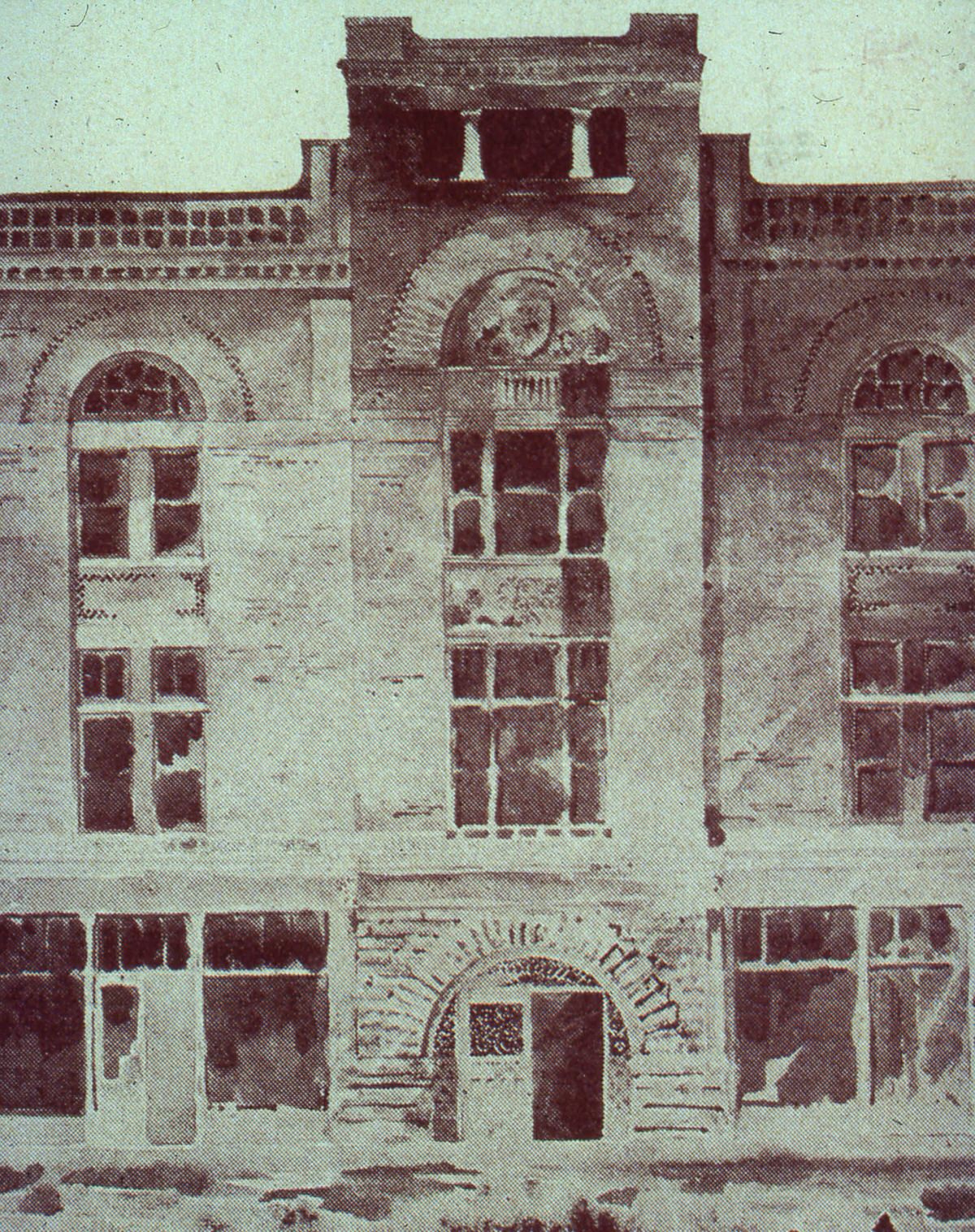
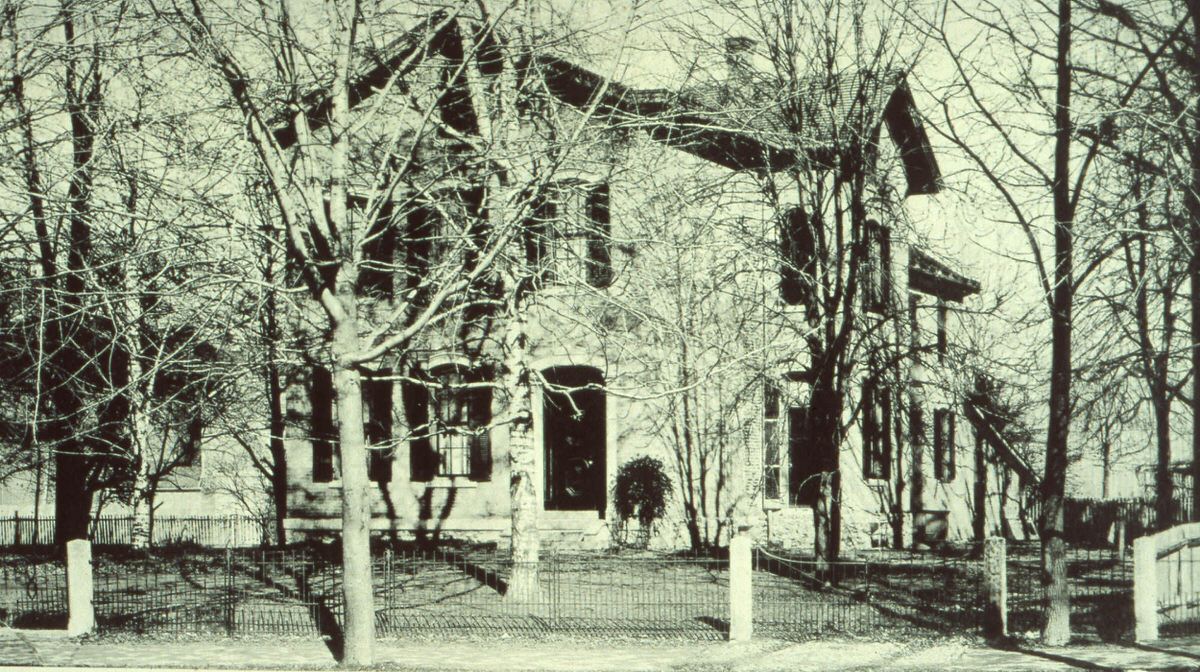
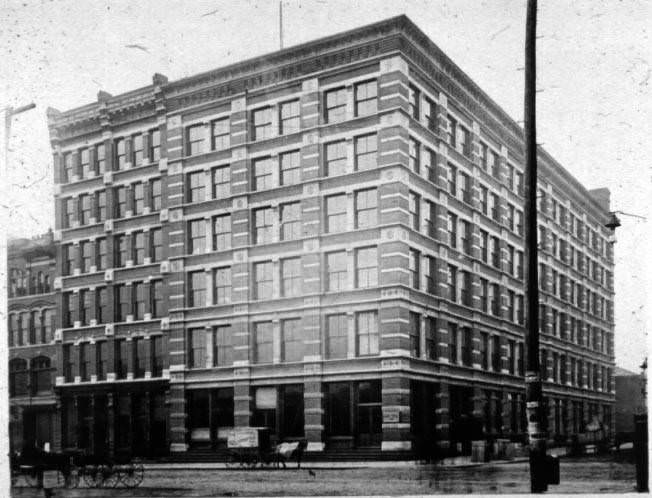
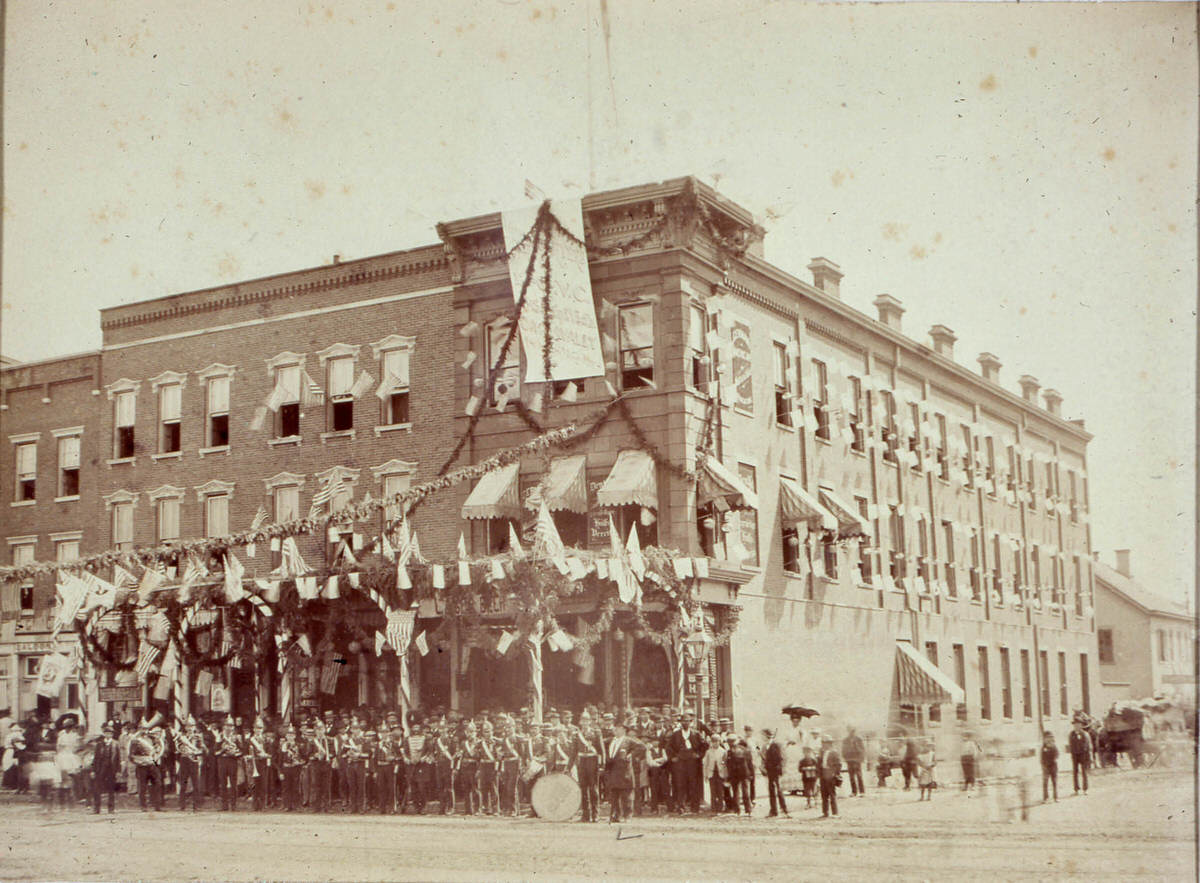
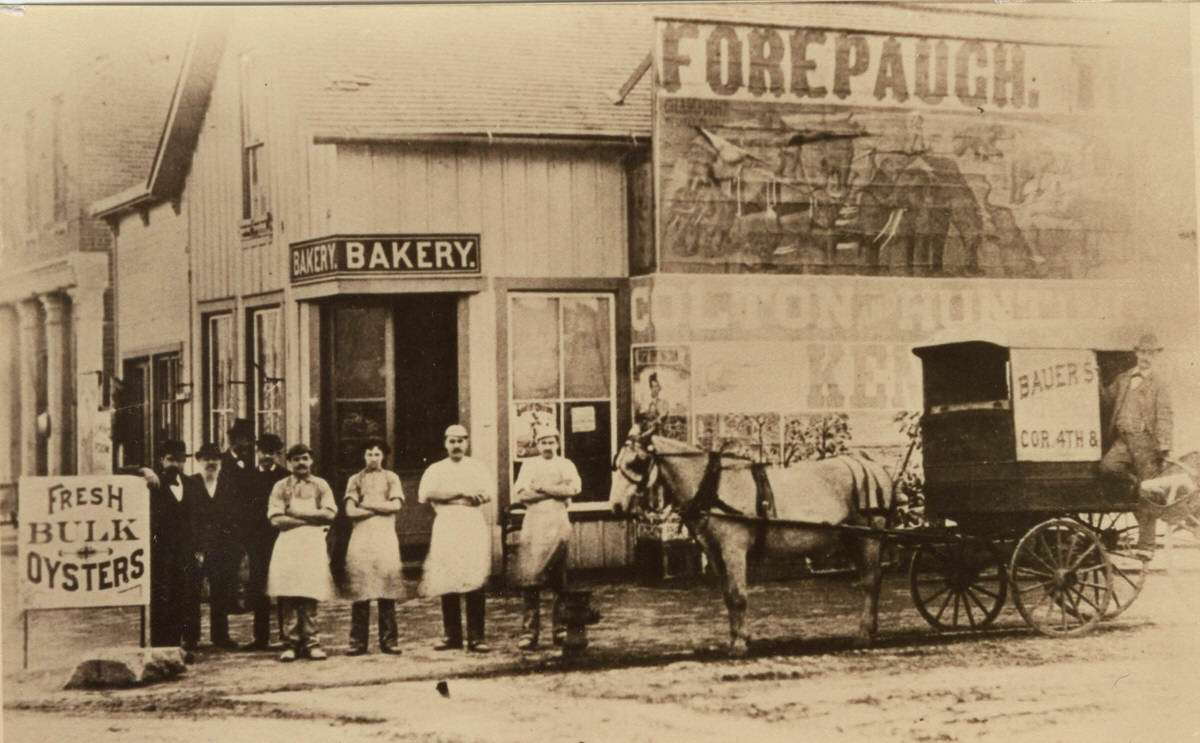
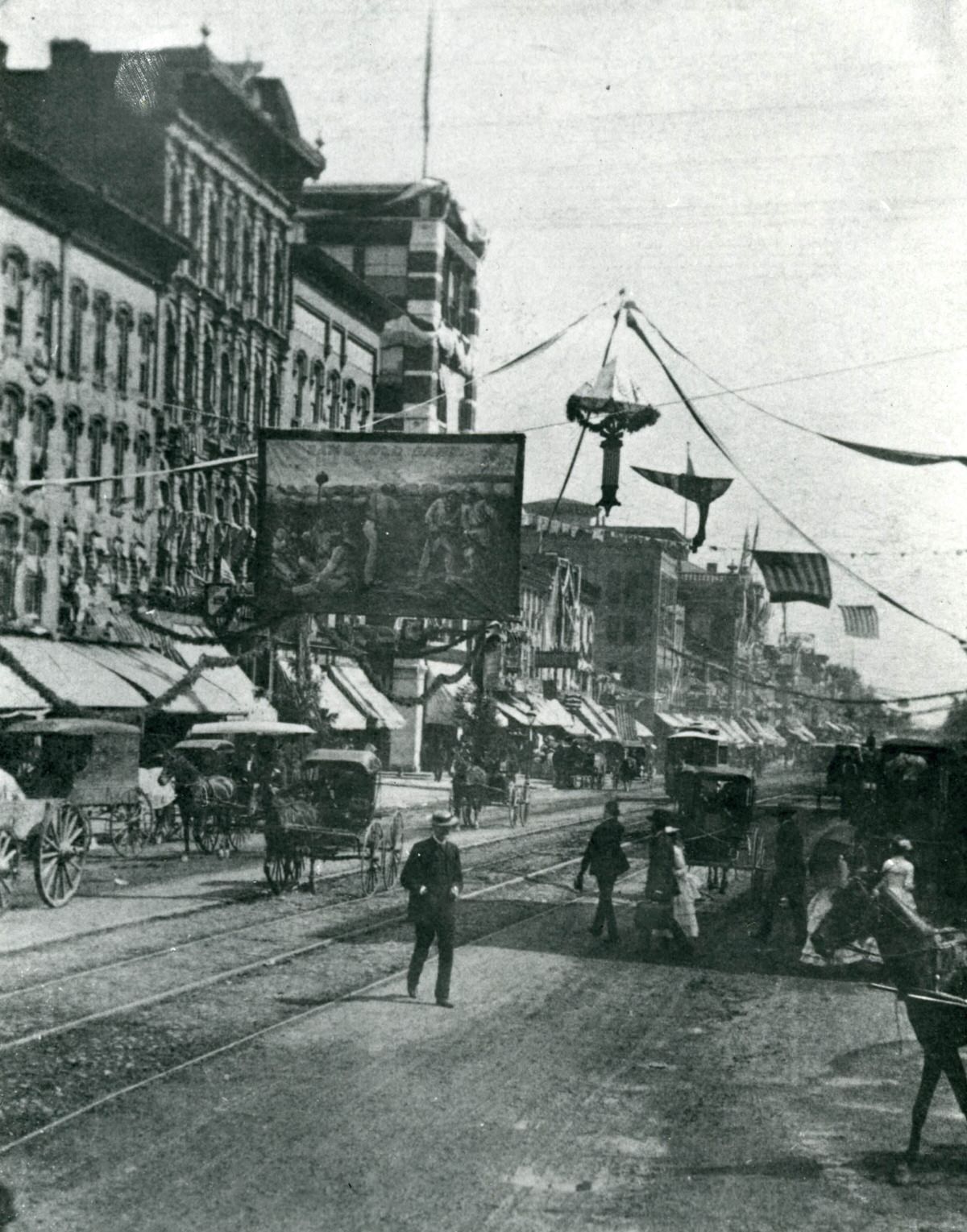
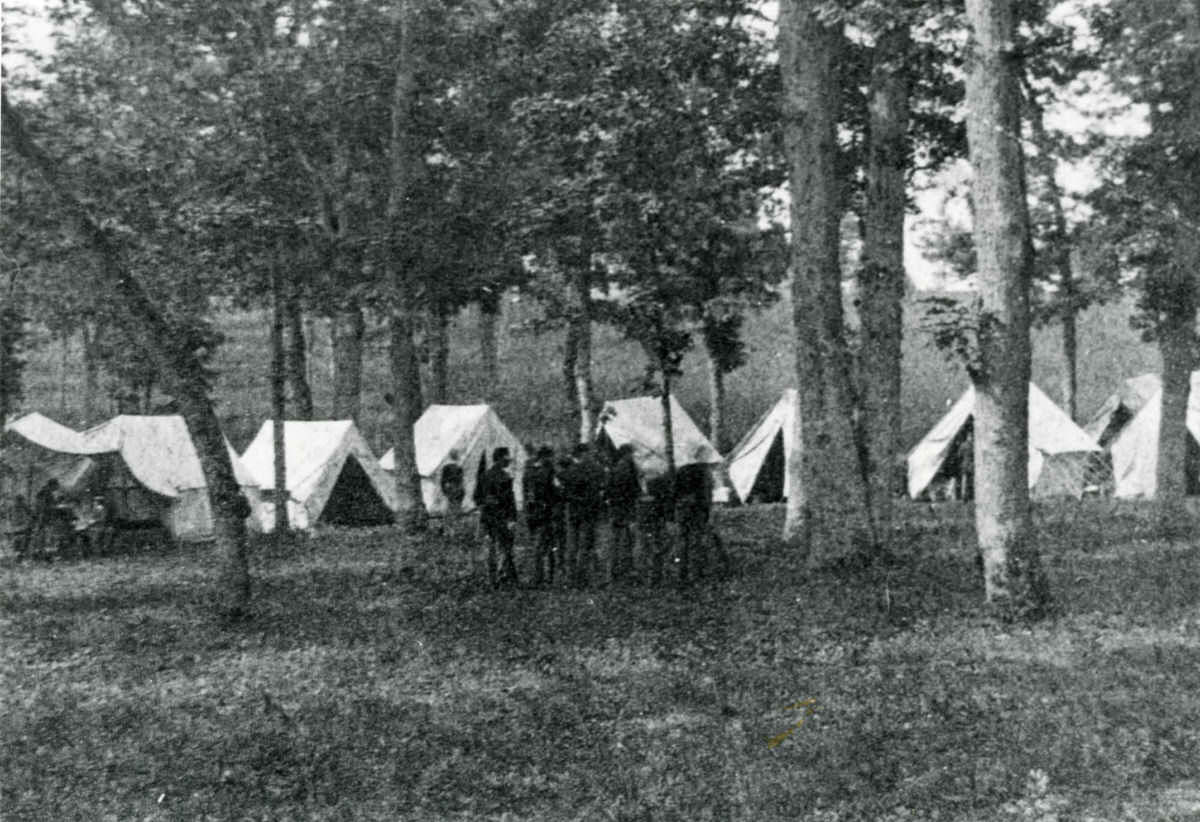
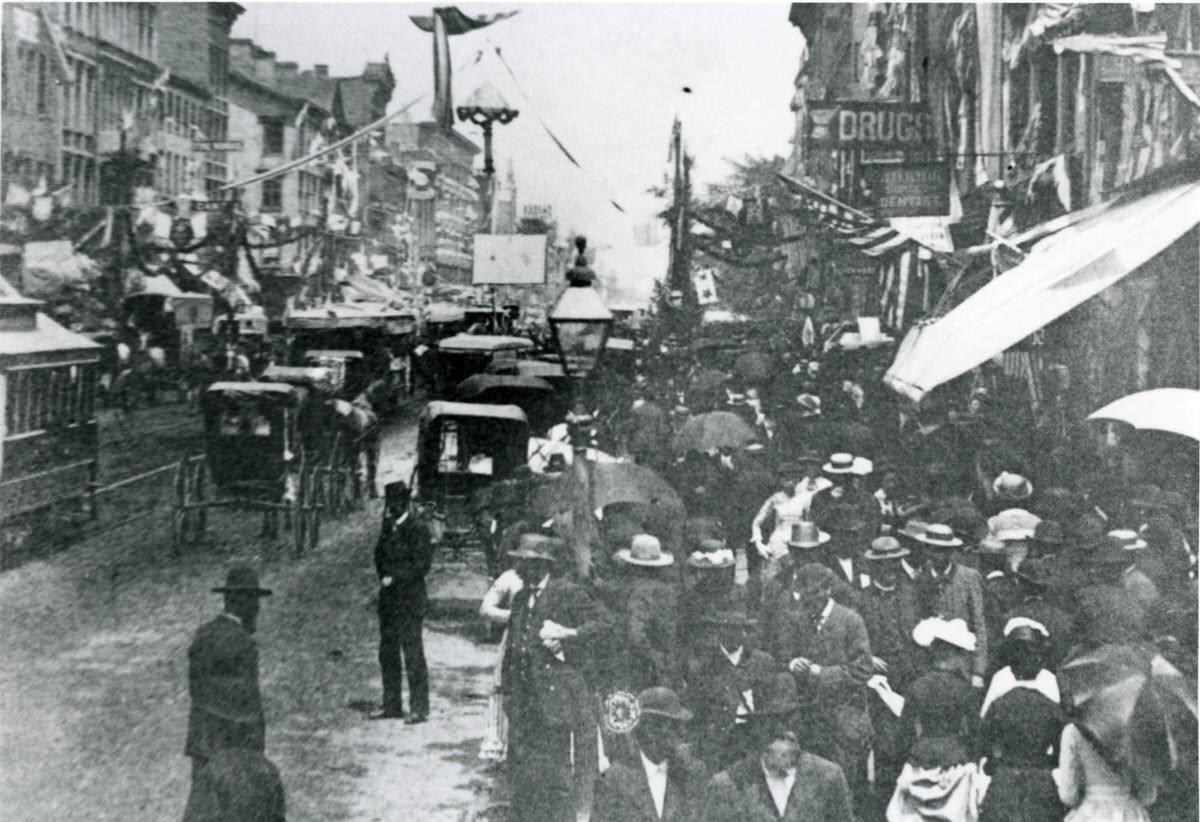

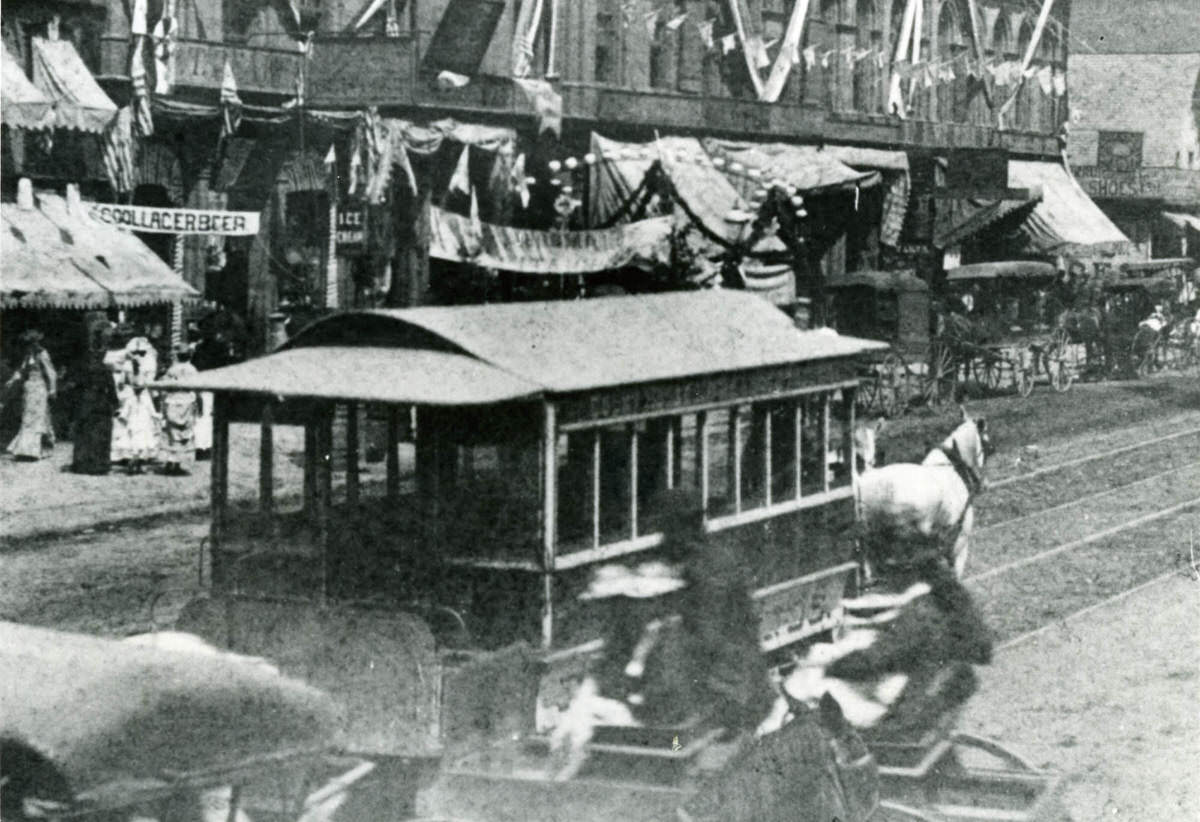
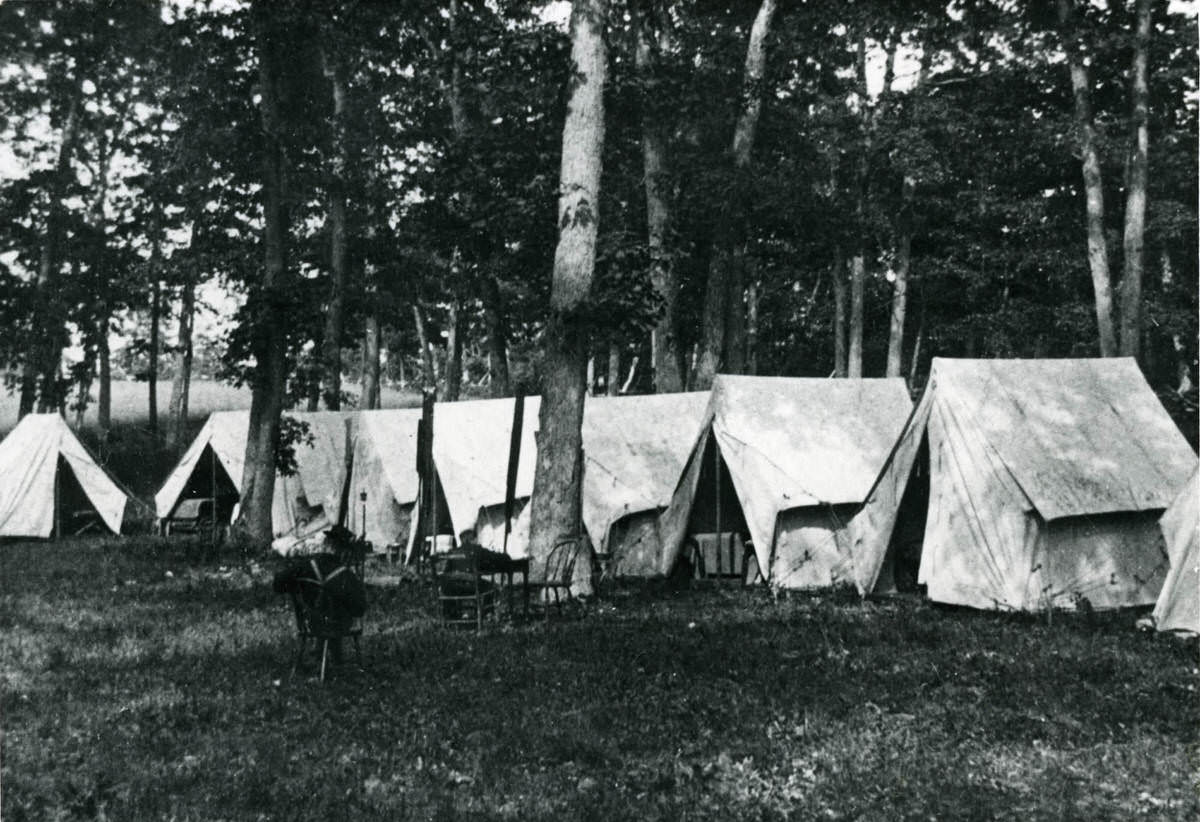
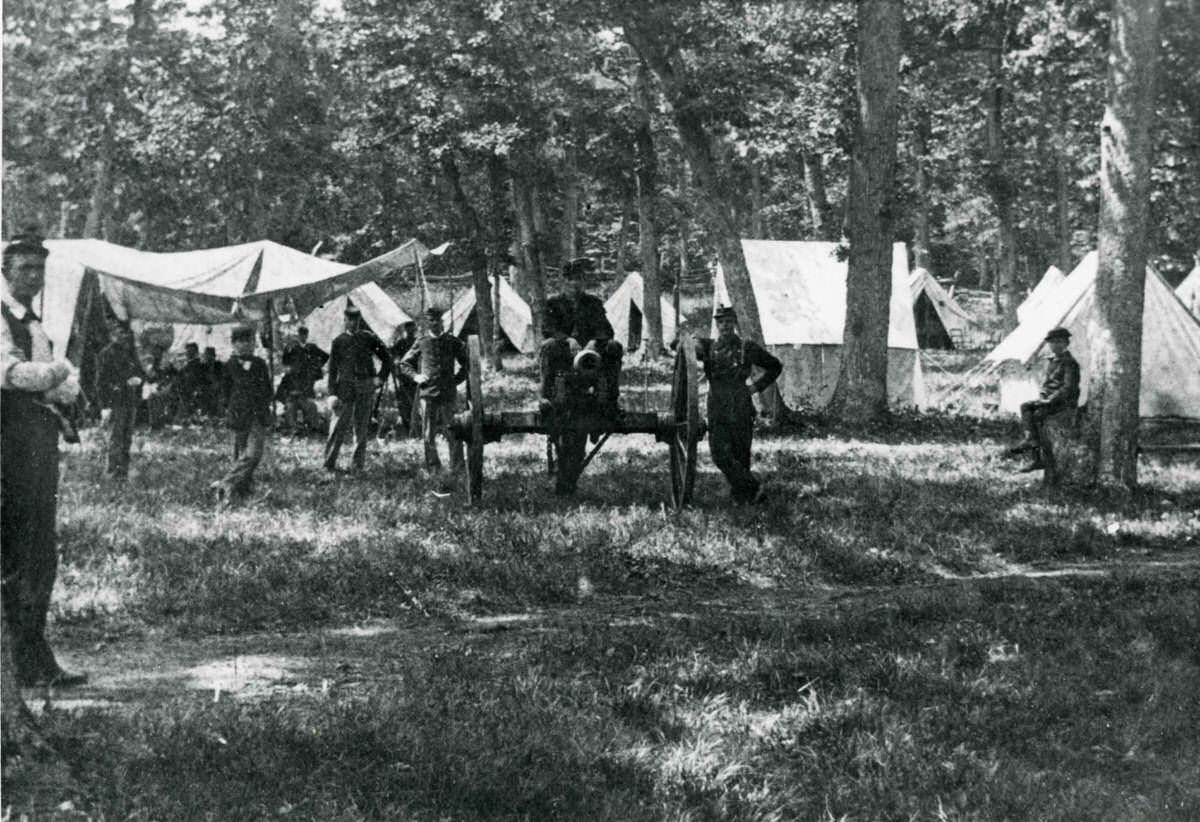
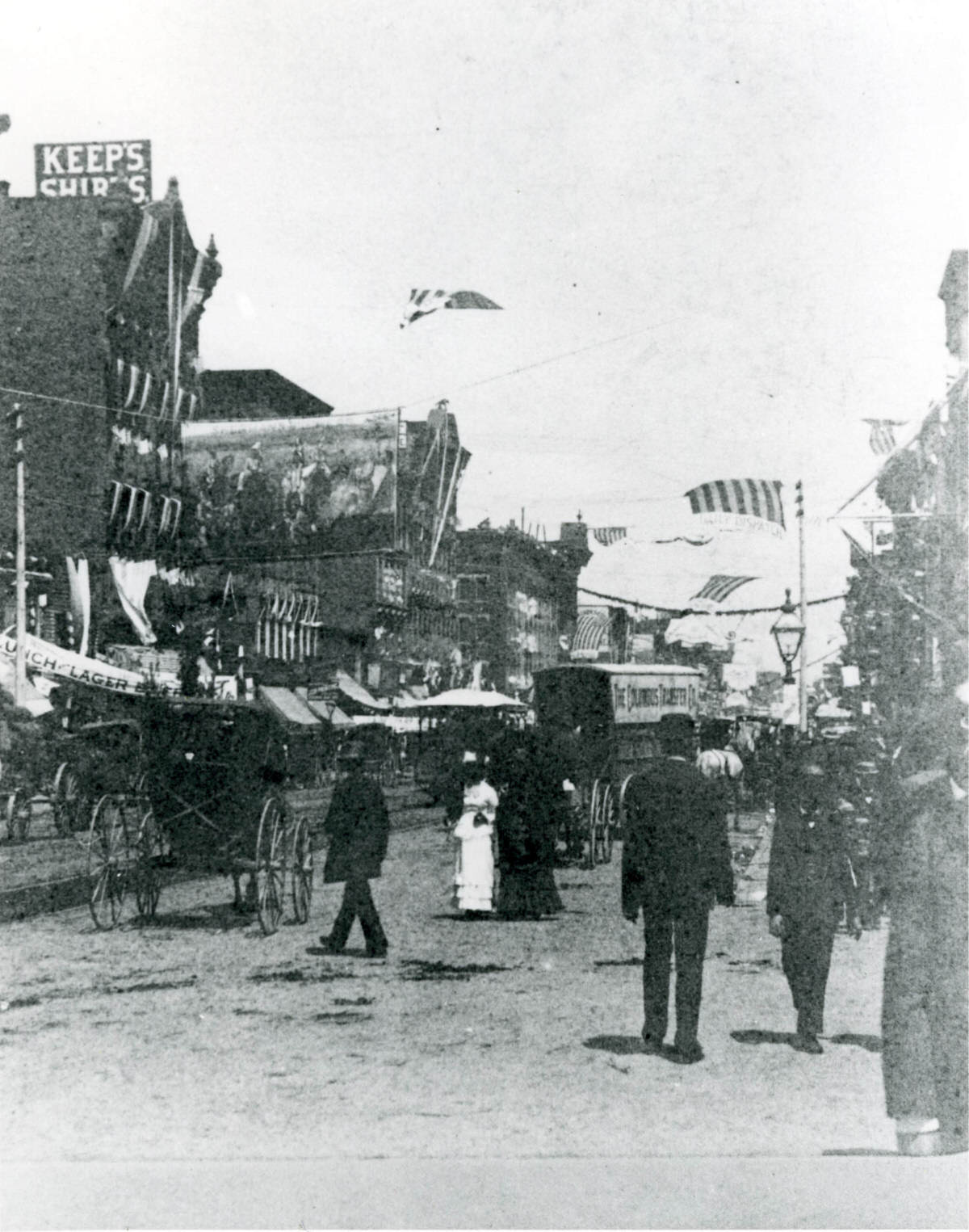
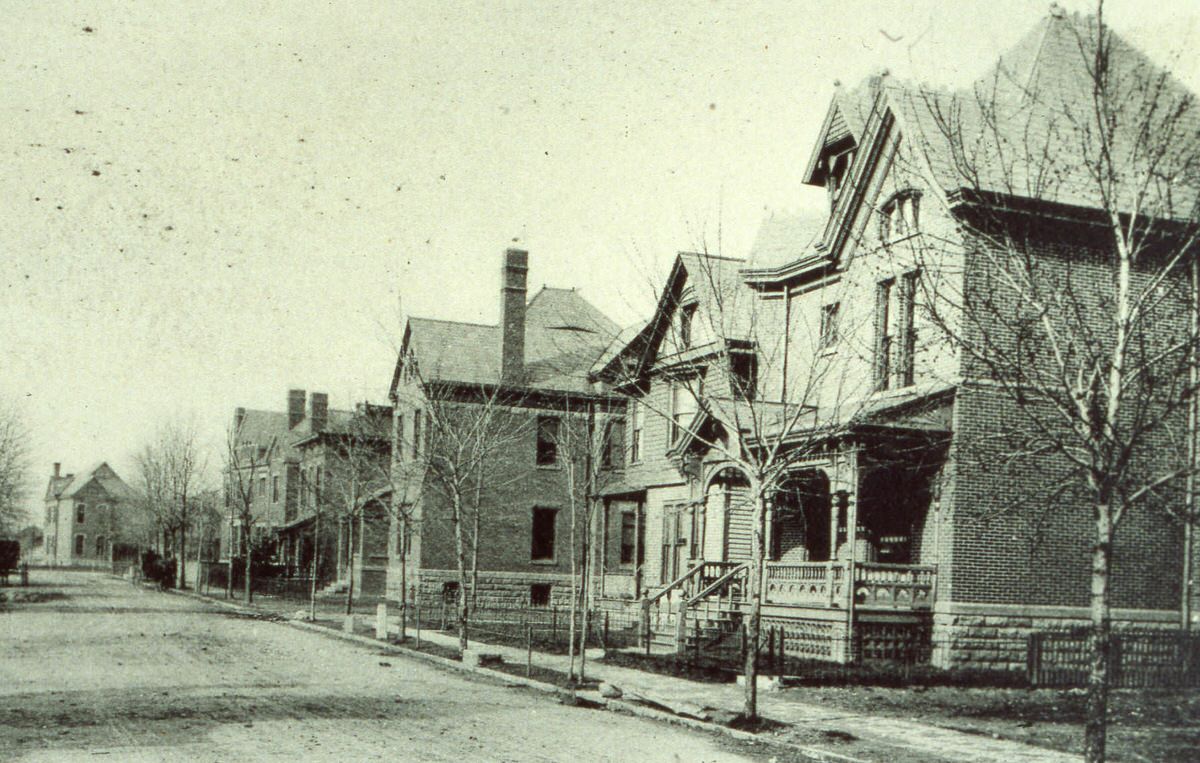
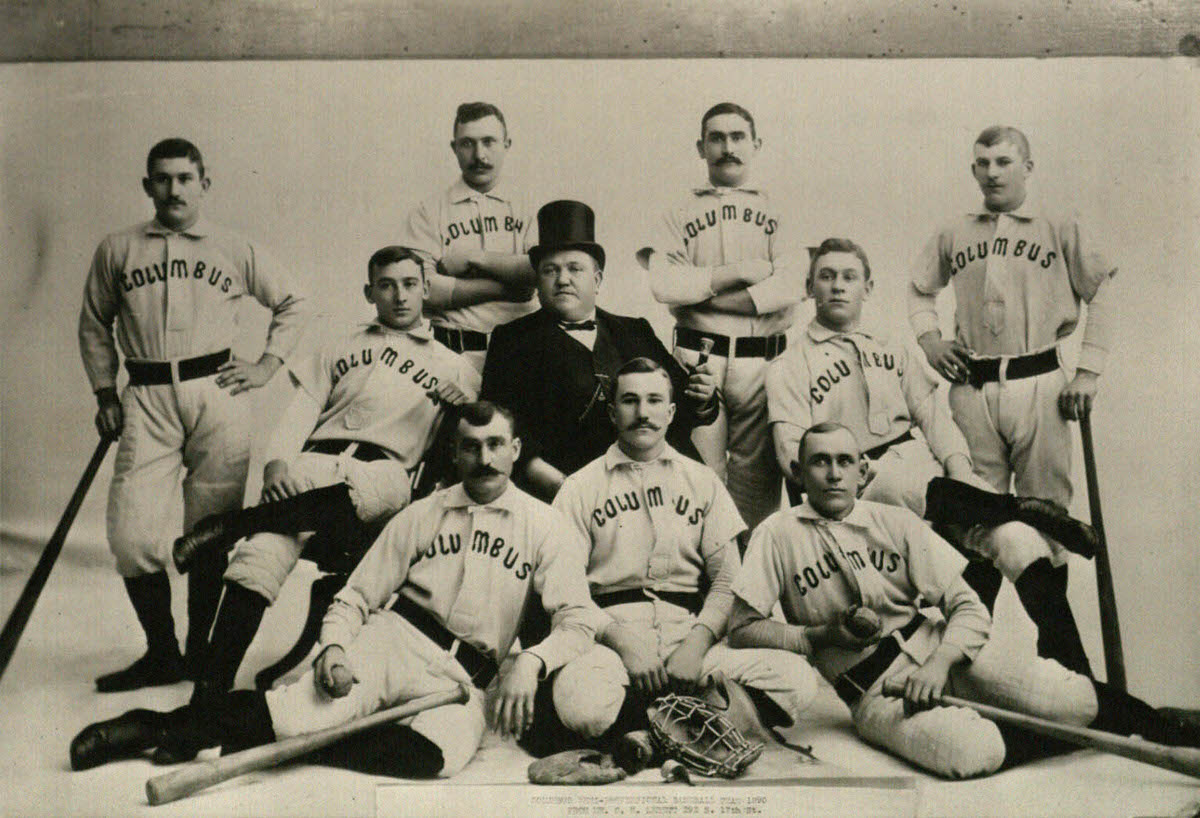
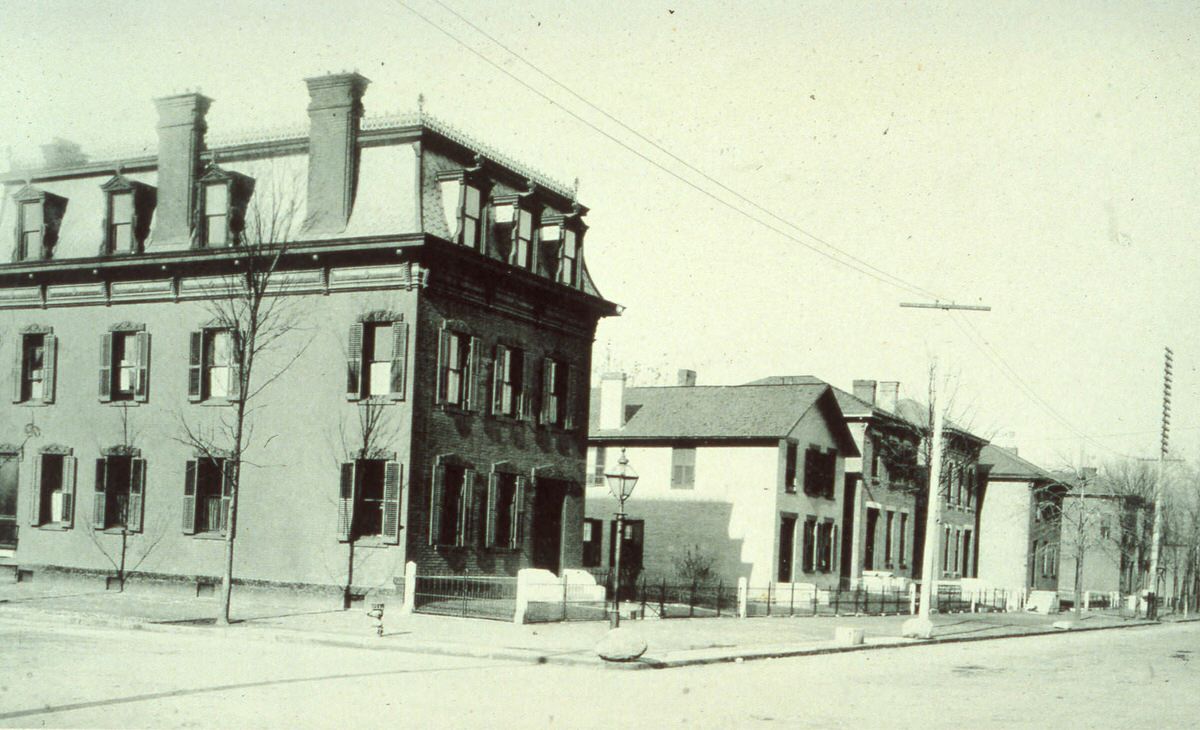
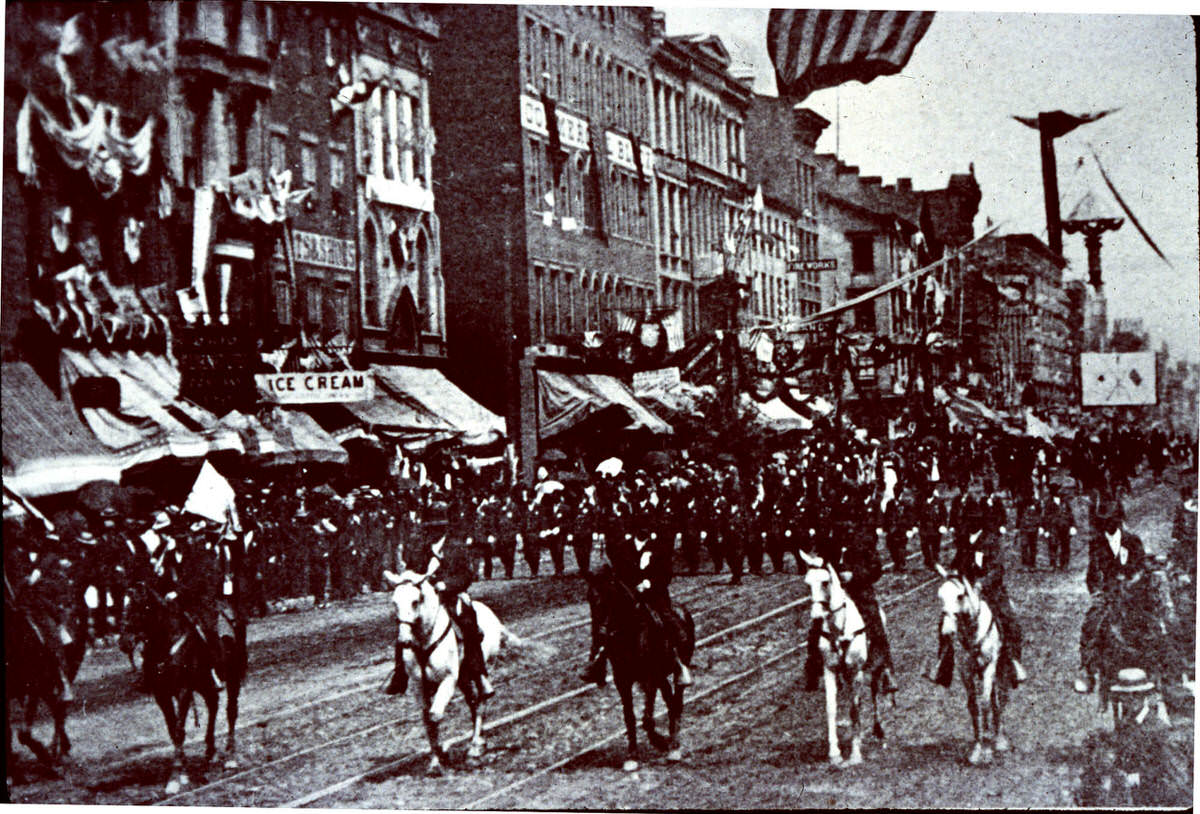
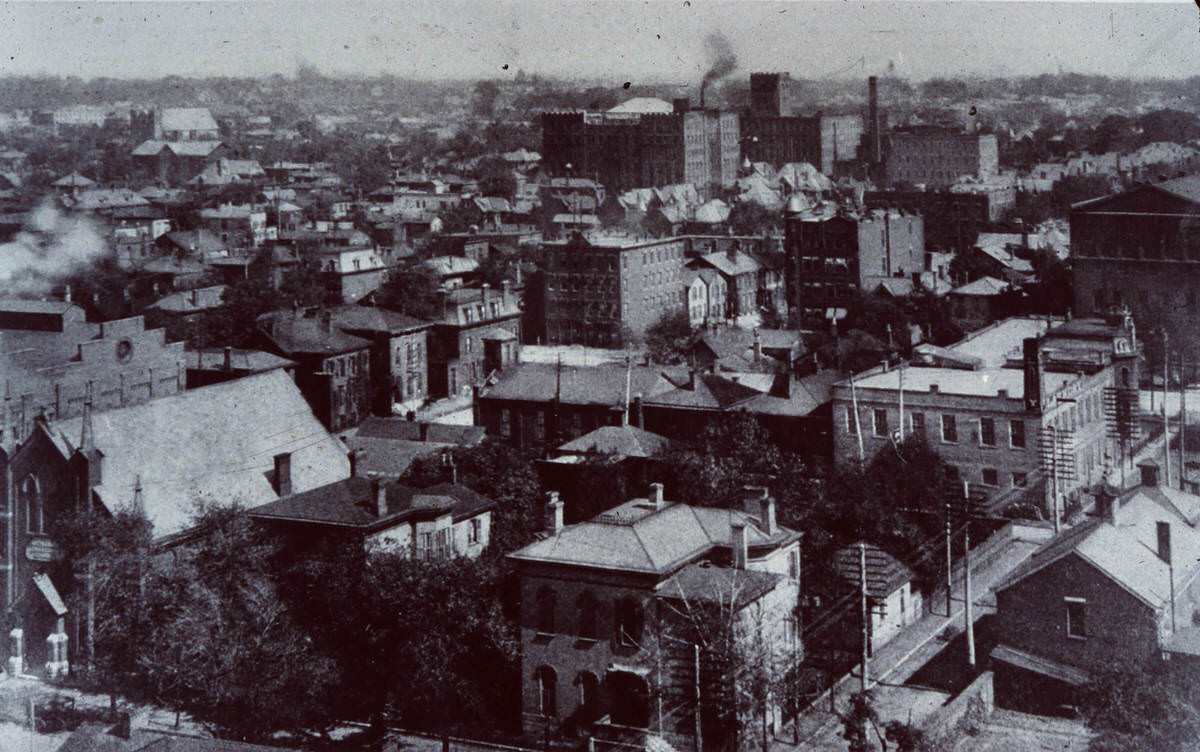
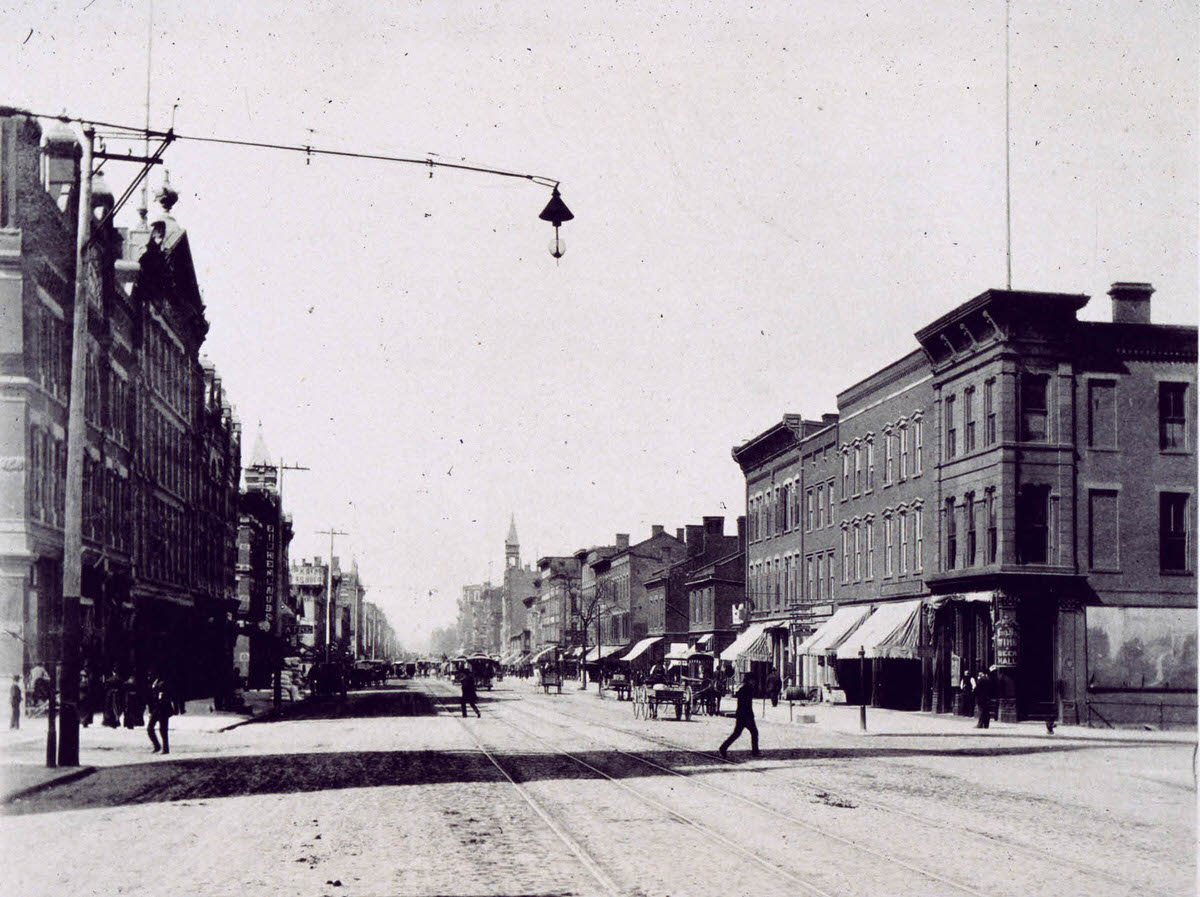
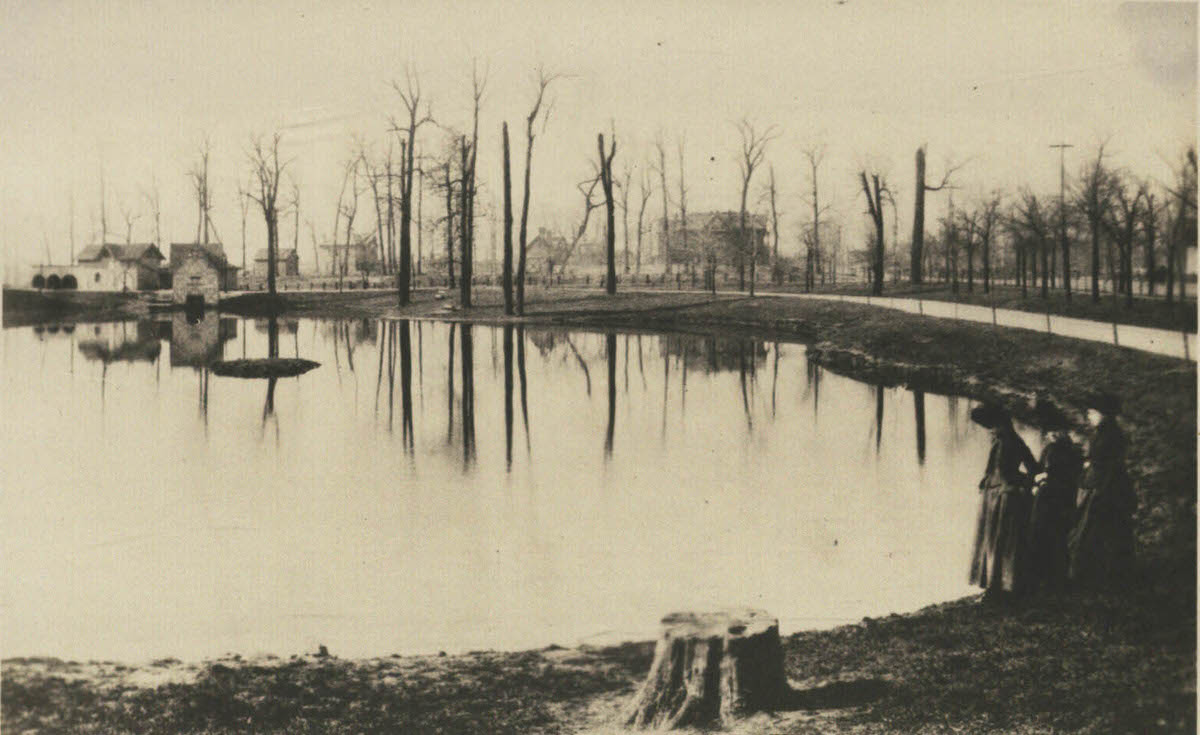
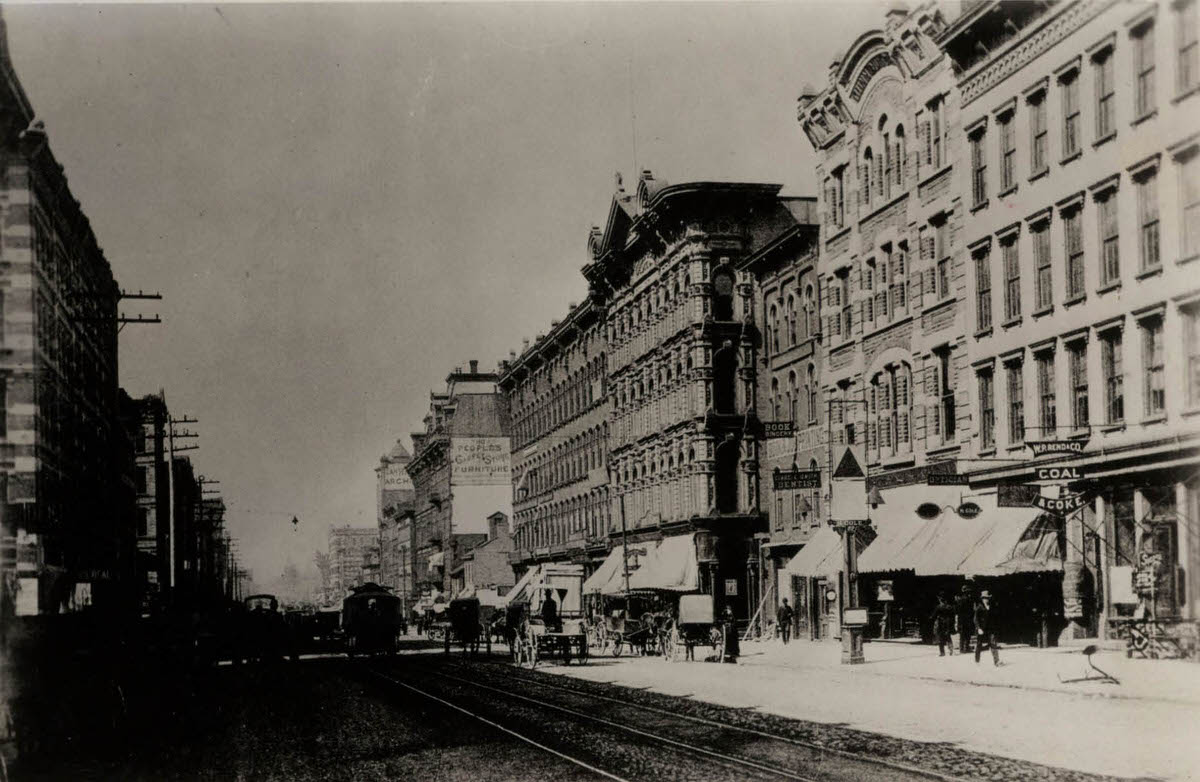
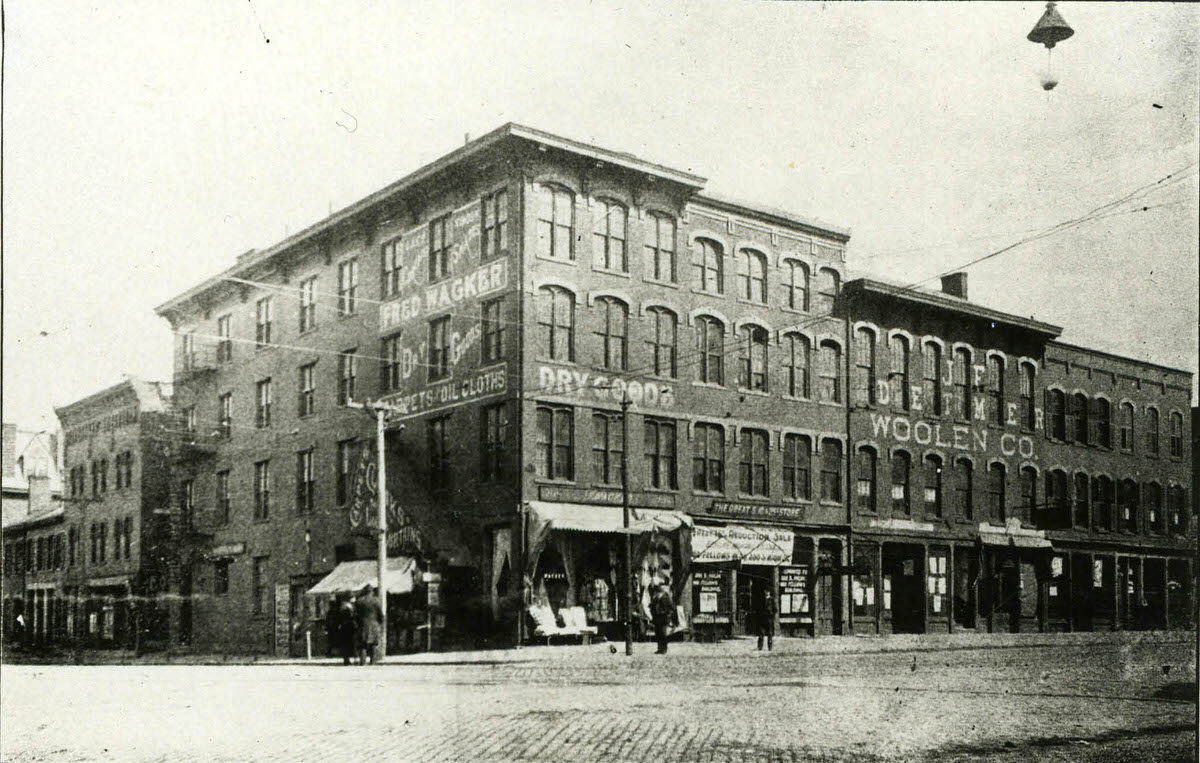
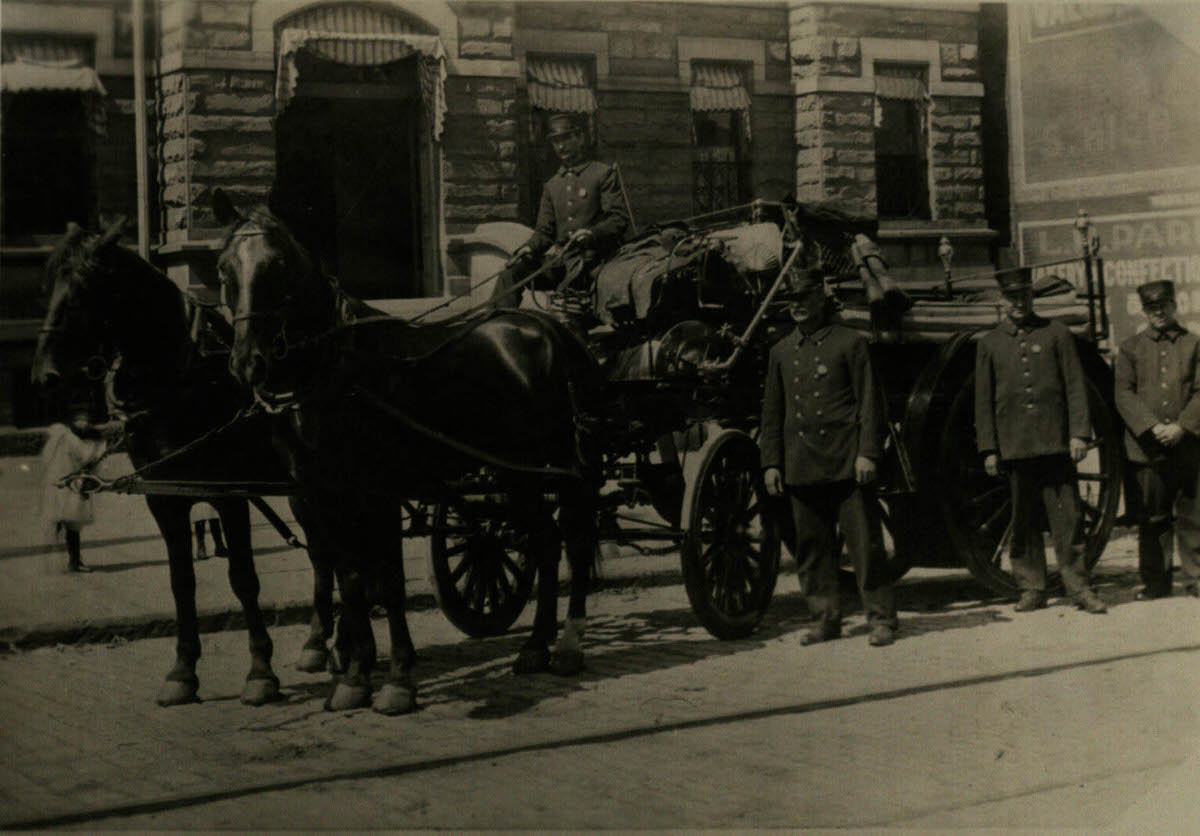
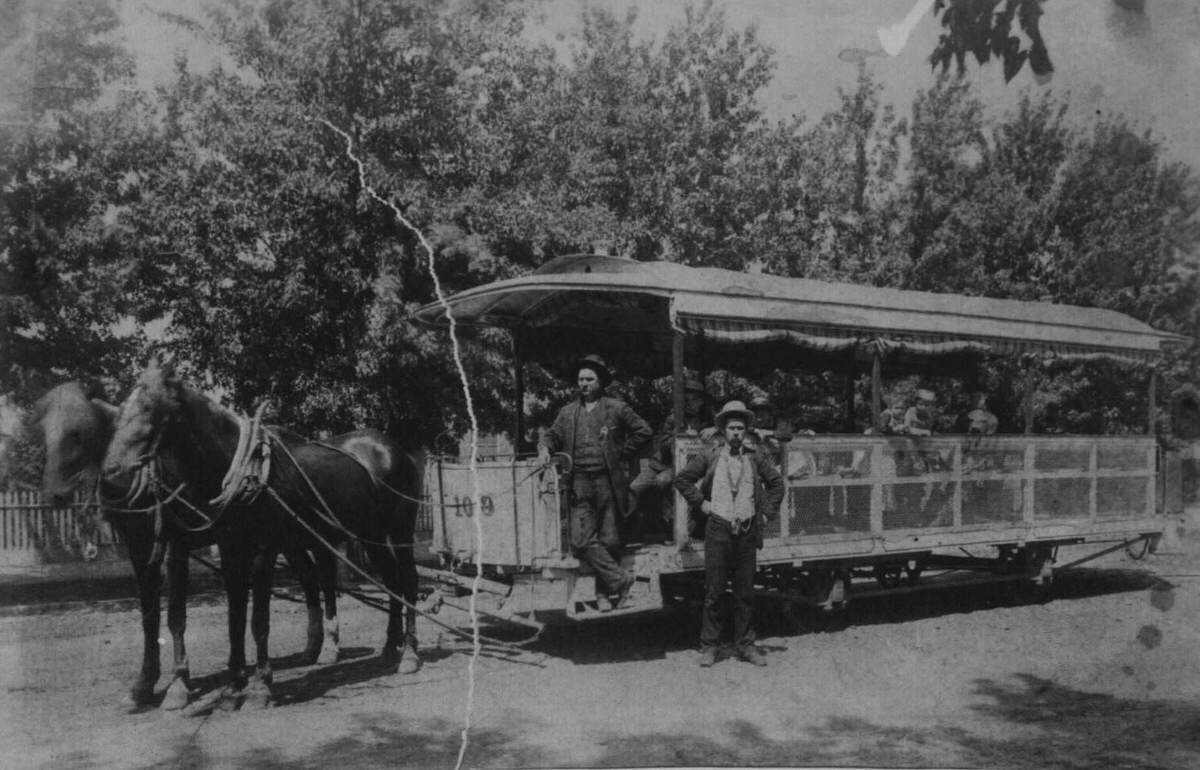
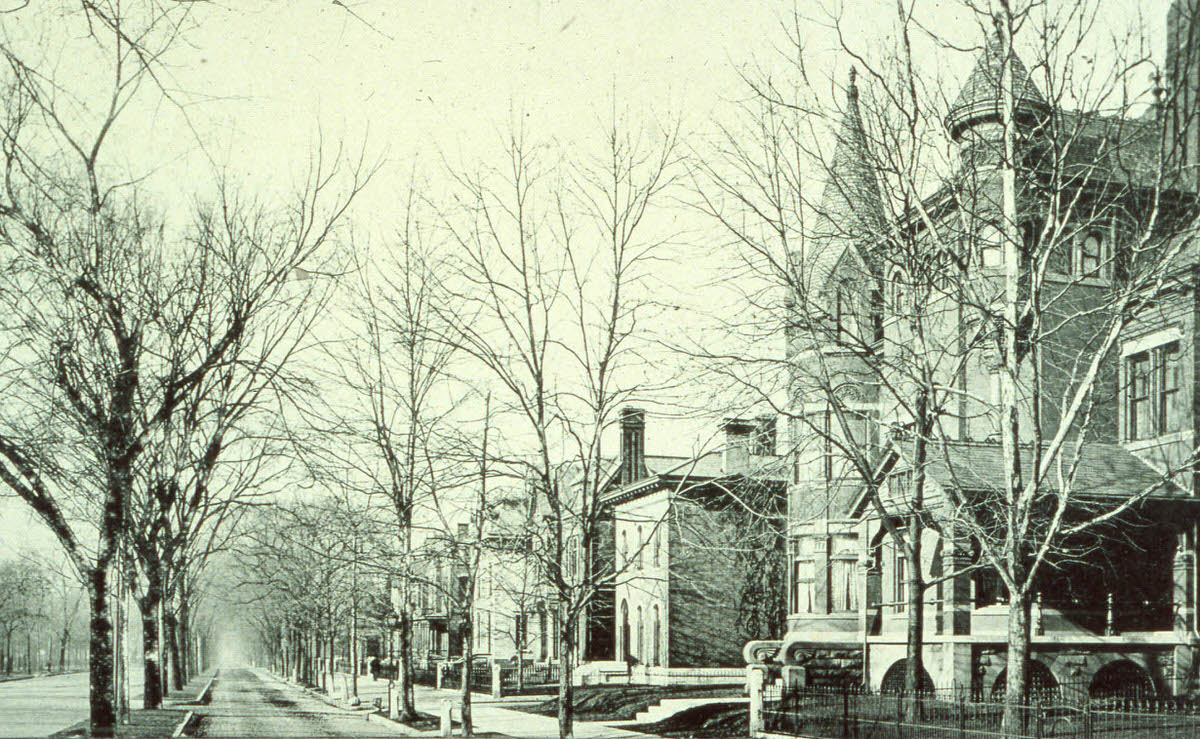
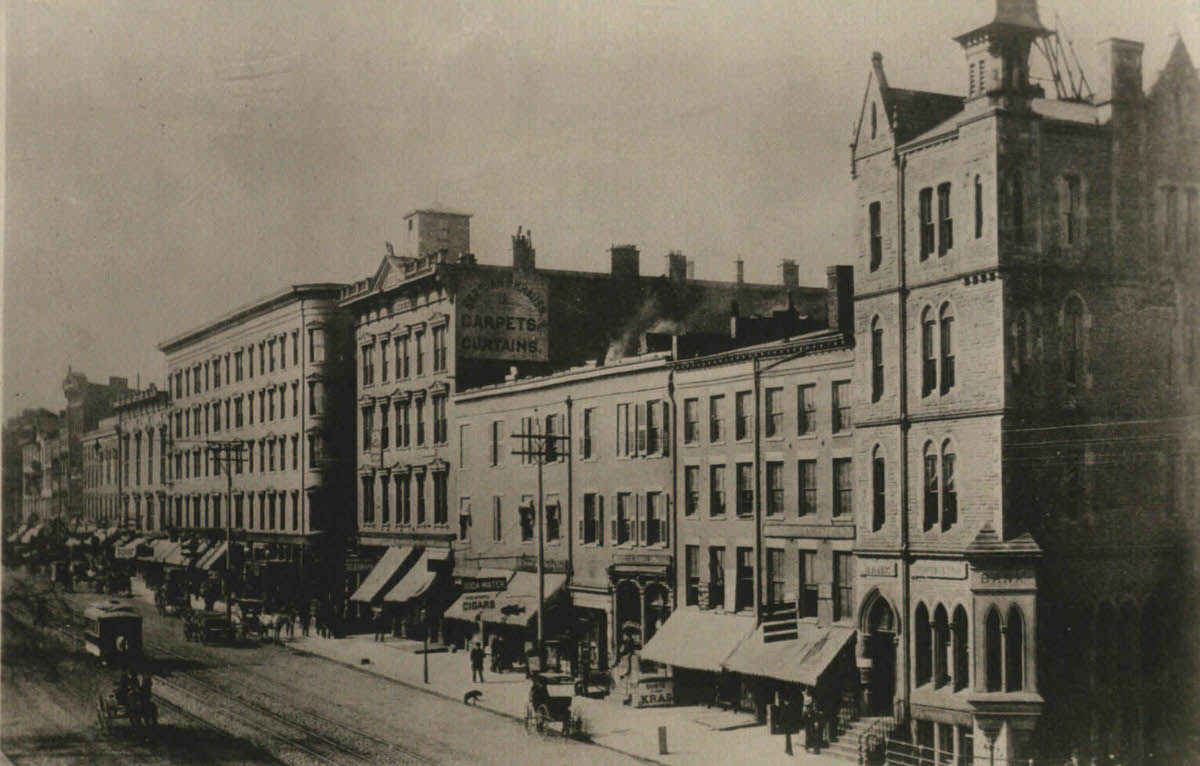
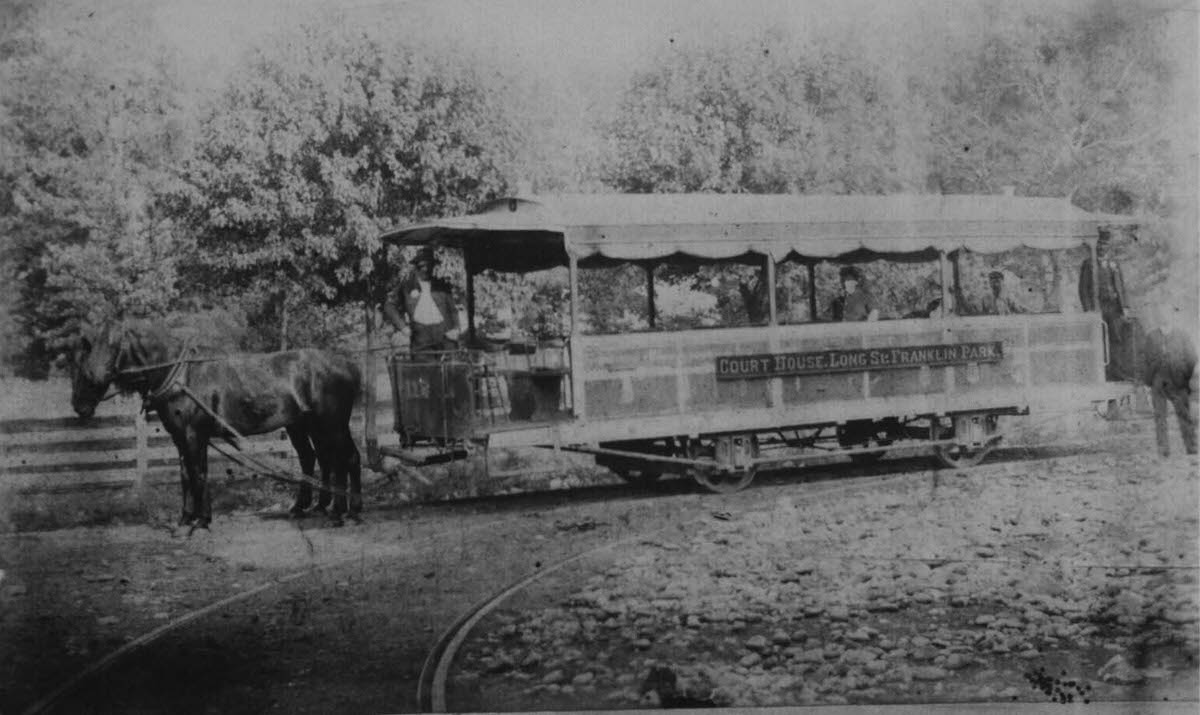
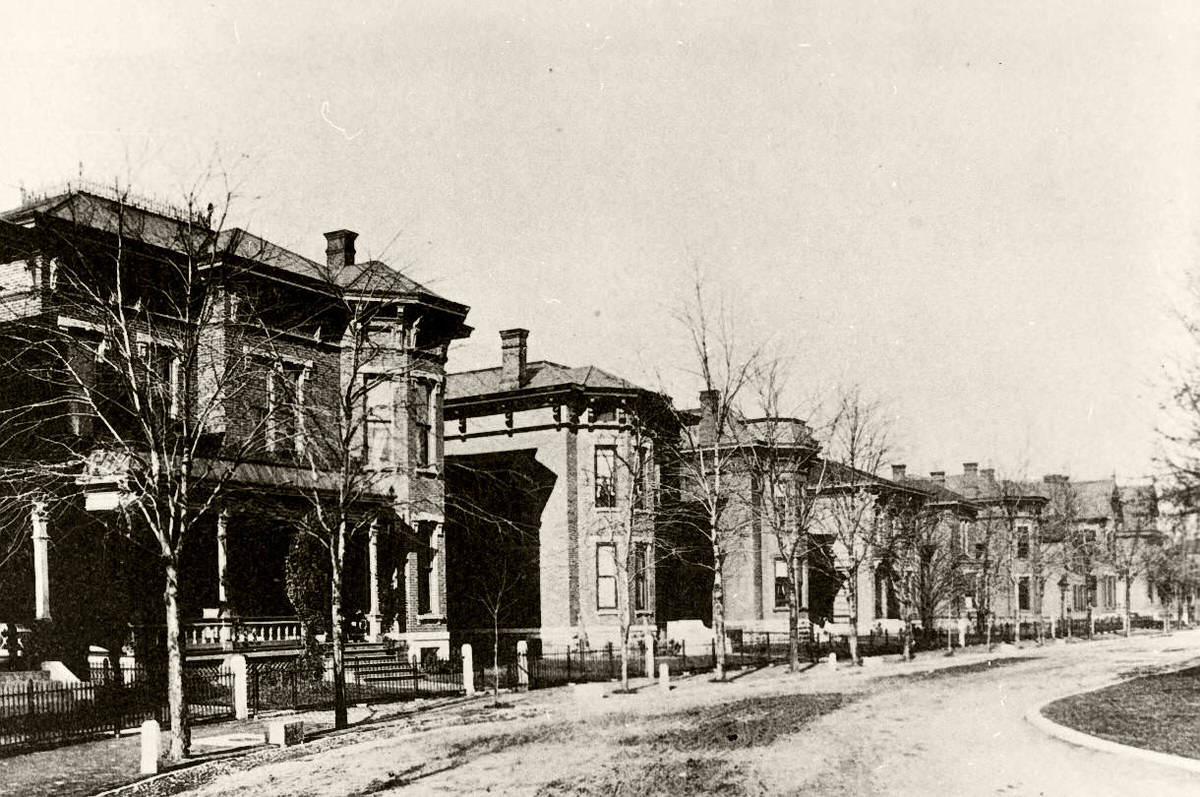
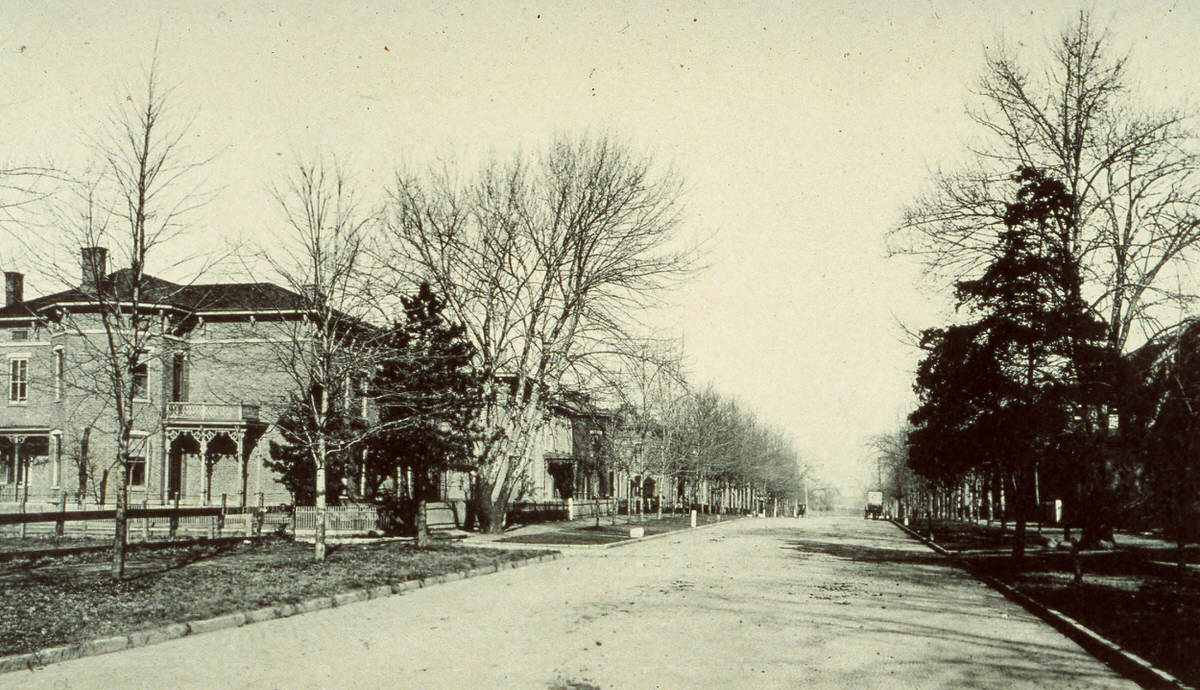
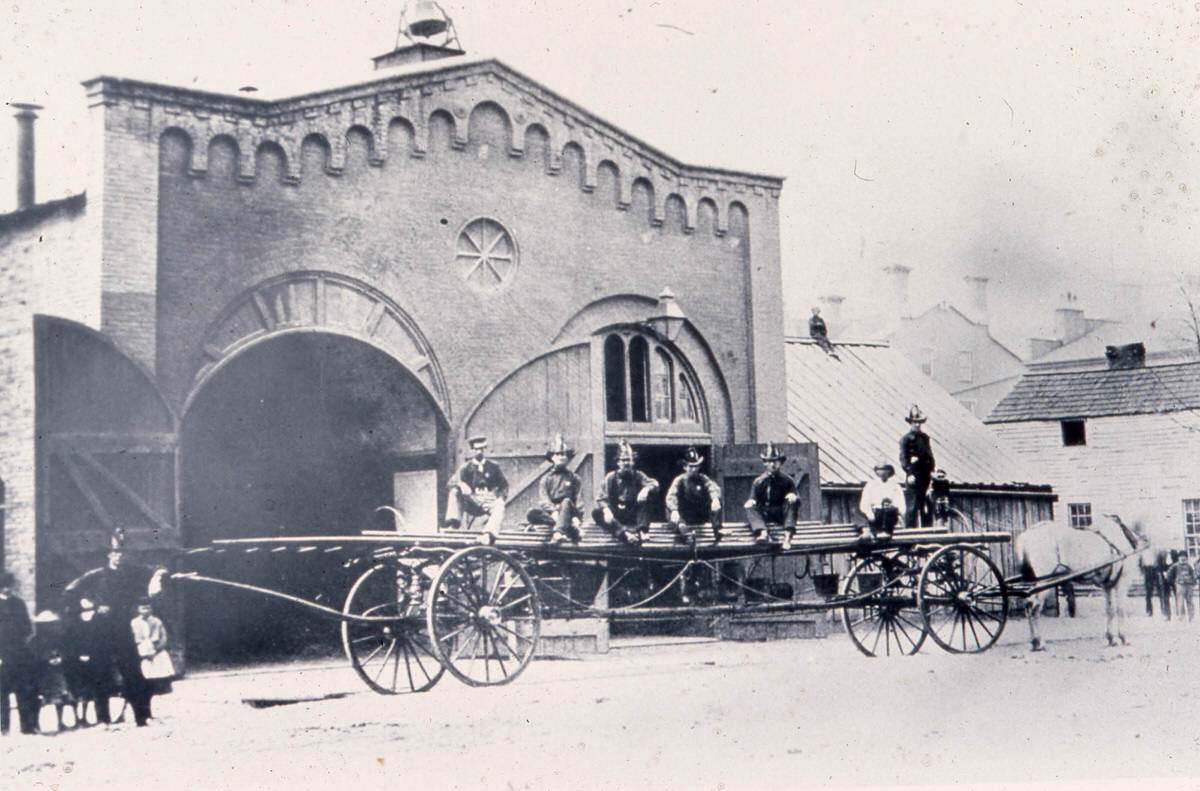
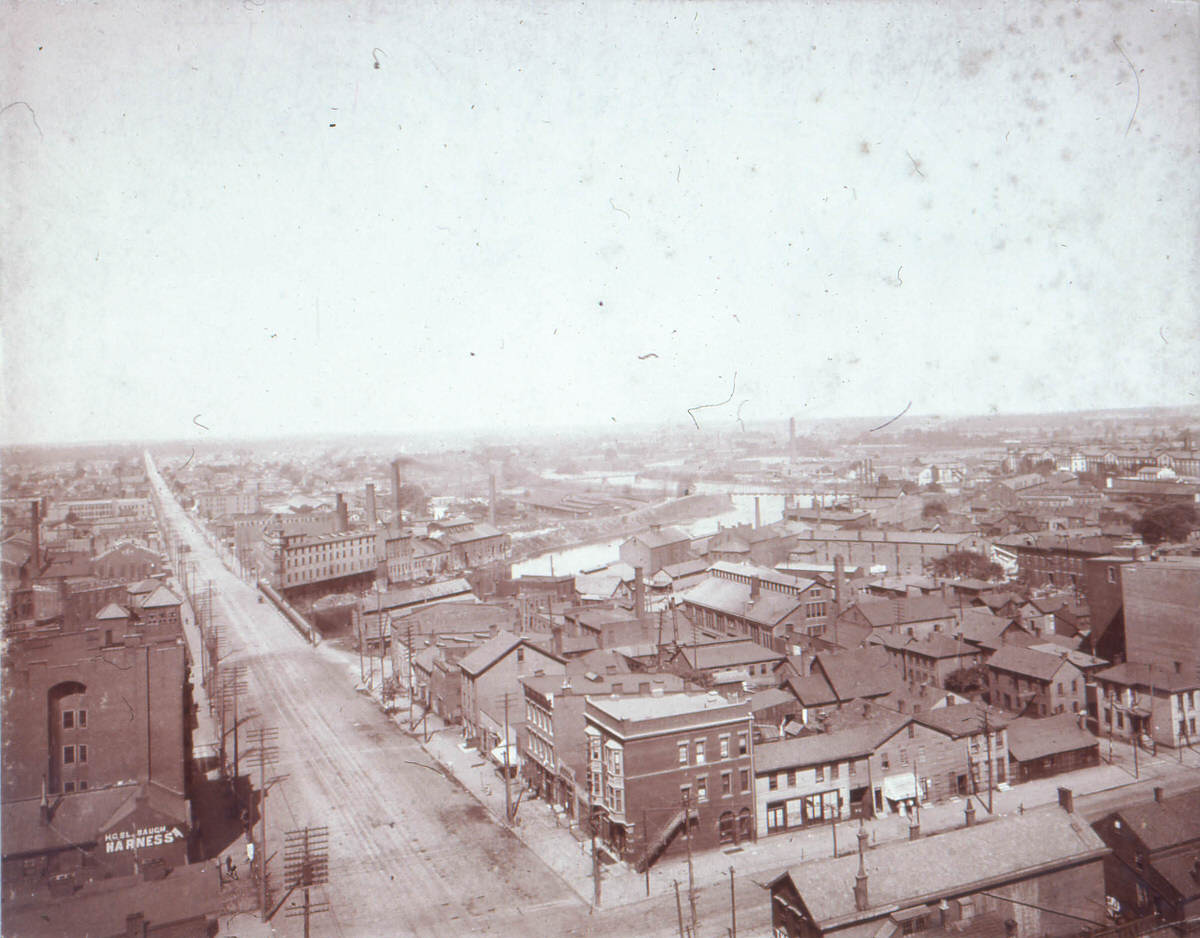
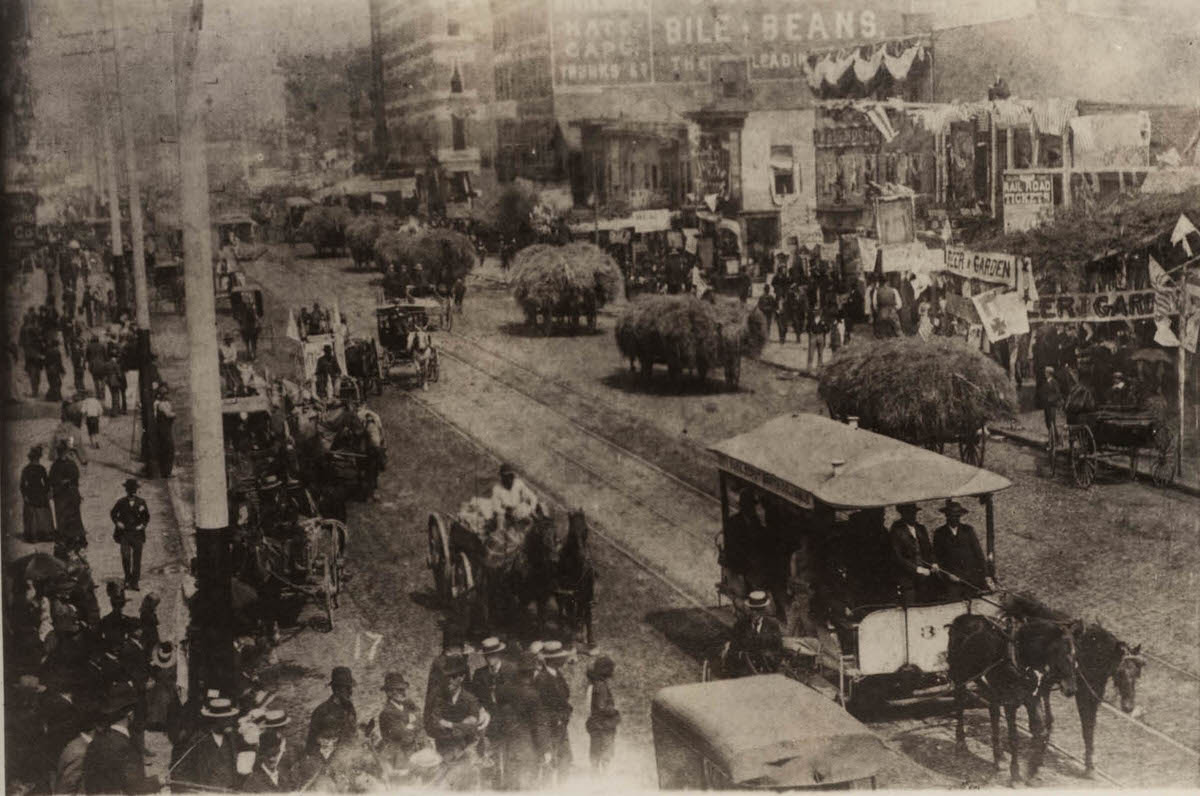
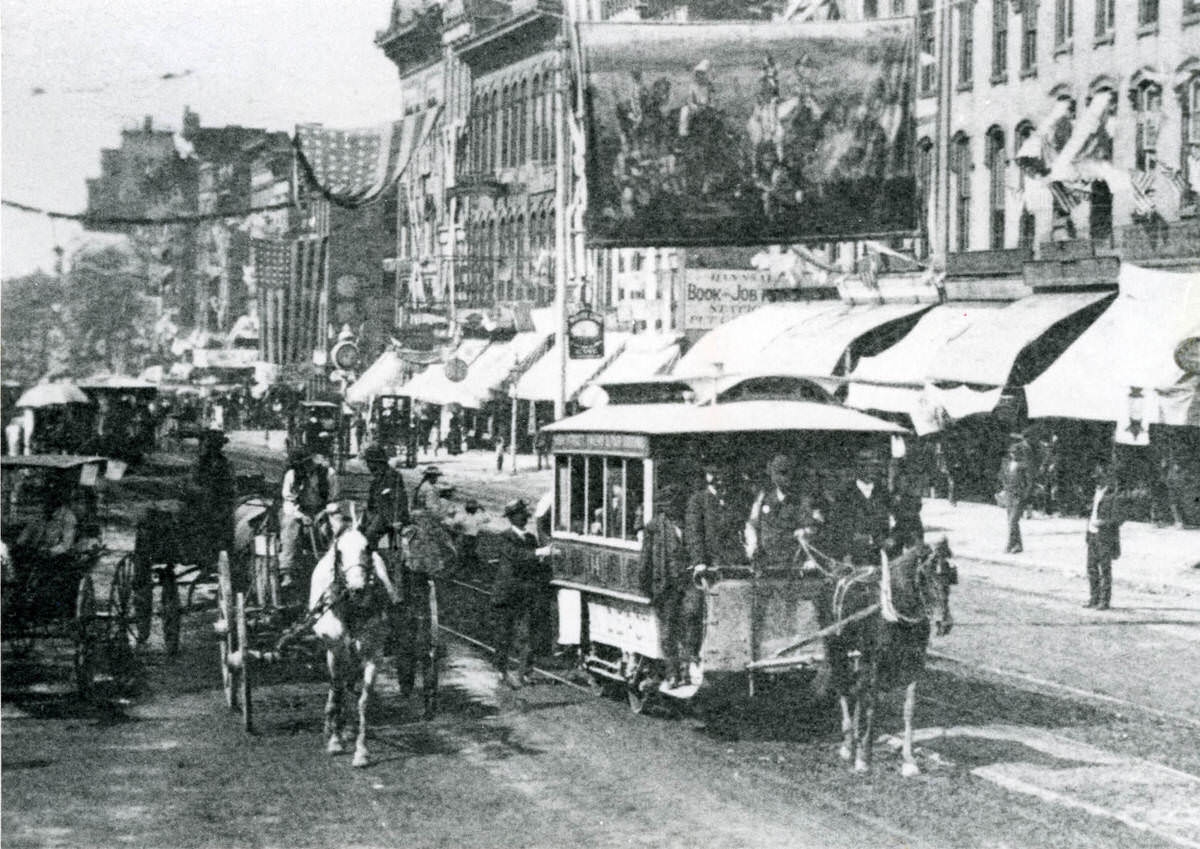
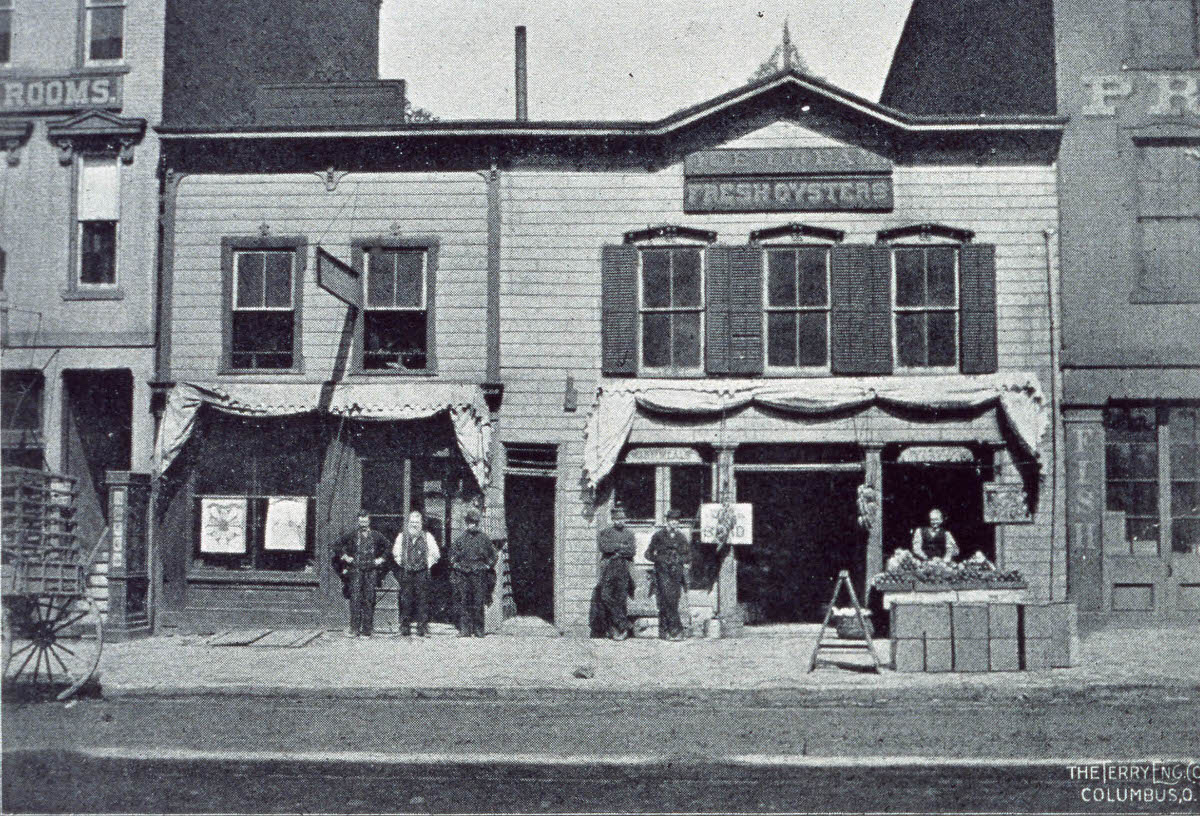

I am so confused by the references to Fresh Oysters. In Columbus. In the 1800s.
It’s too bad there are no addresses on these, whether they’re demolished or not.
High & Spring had a beautiful building. It is now a single-story Fedex store with surface parking.
Imbiciles, Deaf and Dumb, Feeble Minded, Friendless…